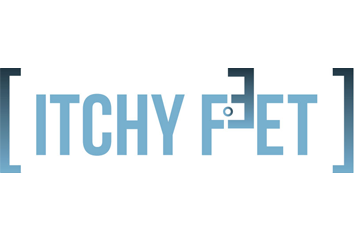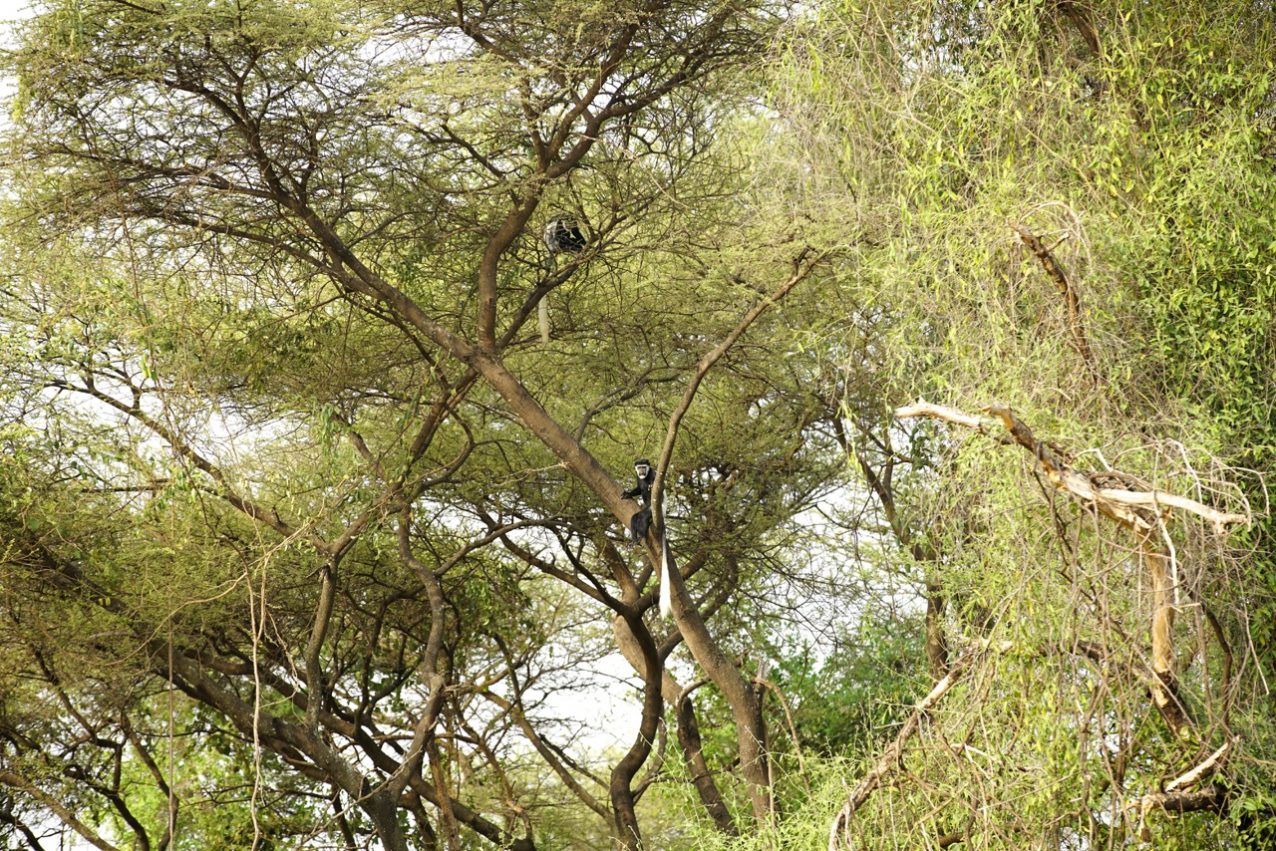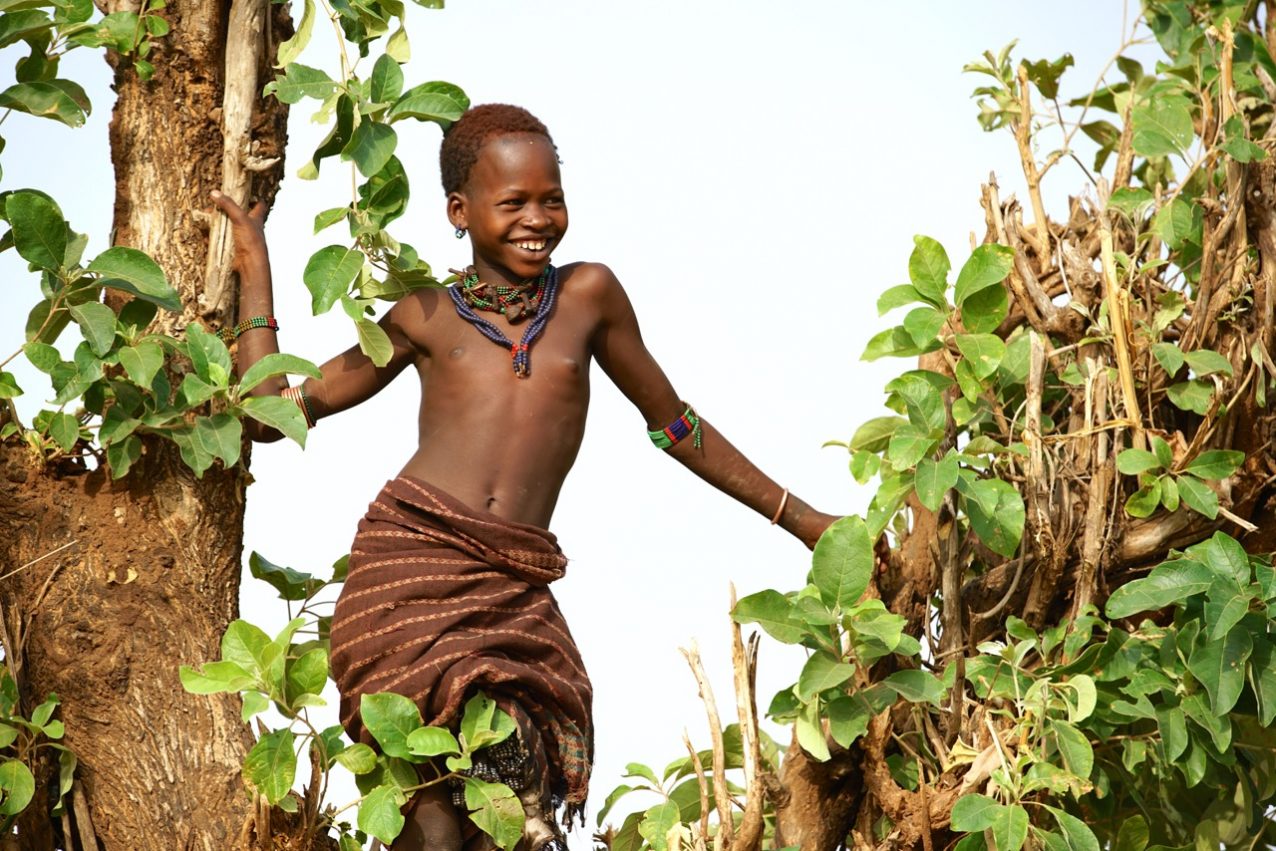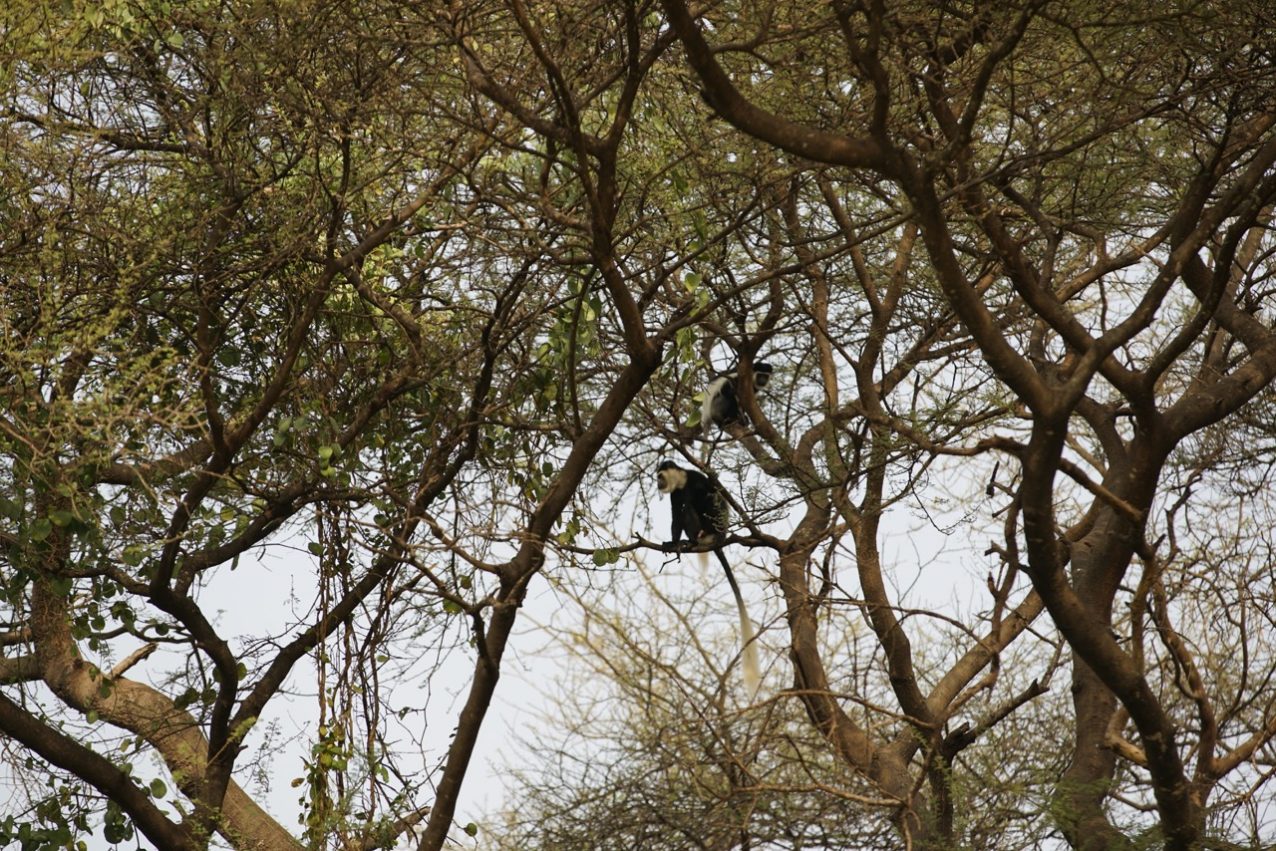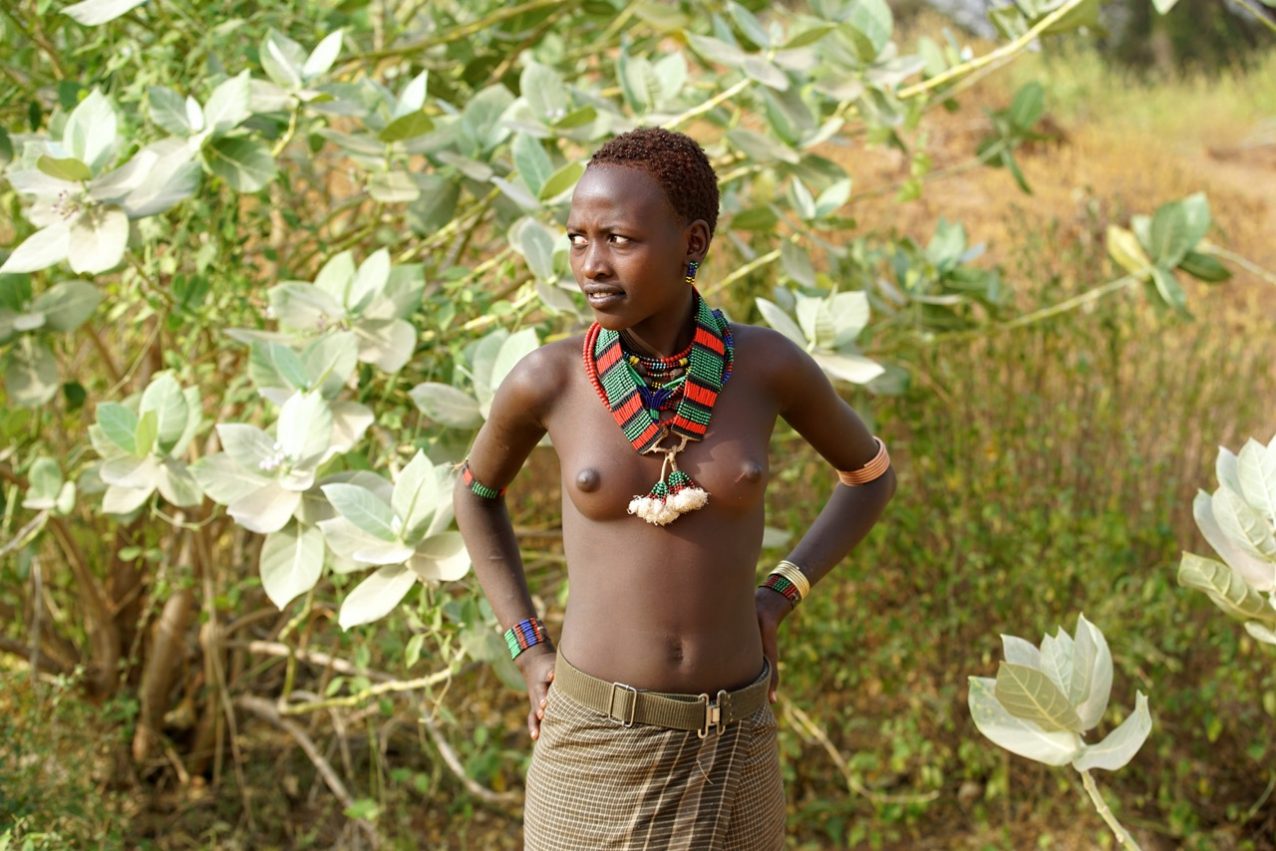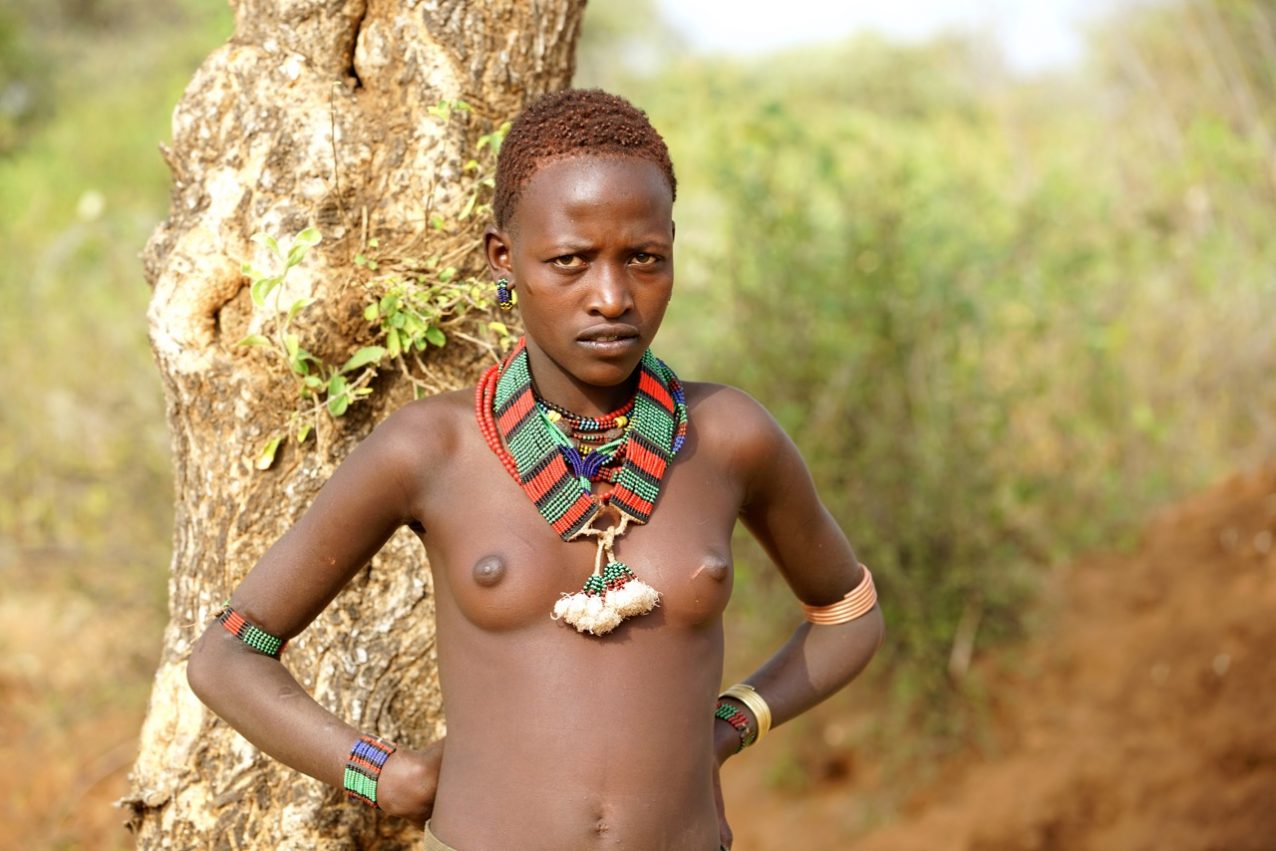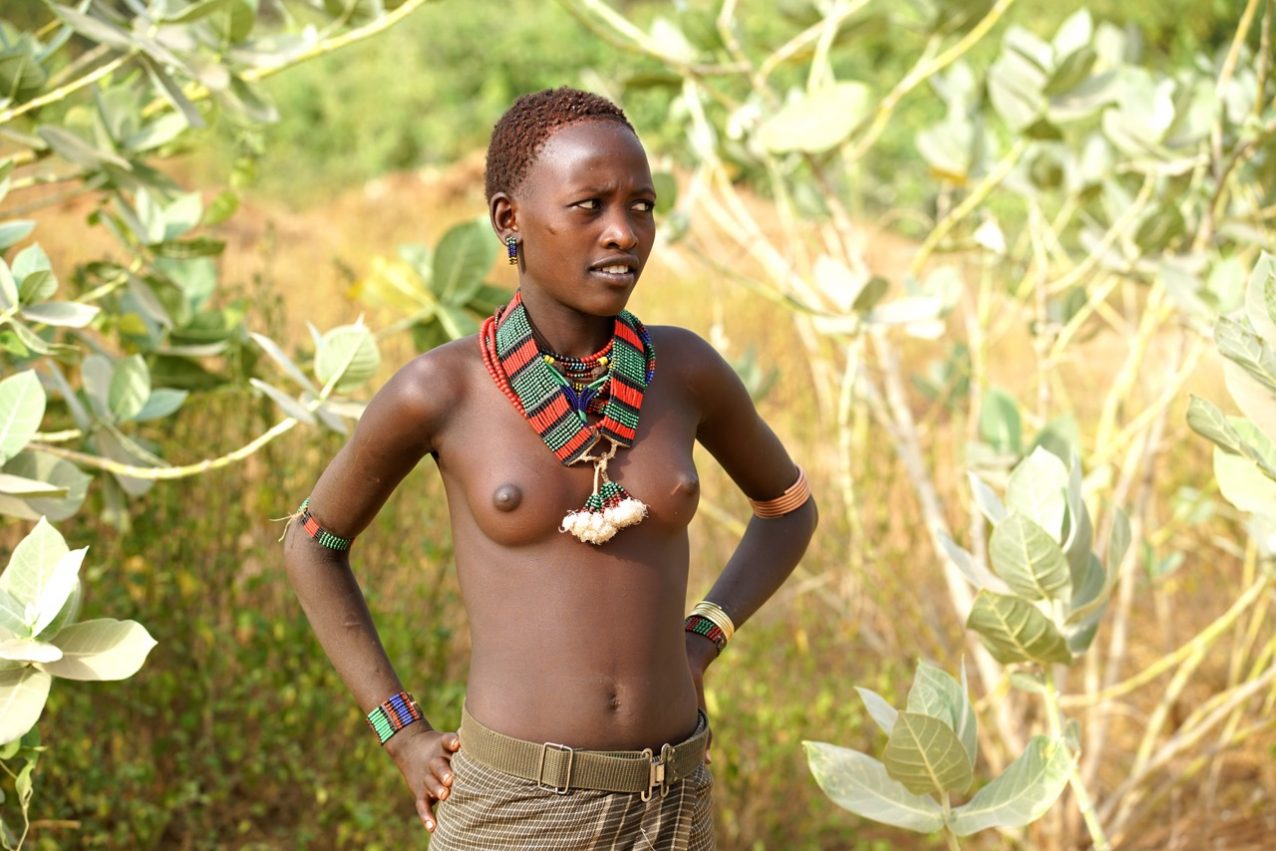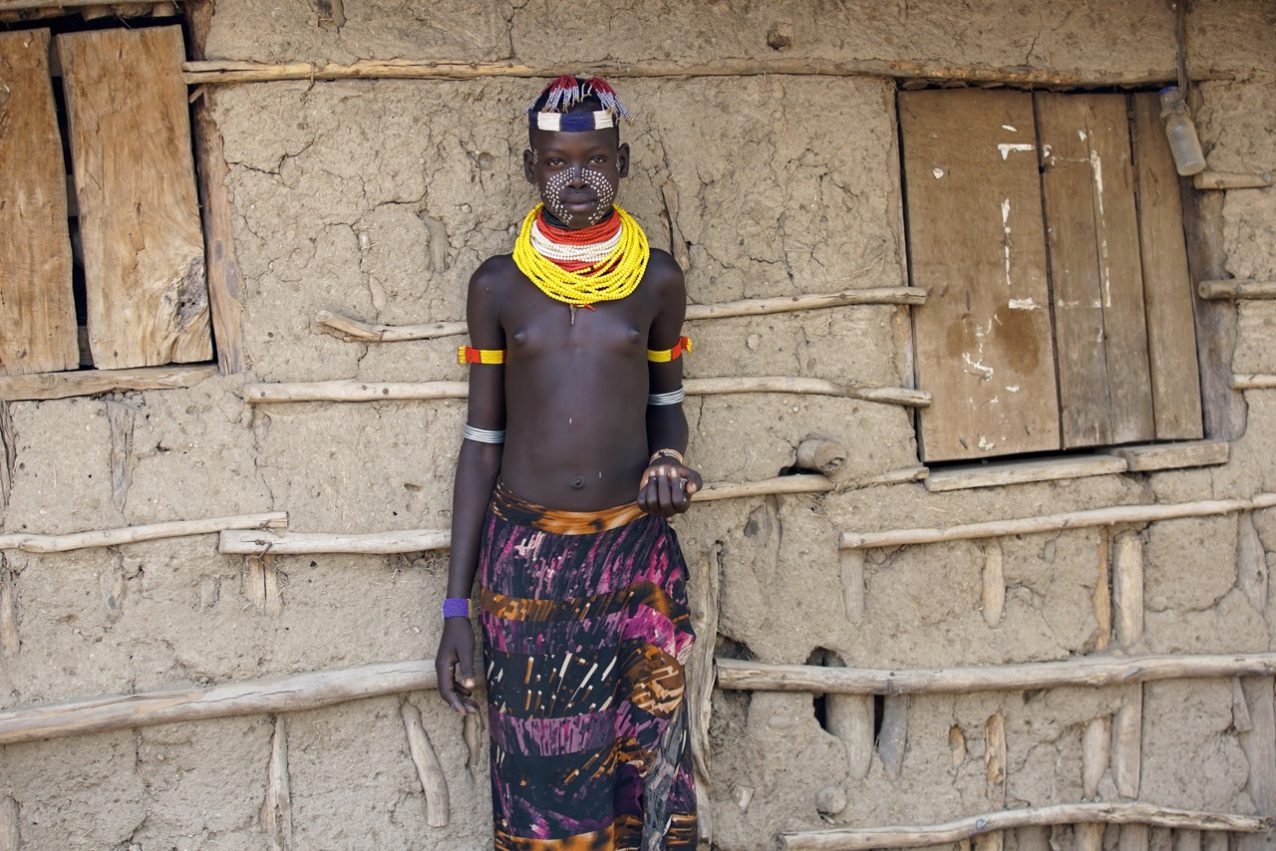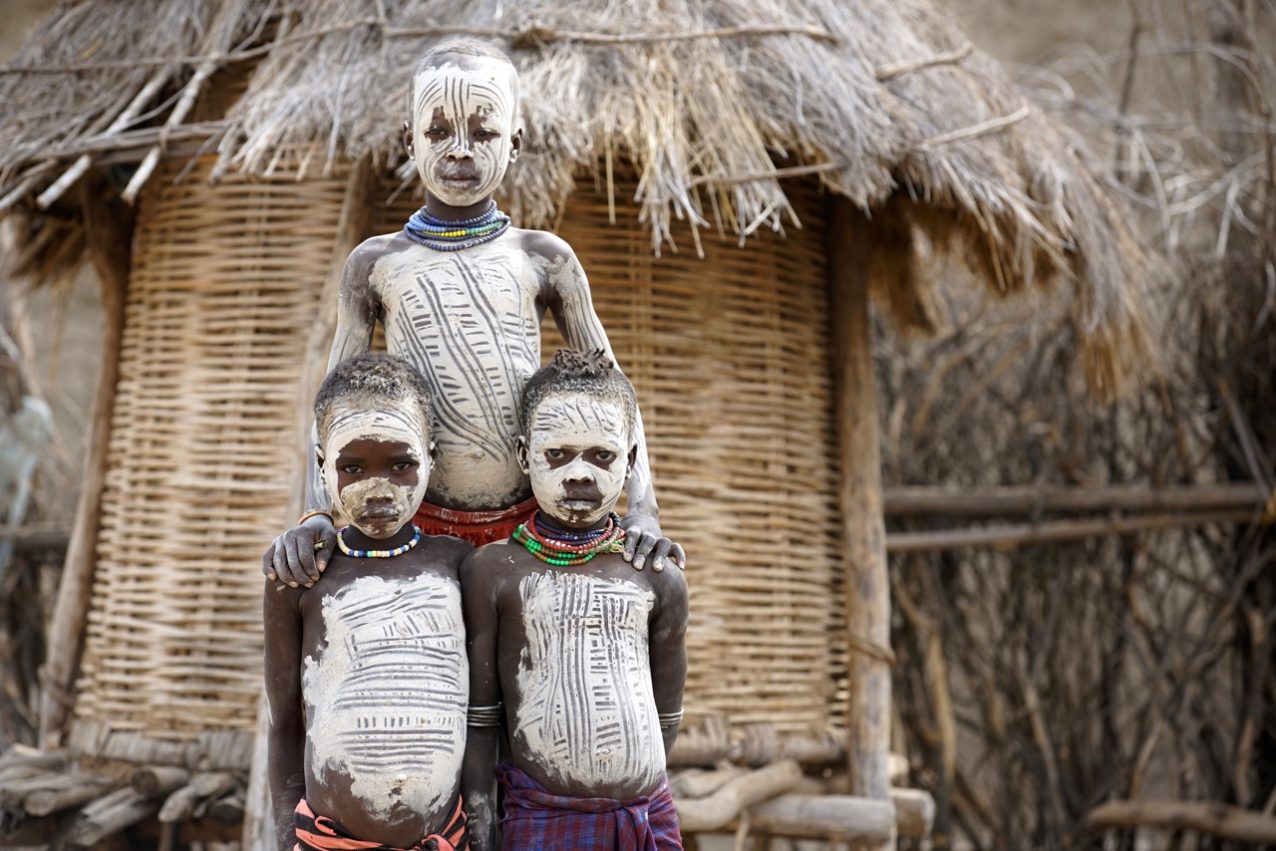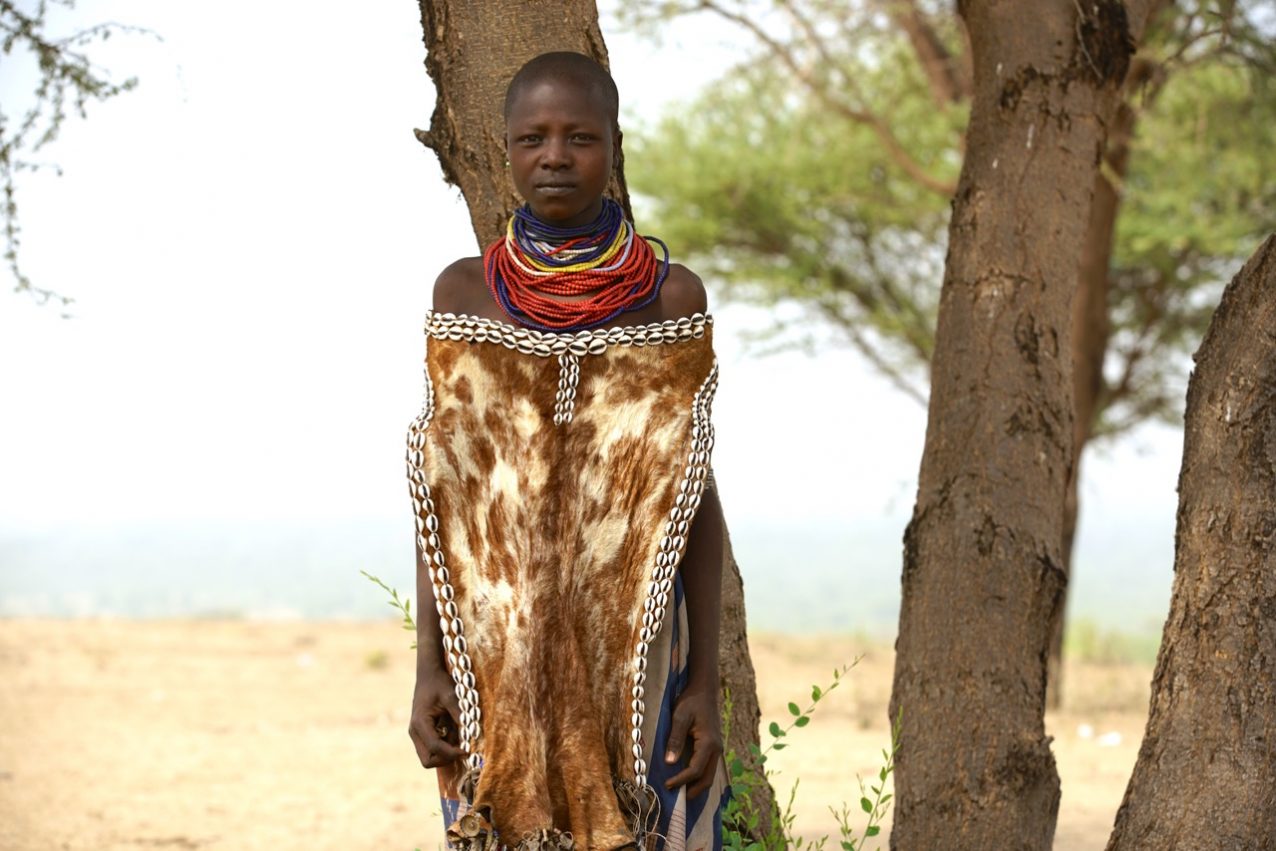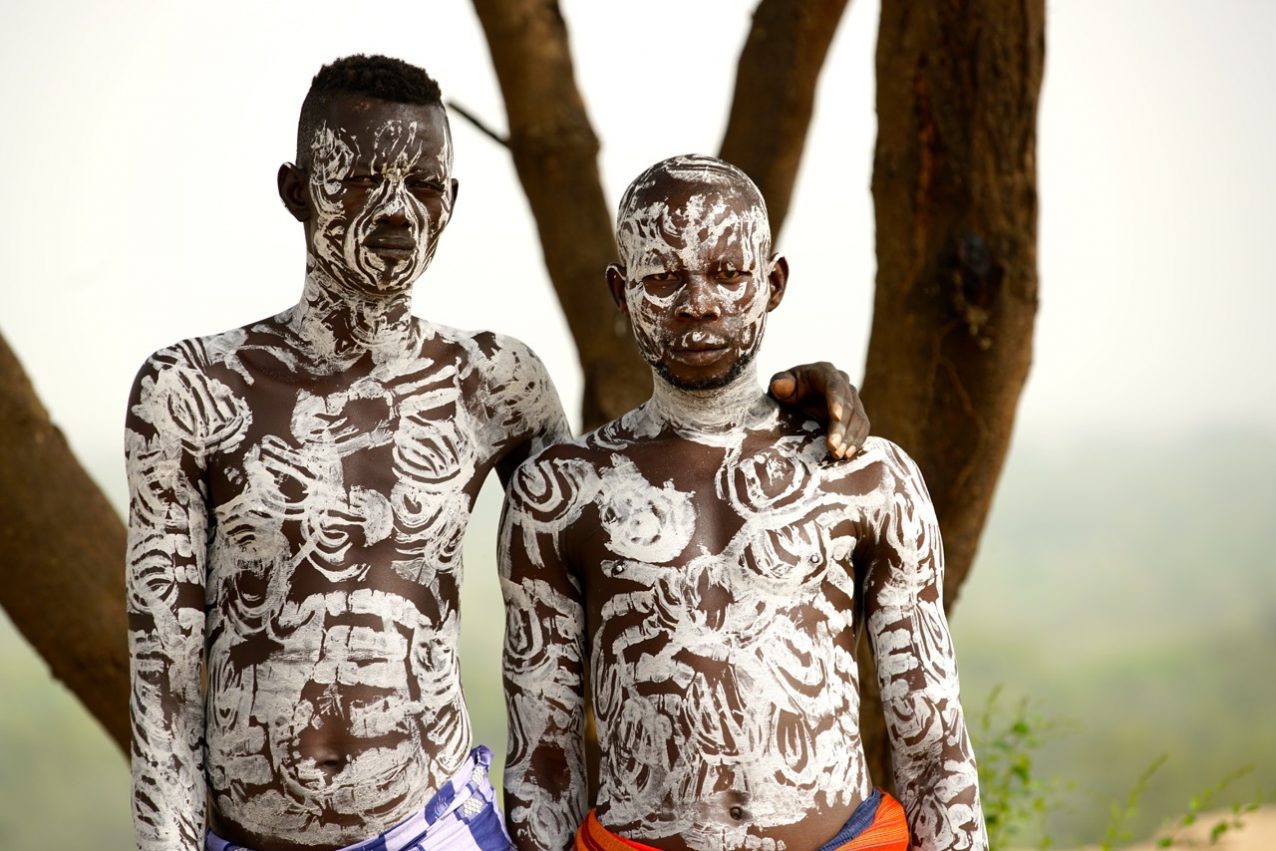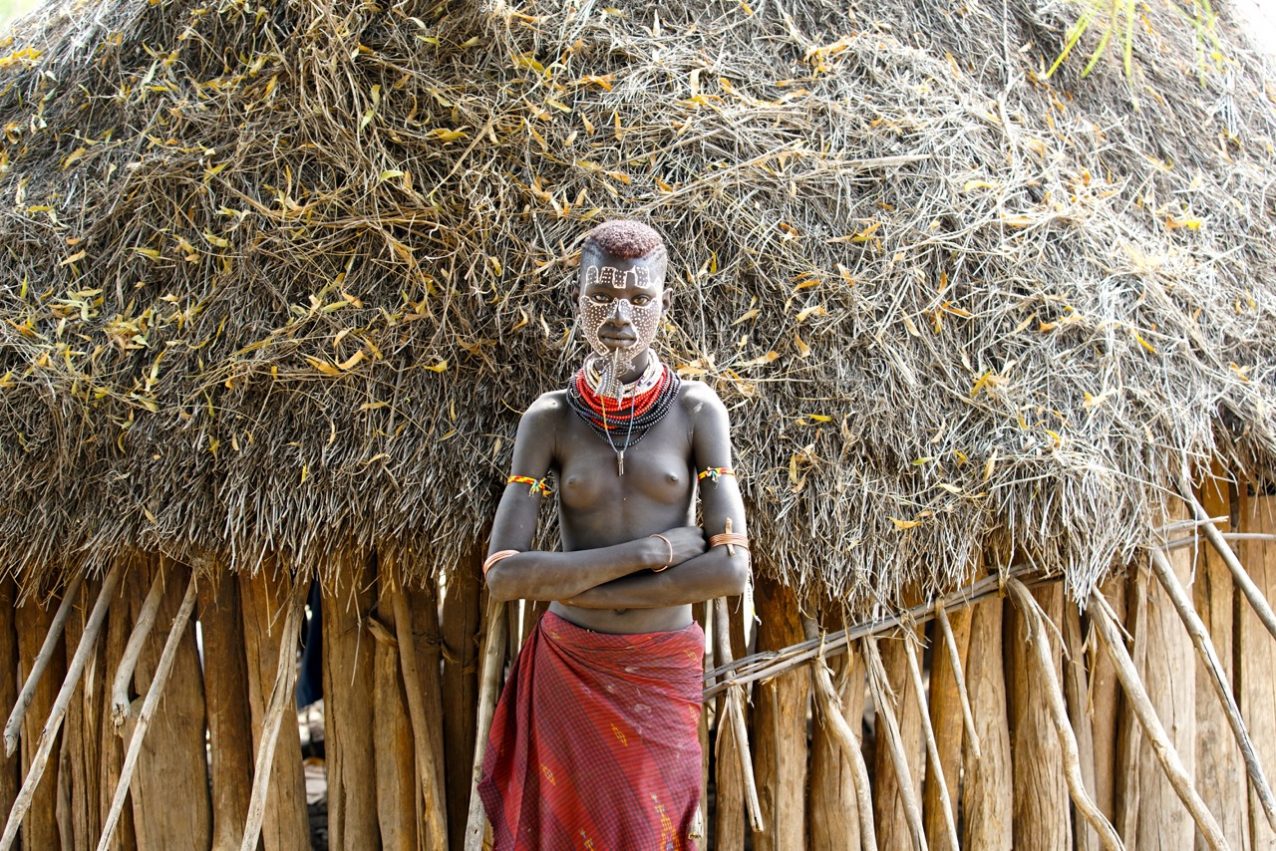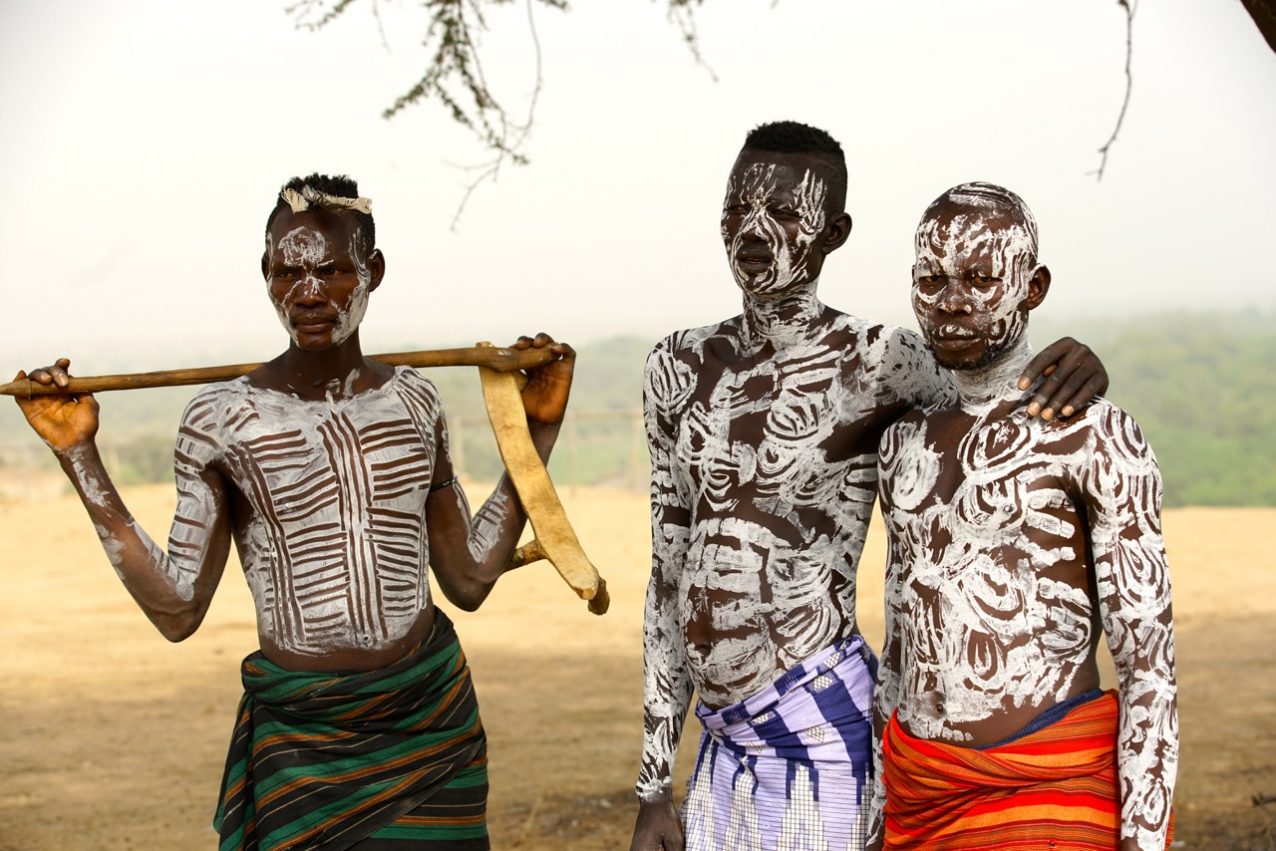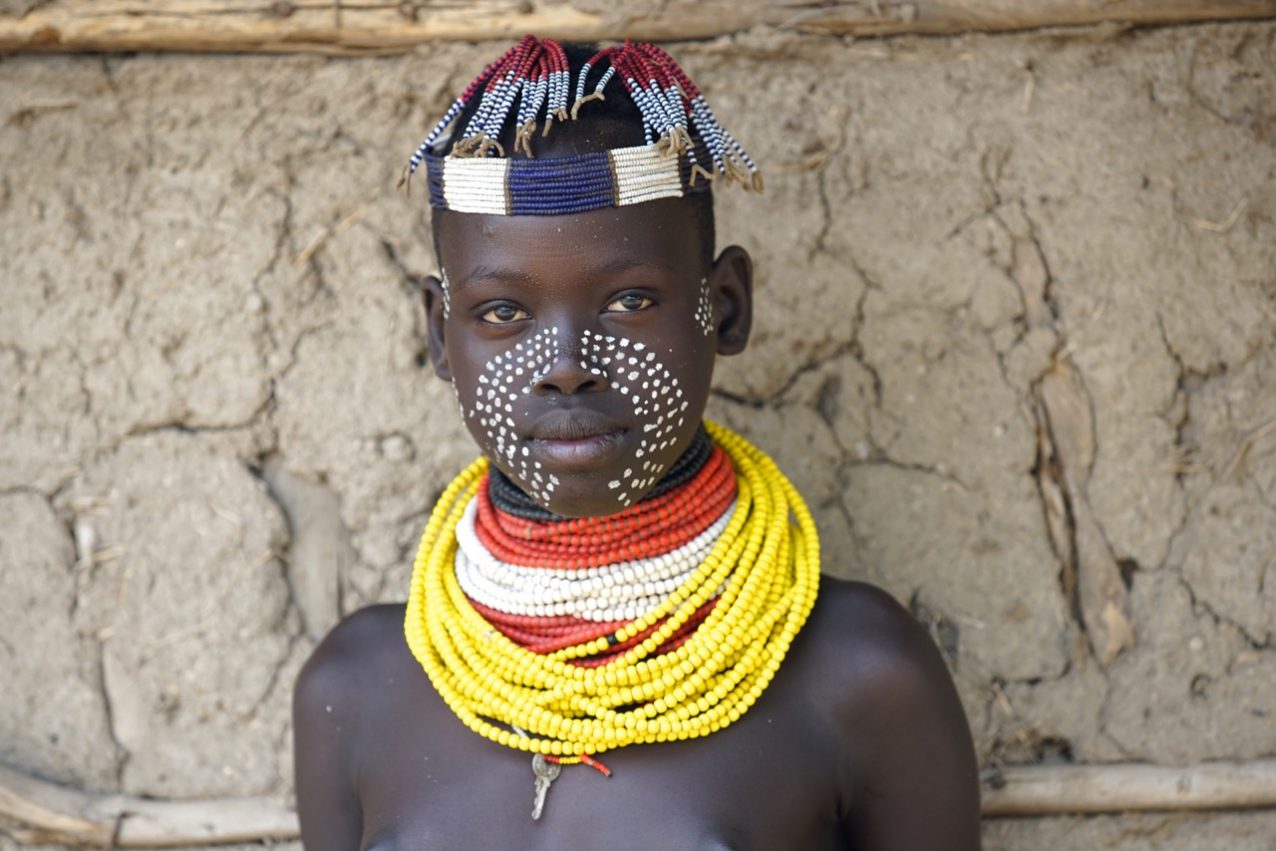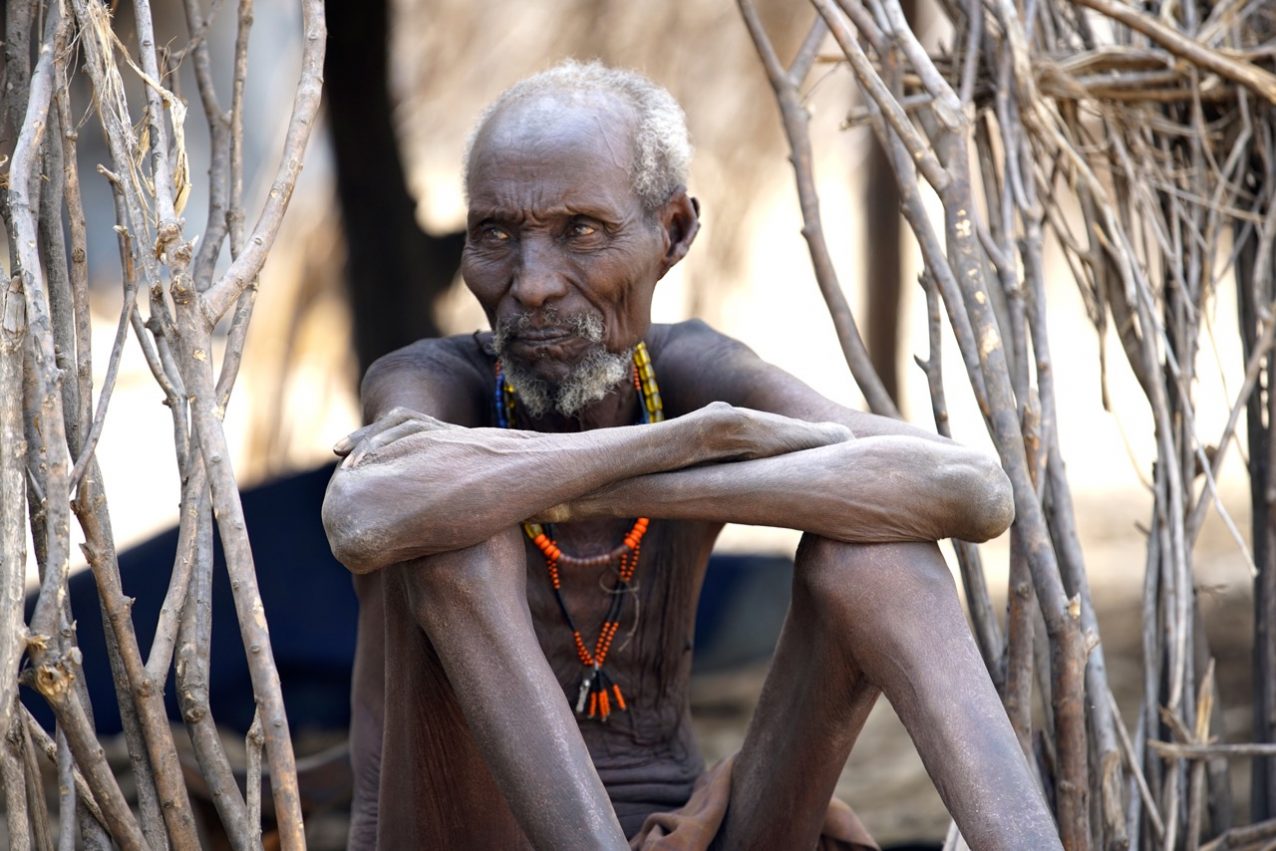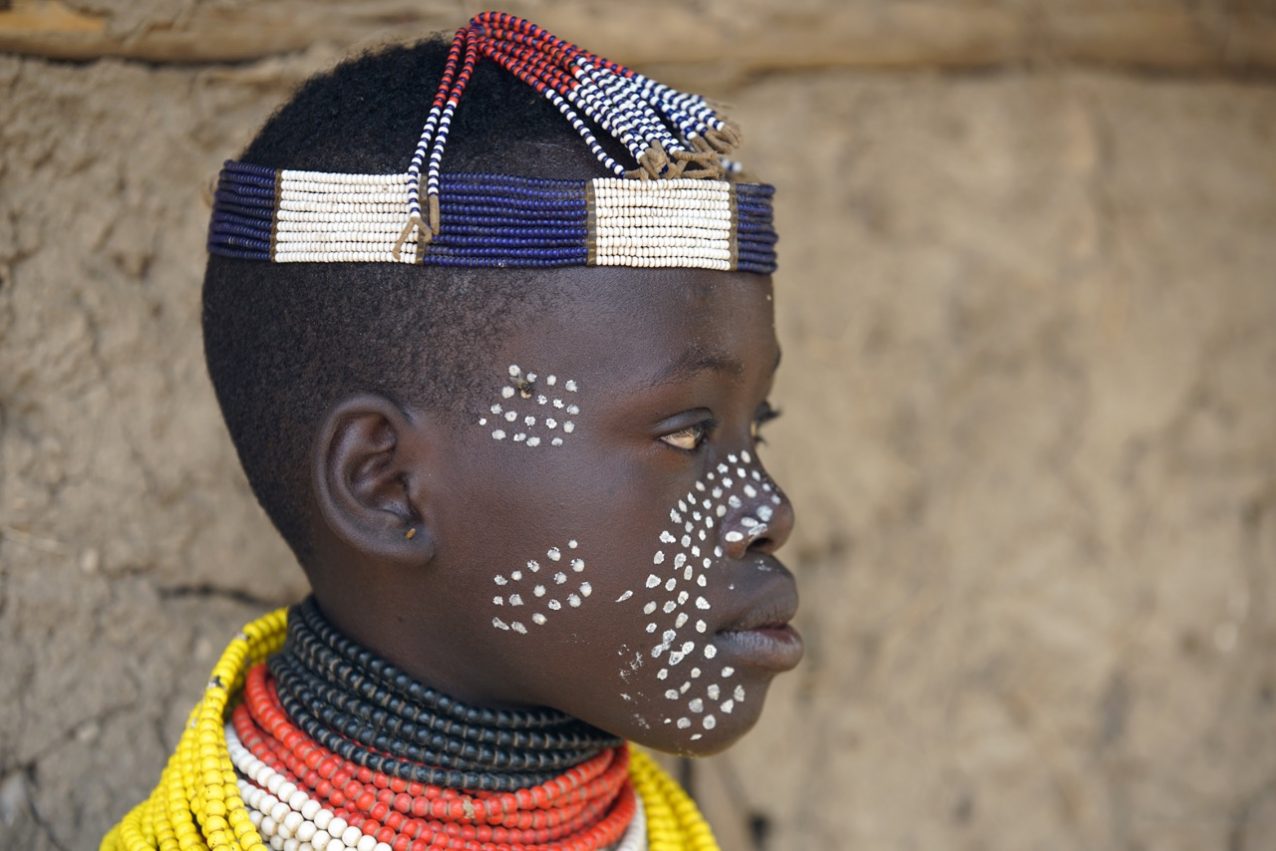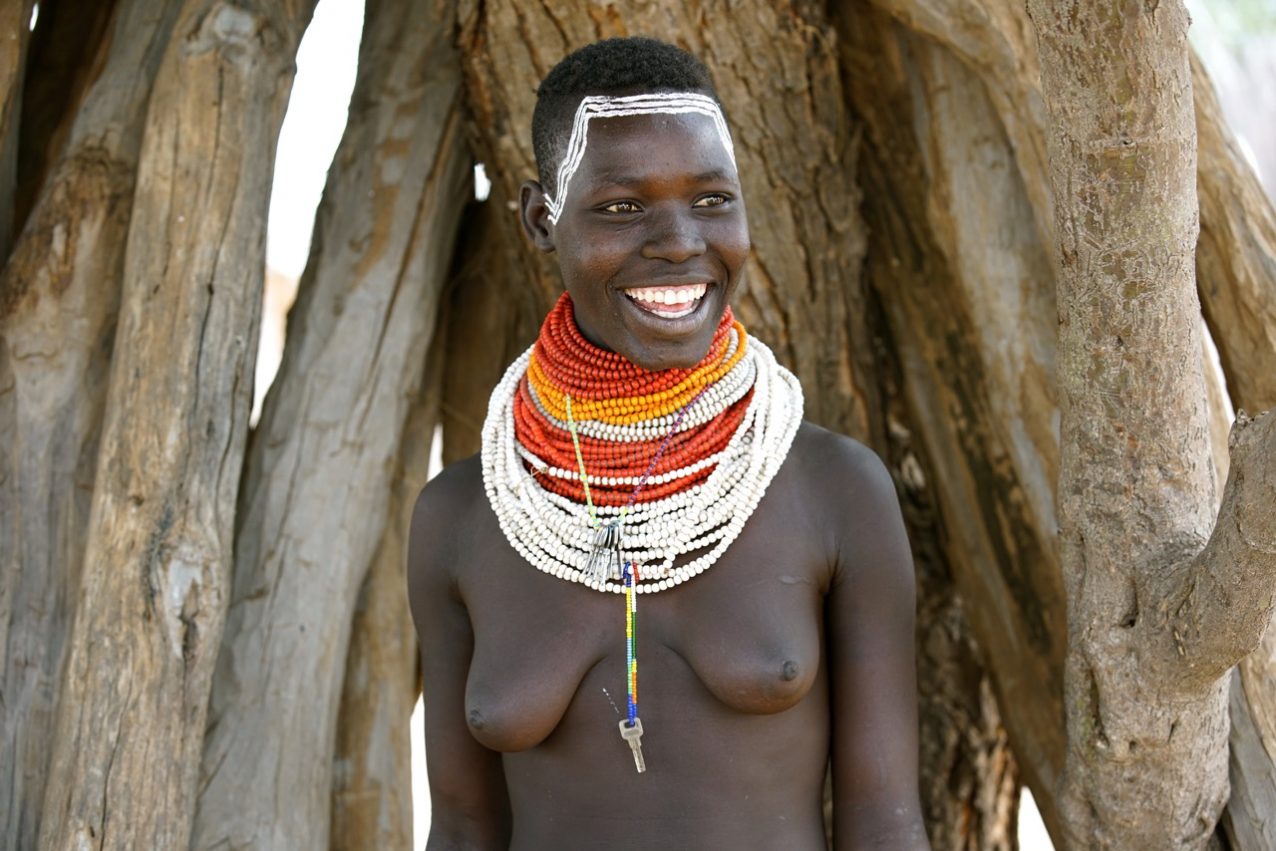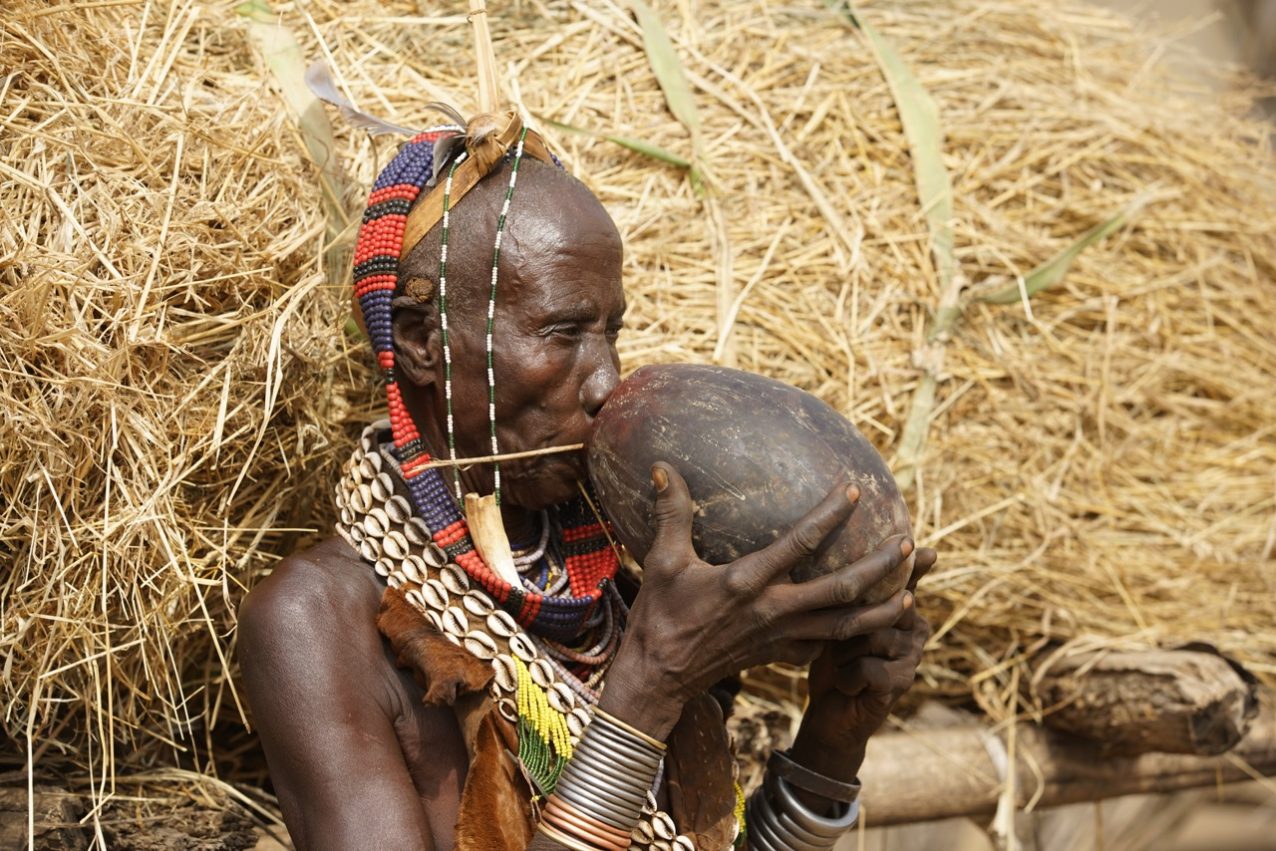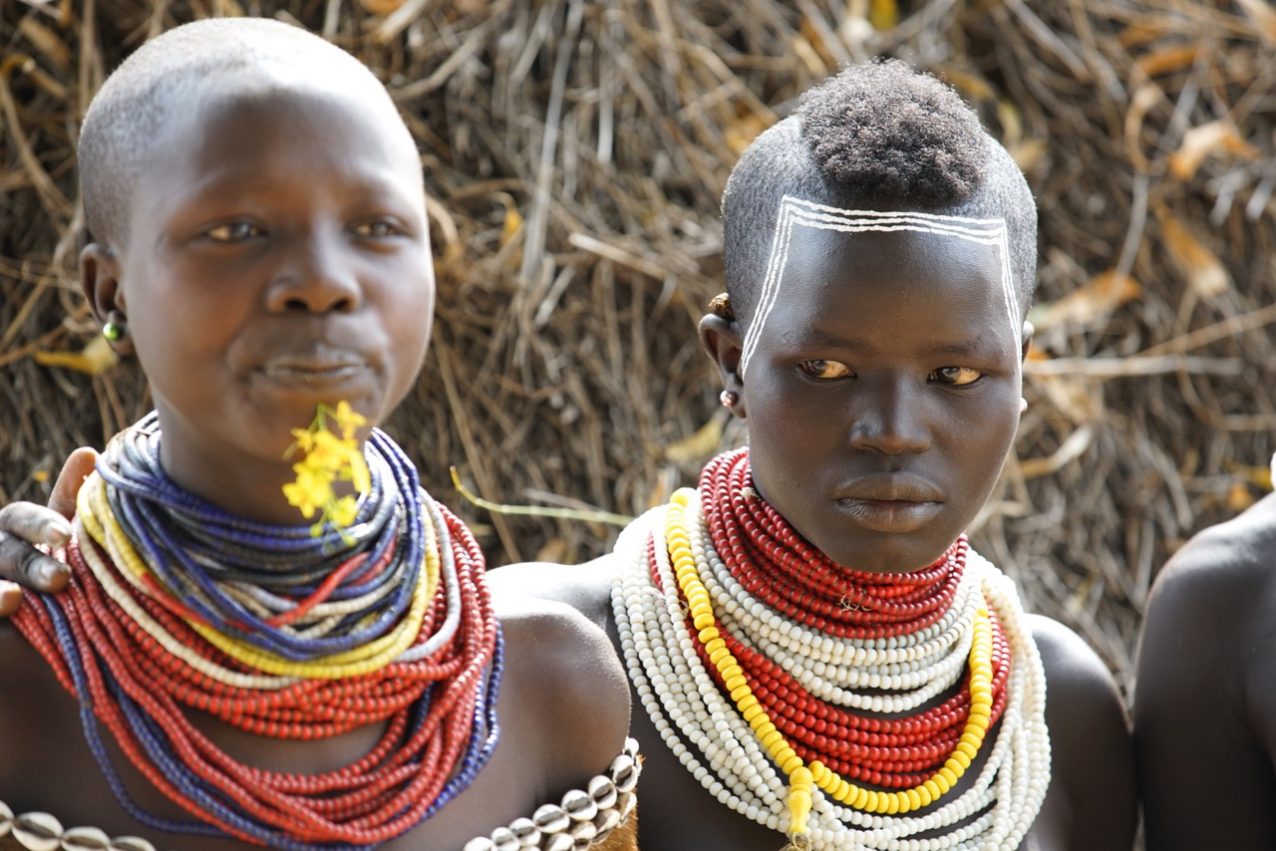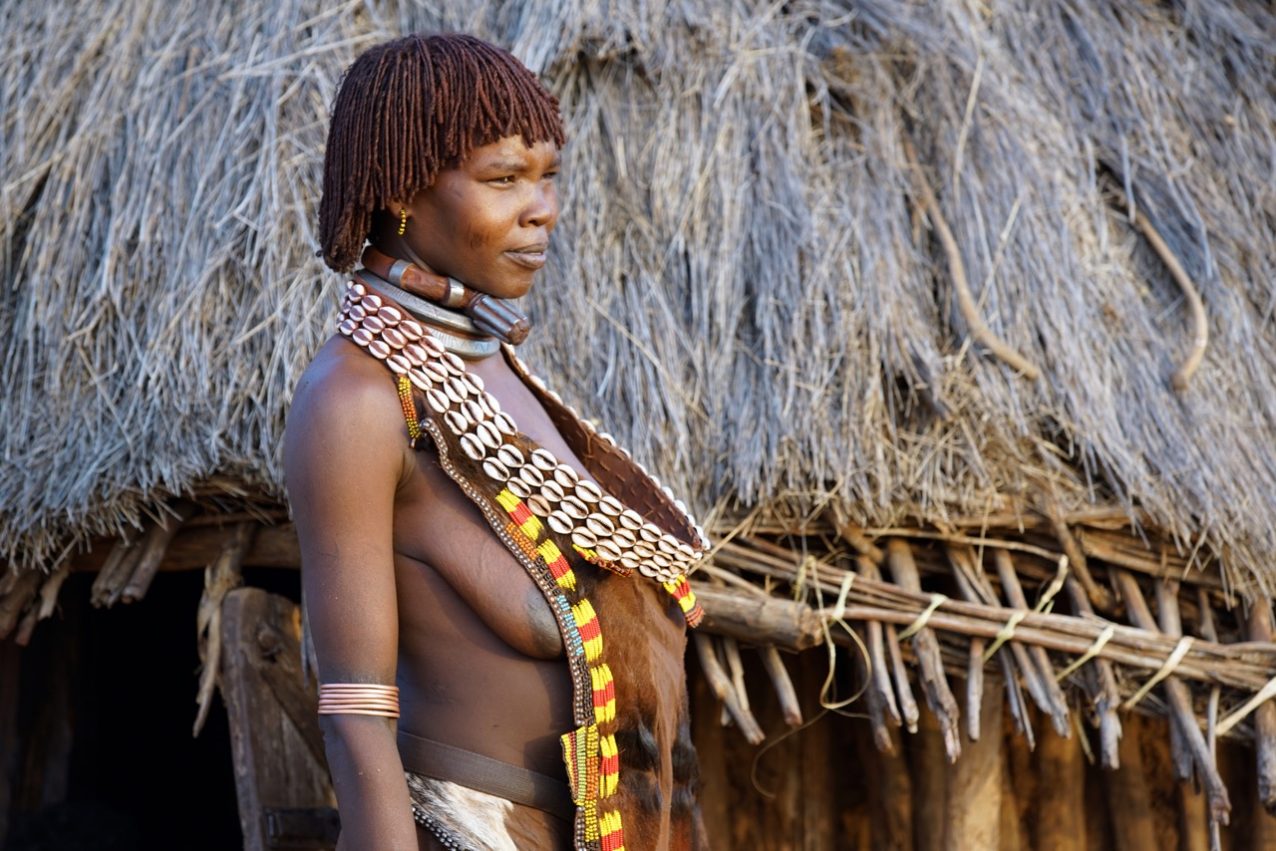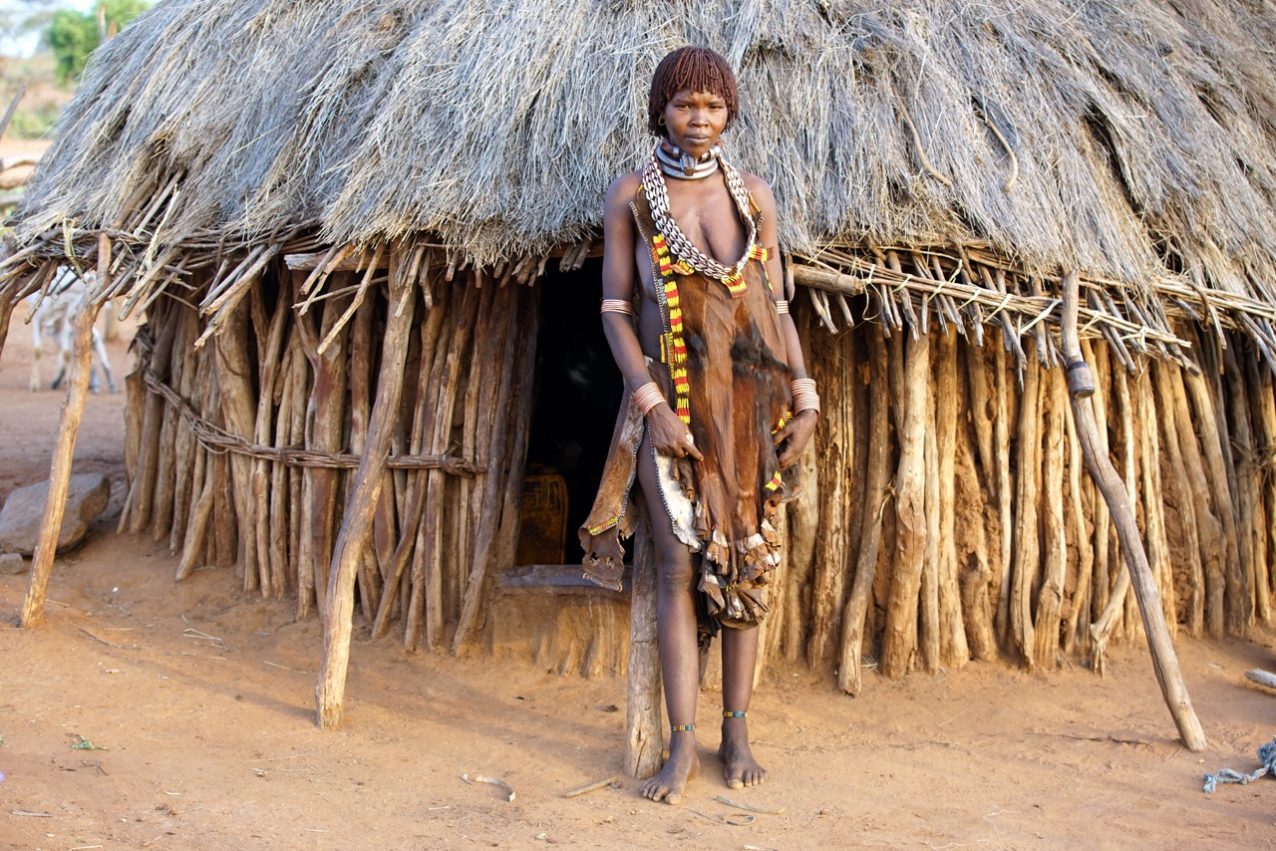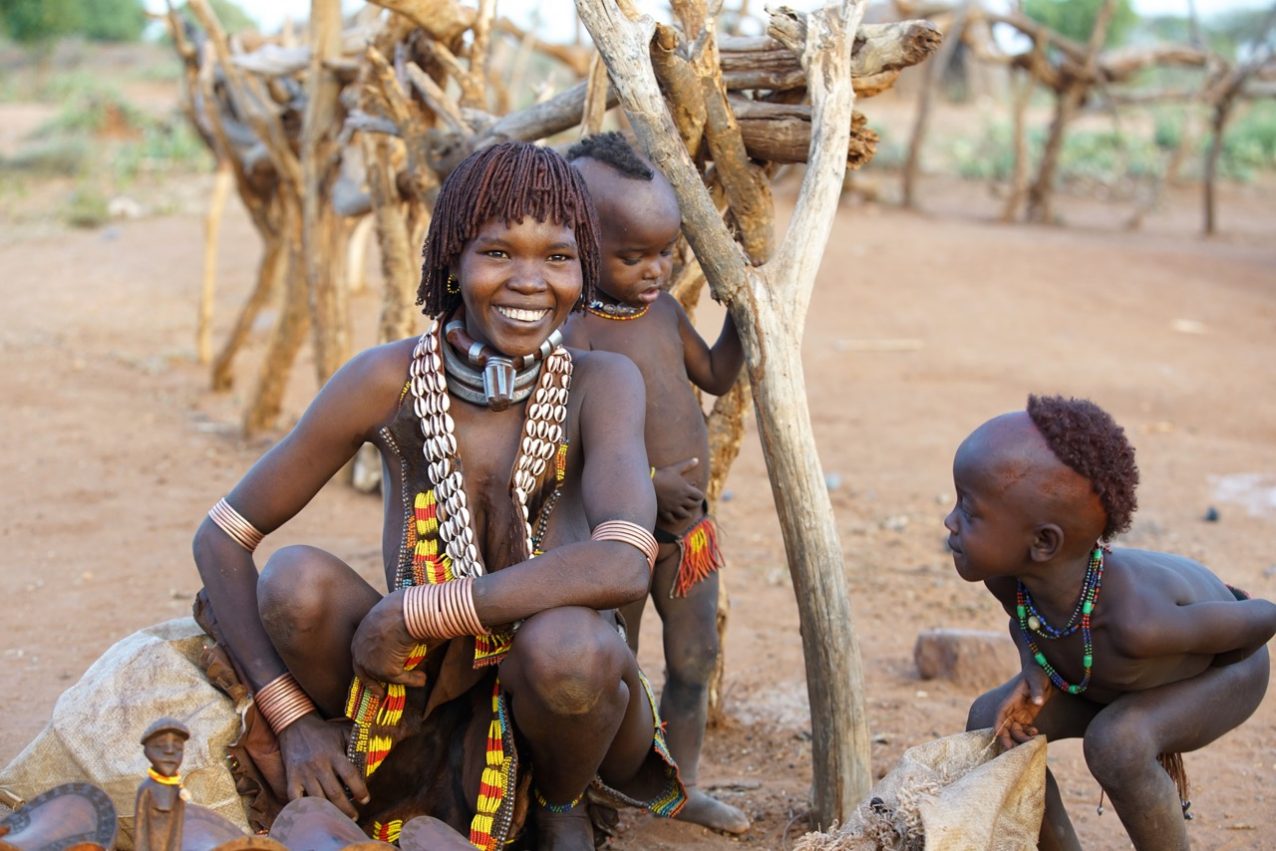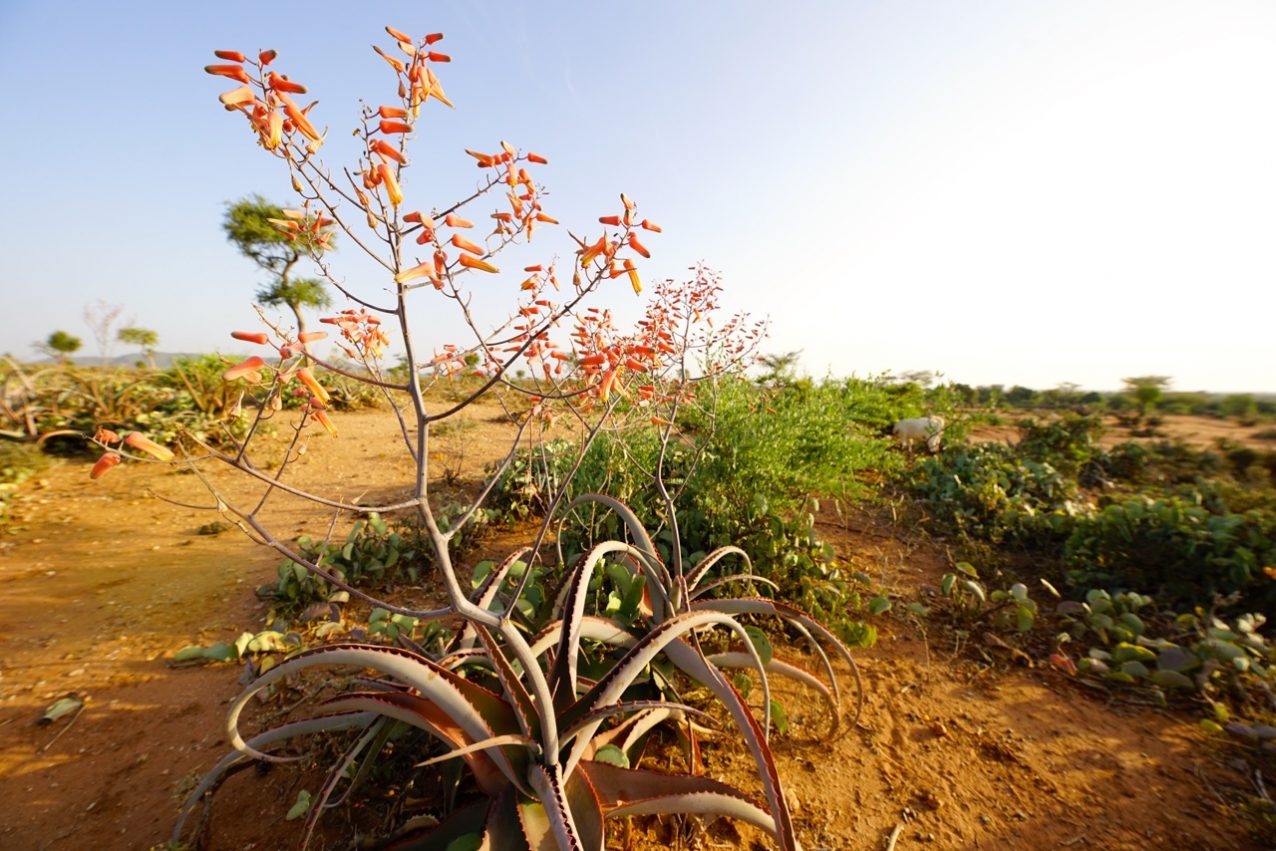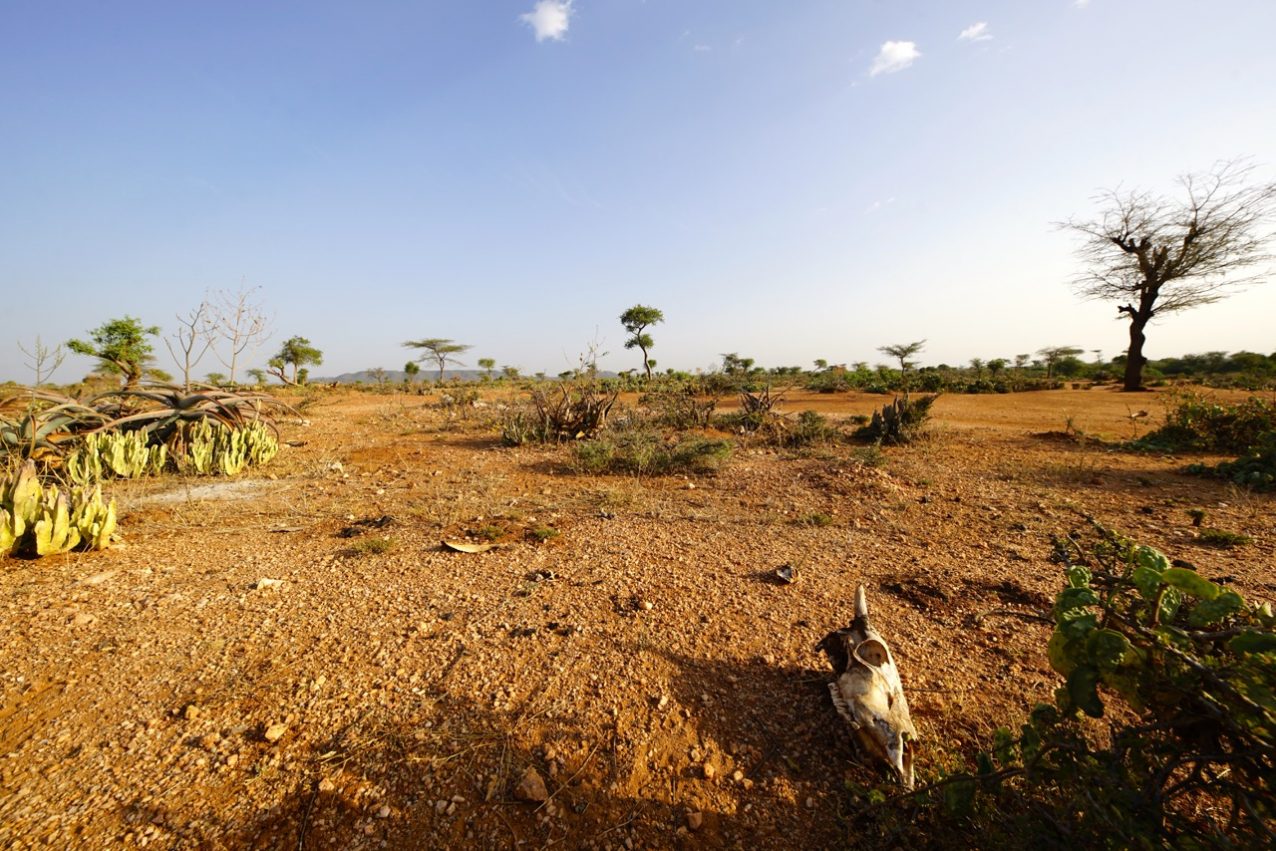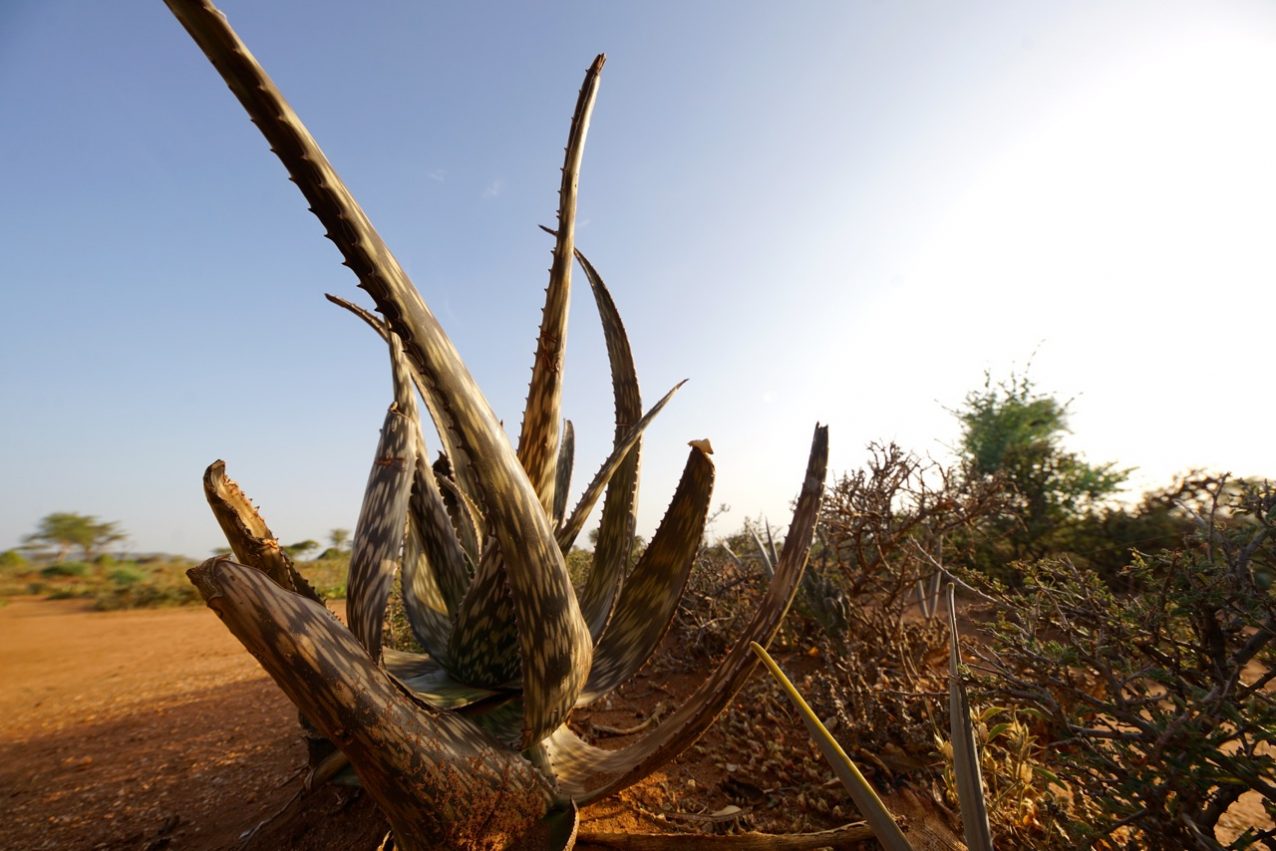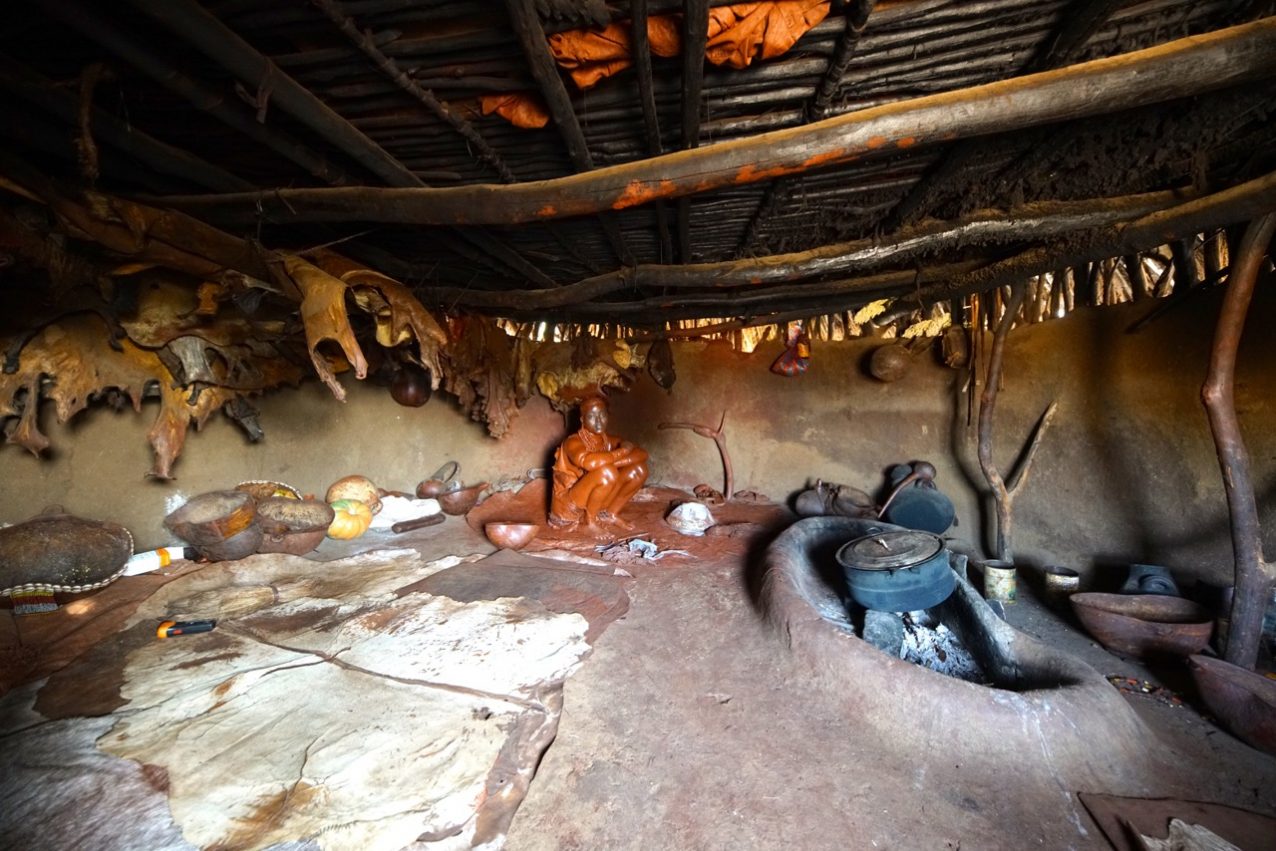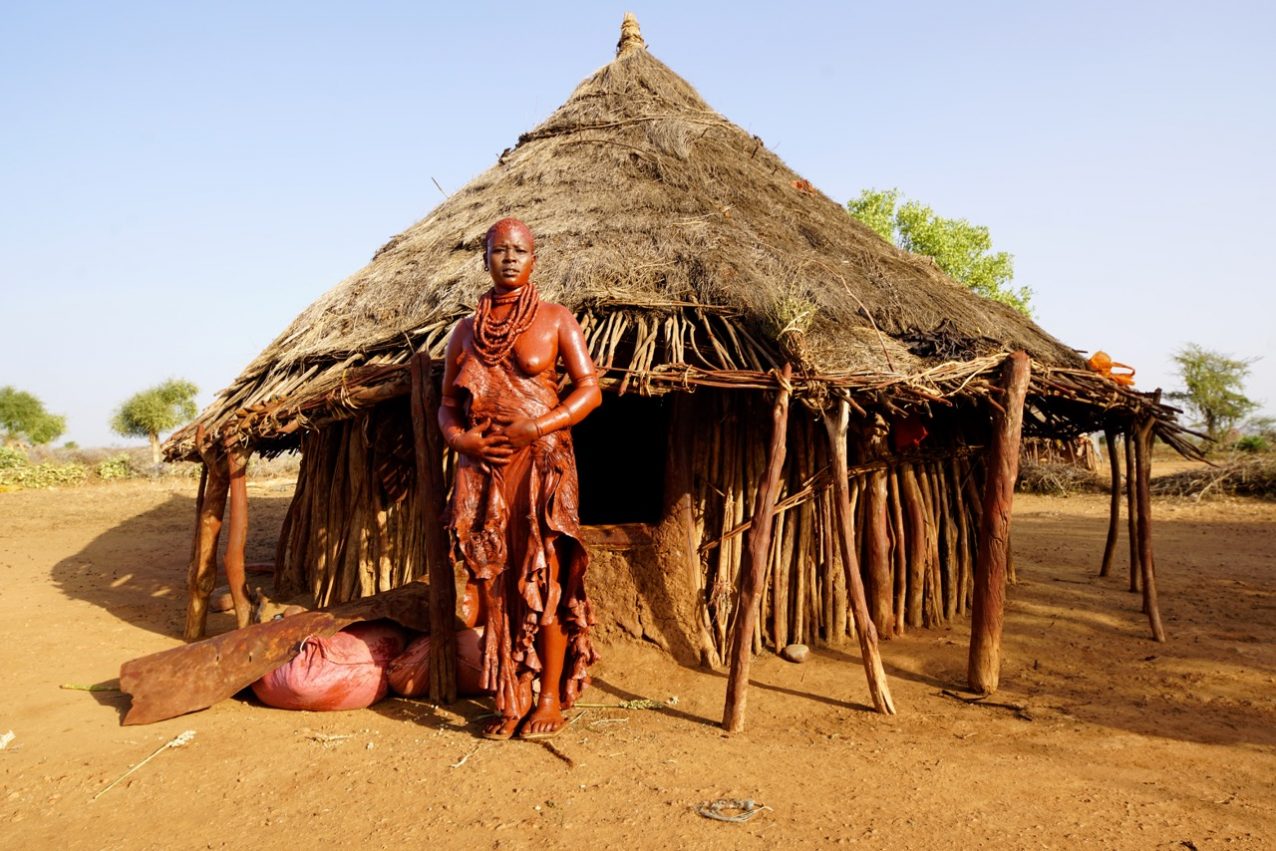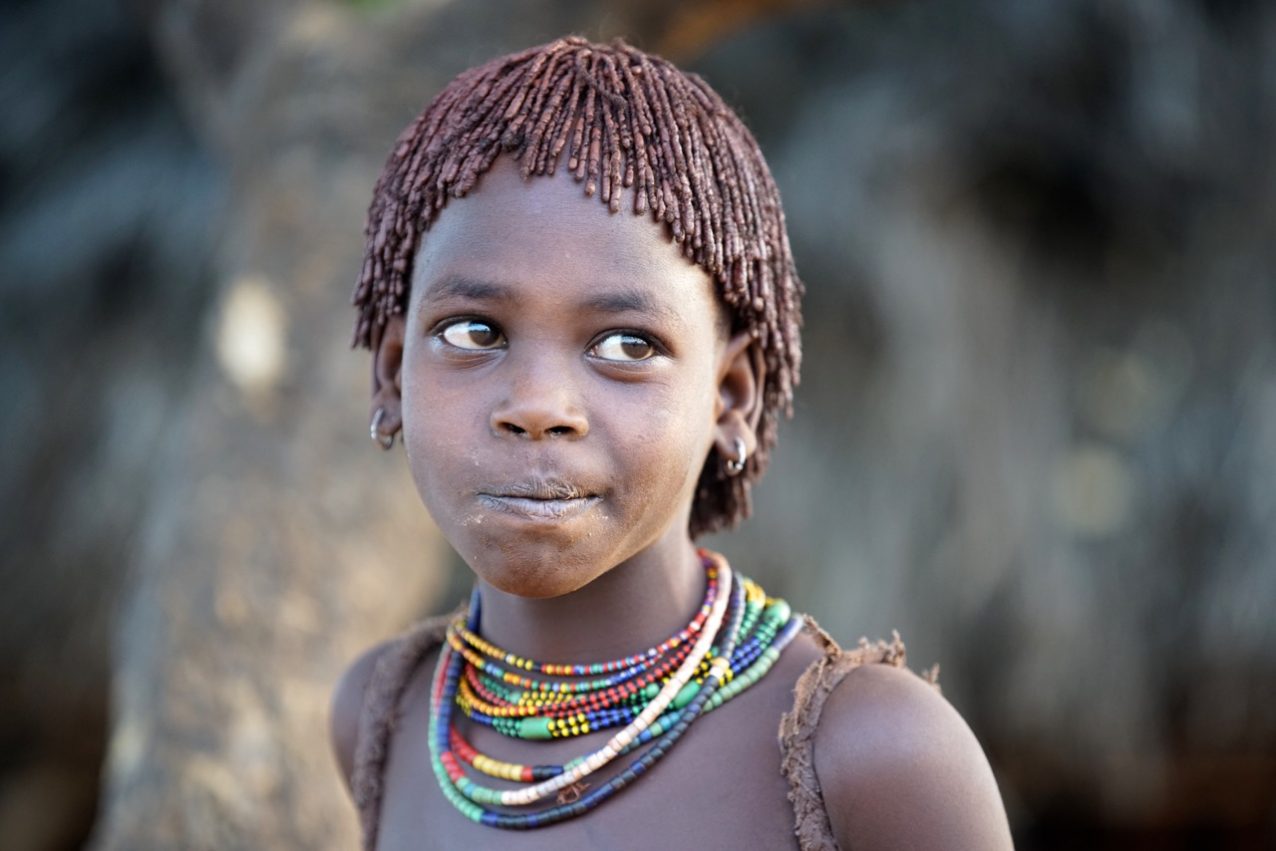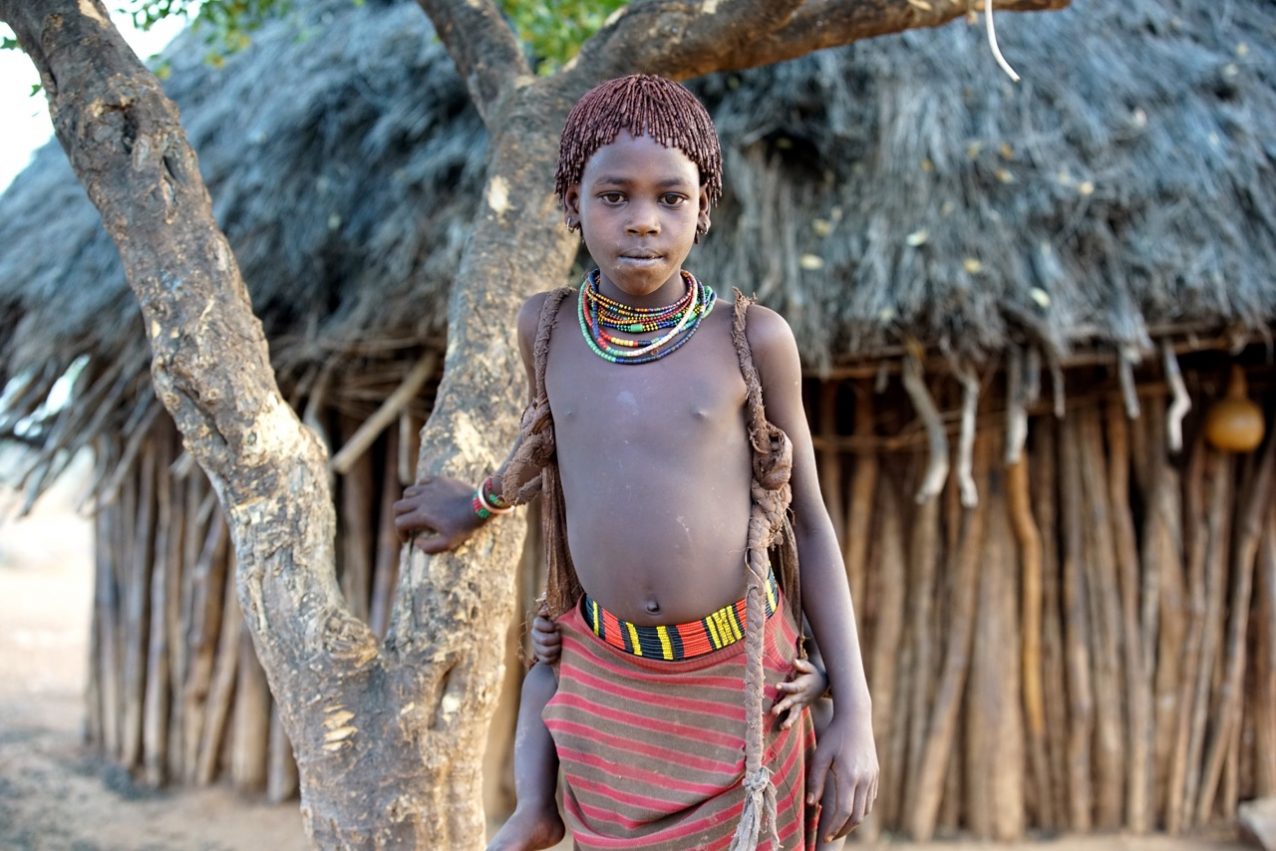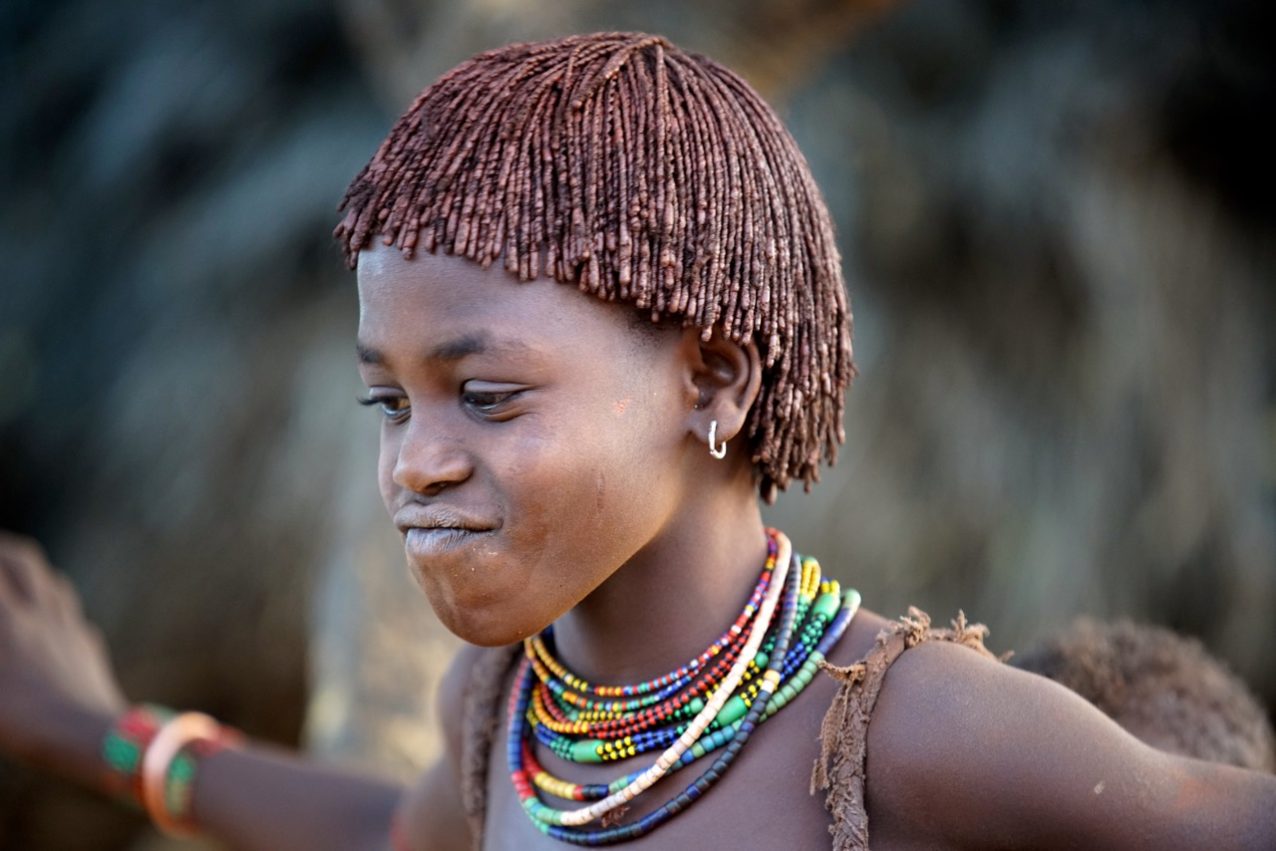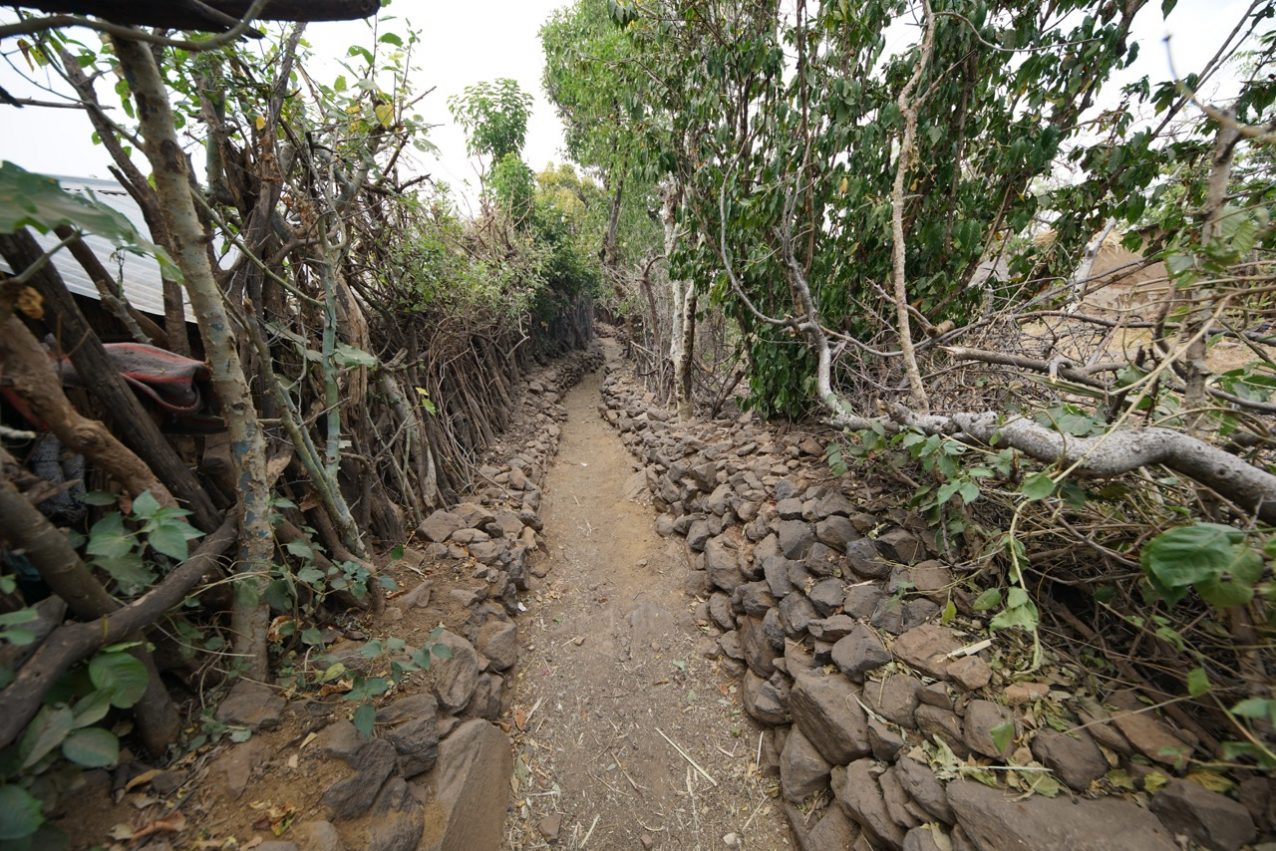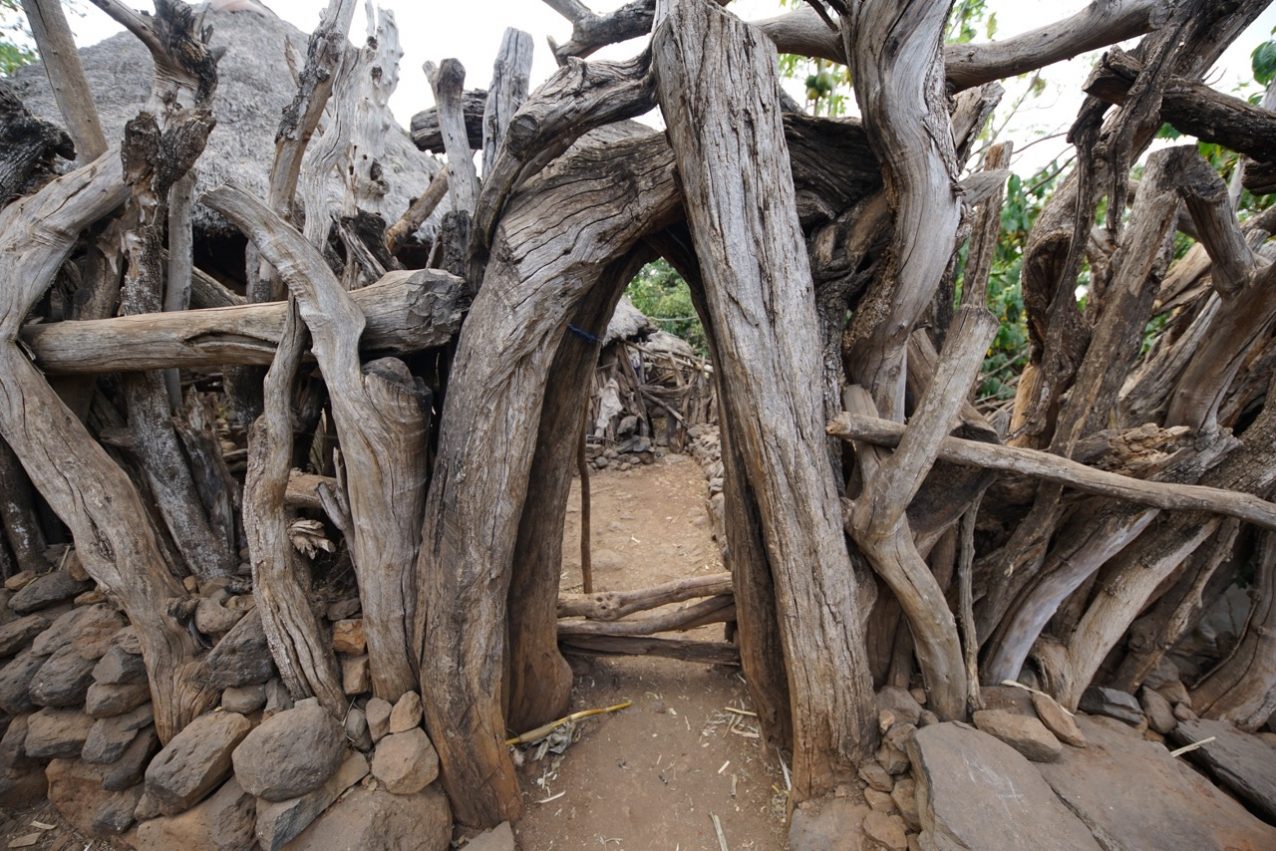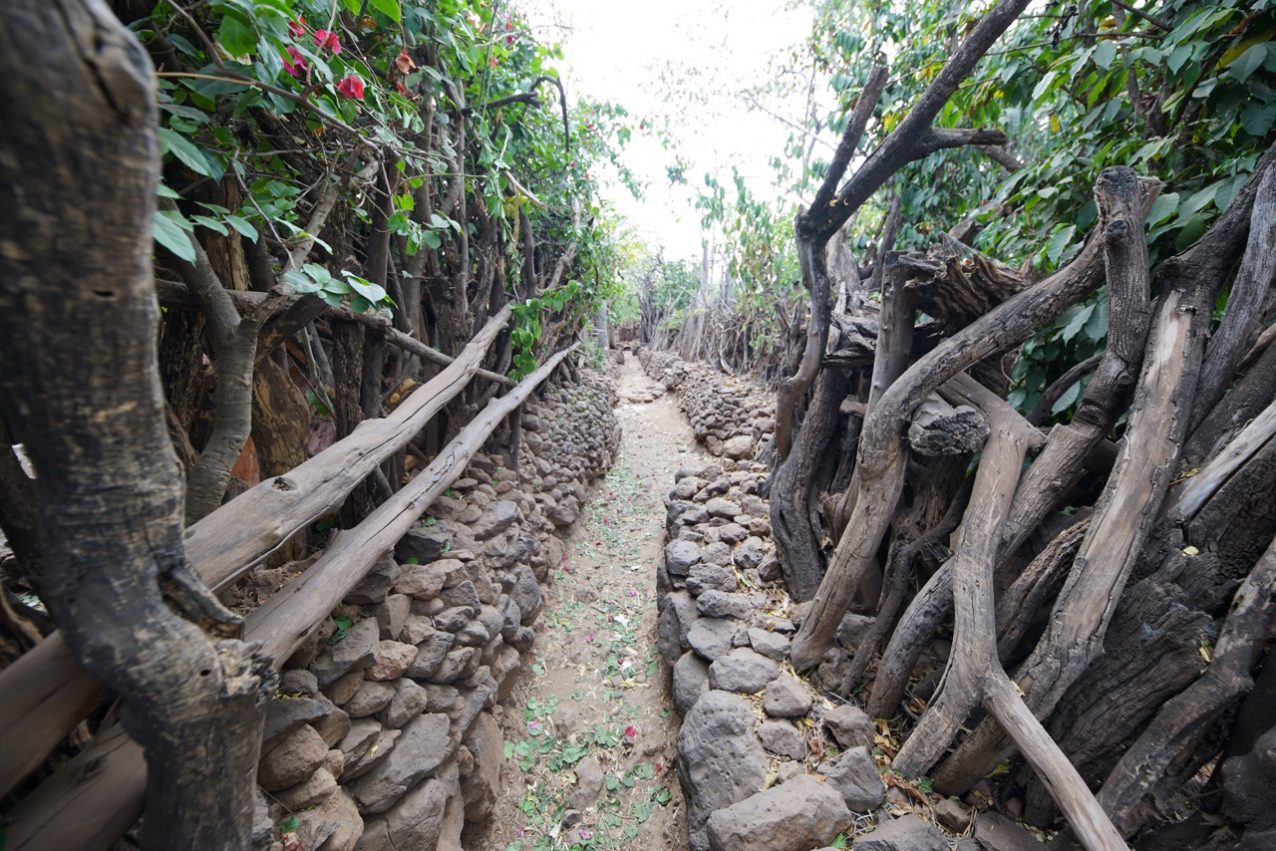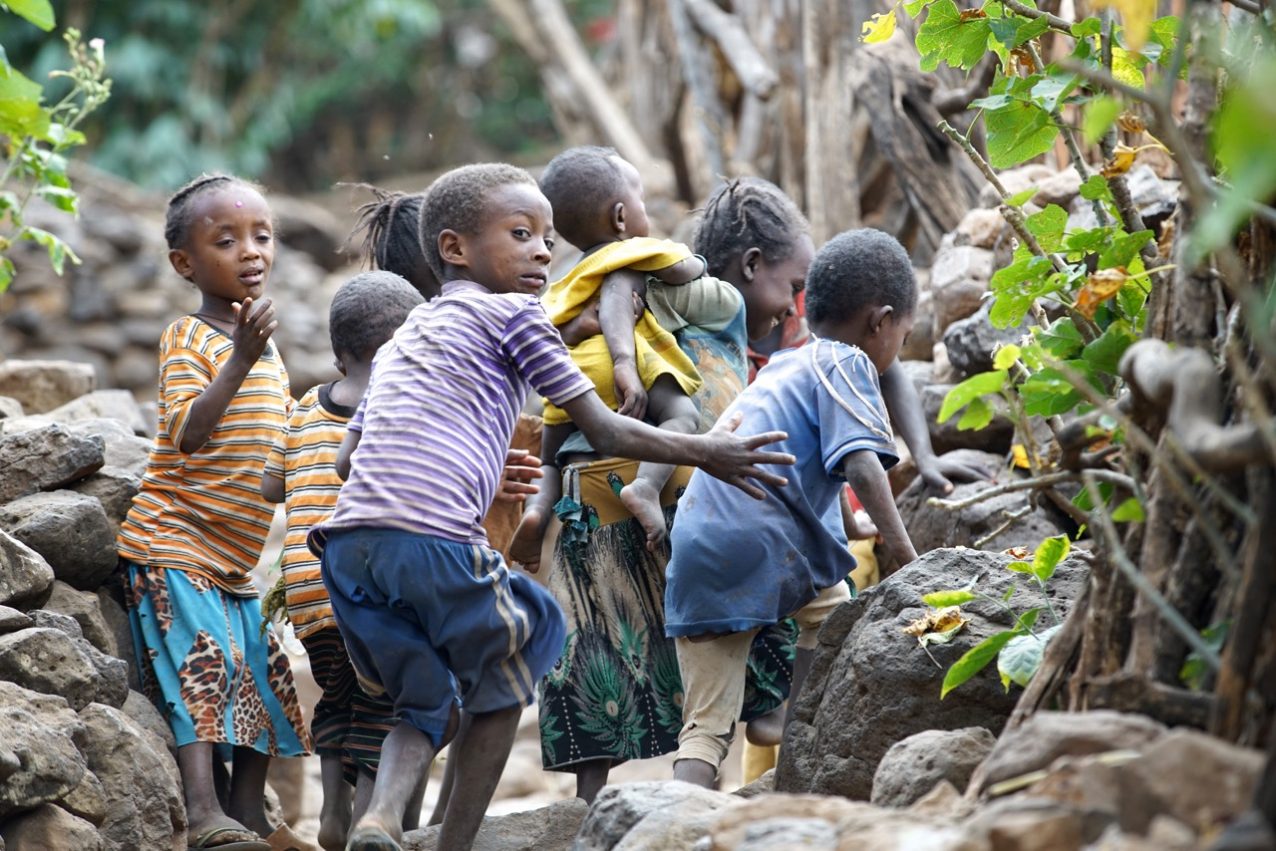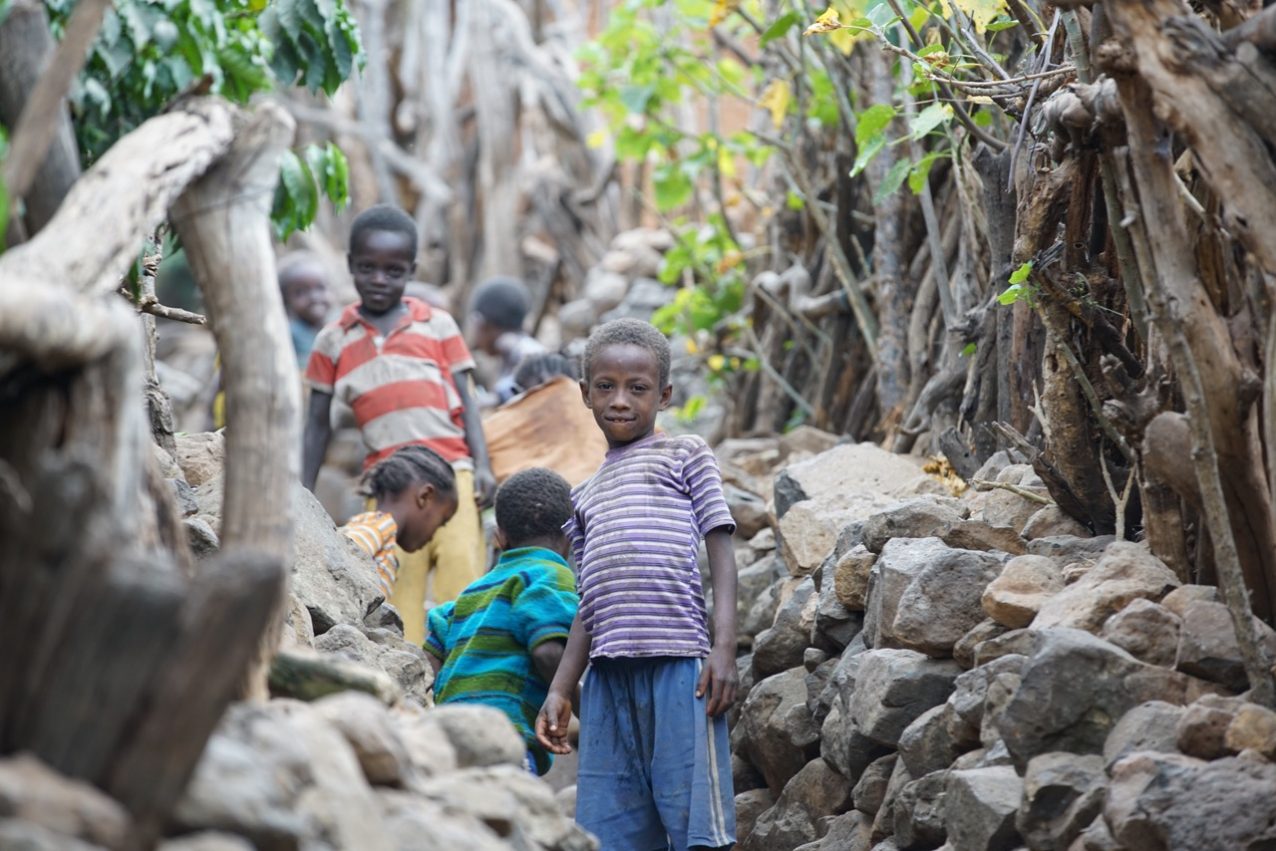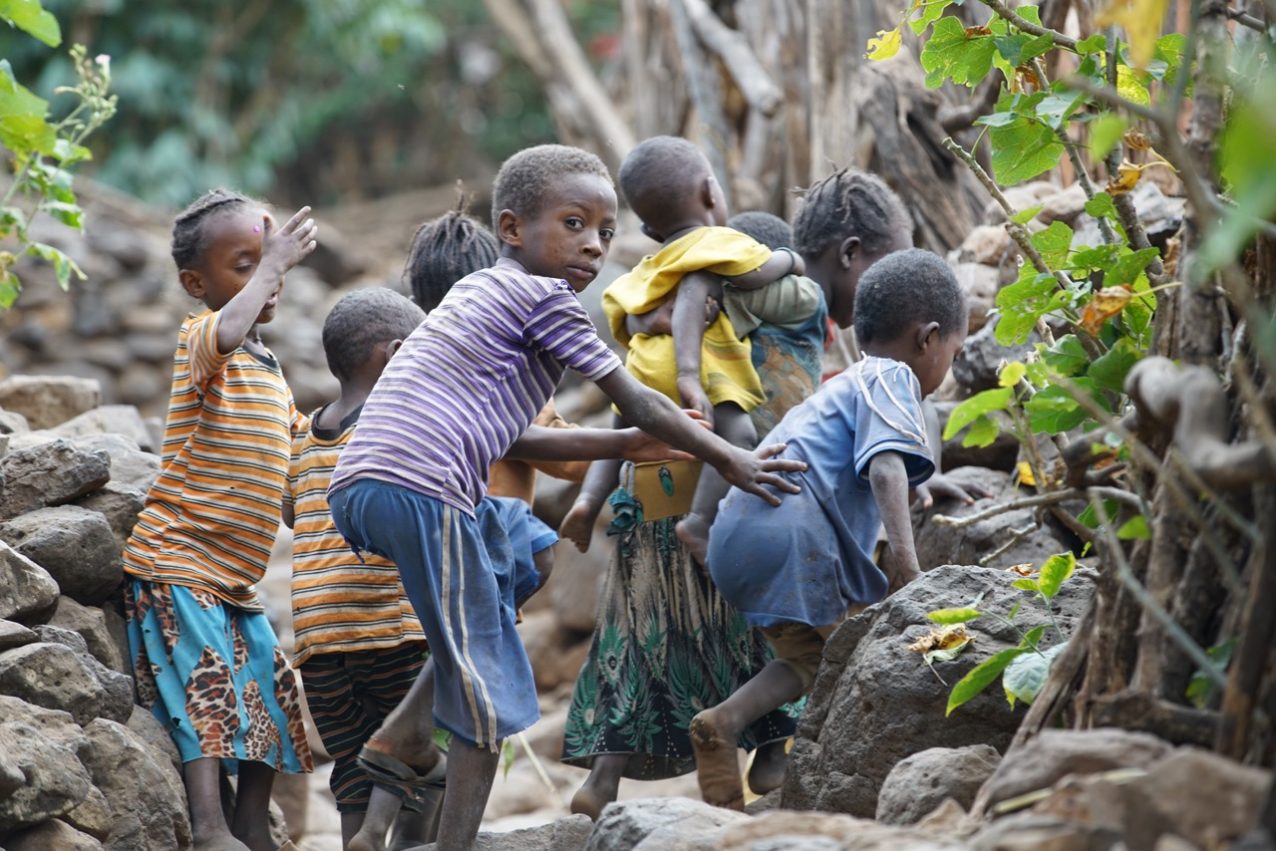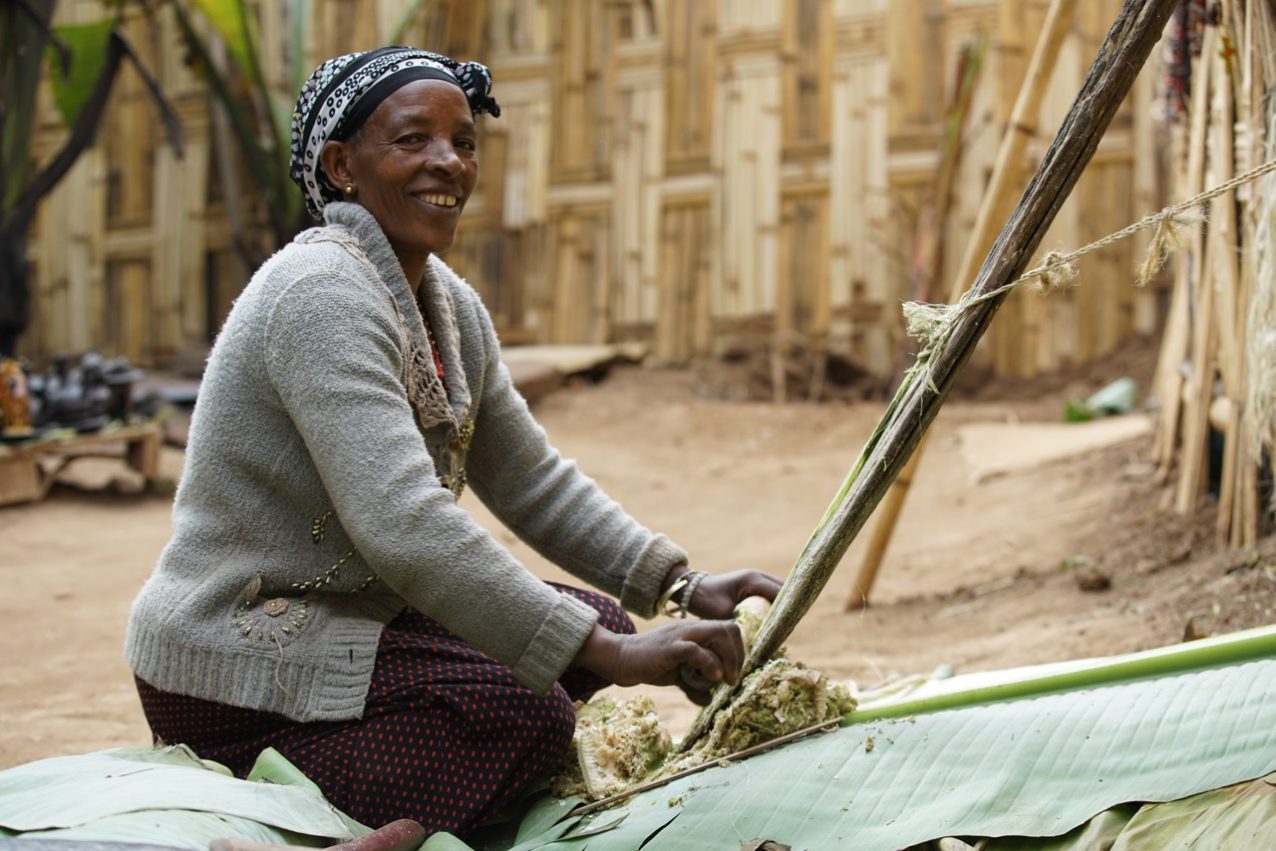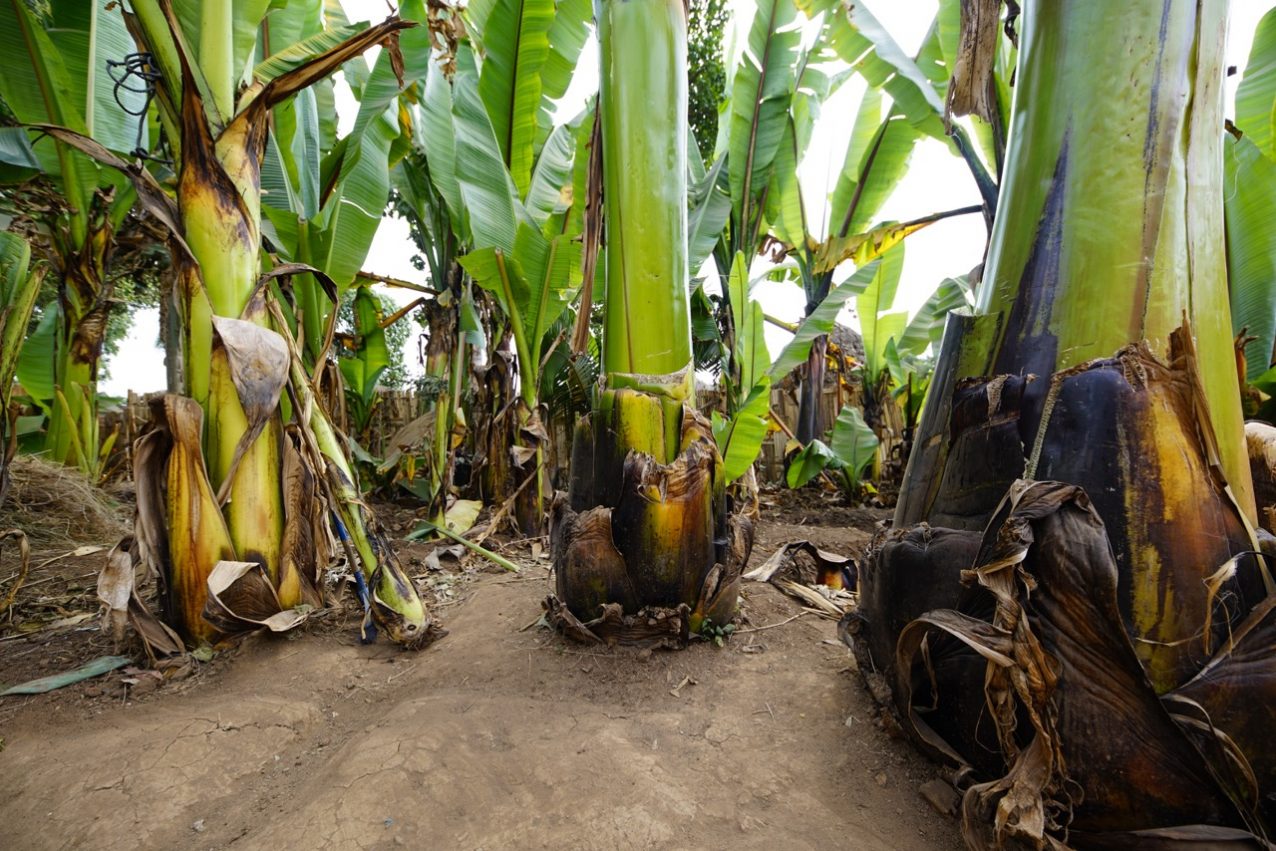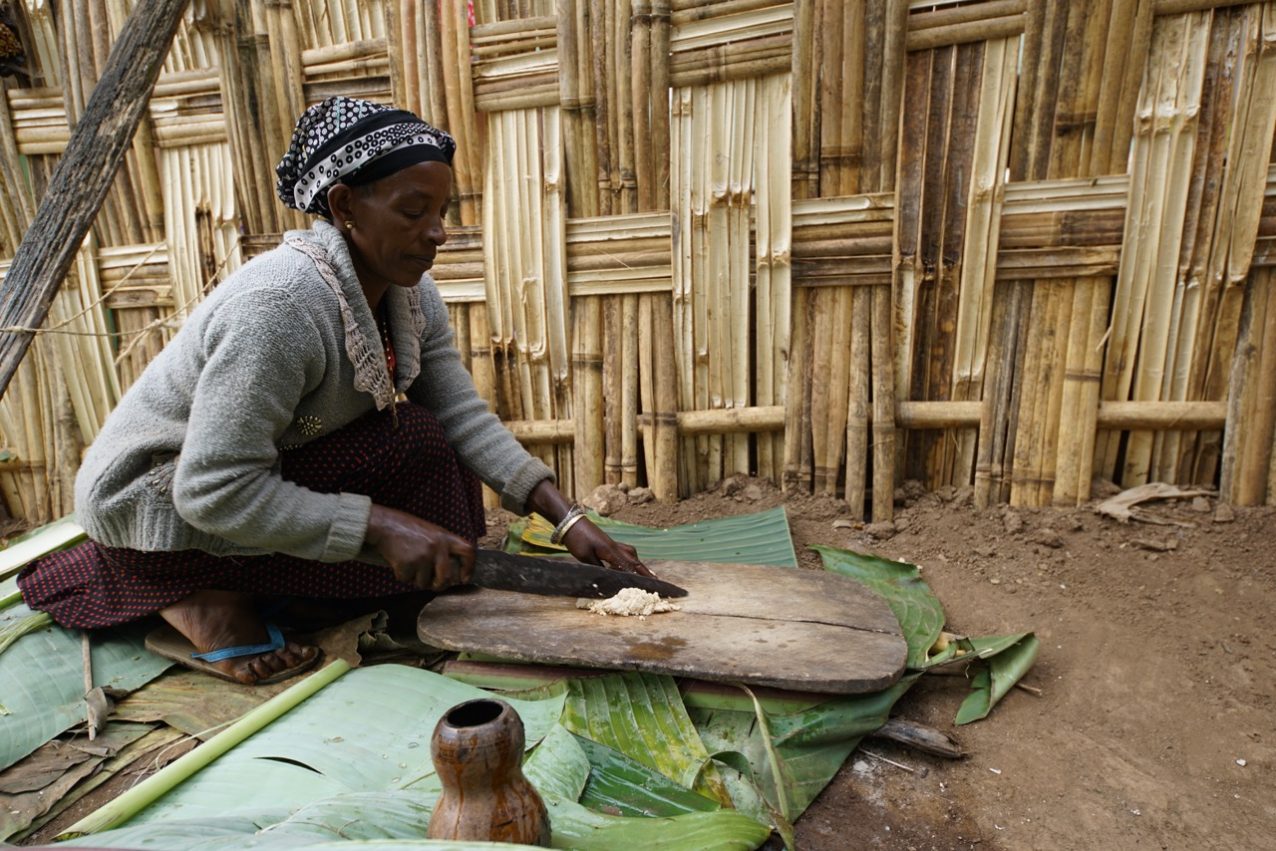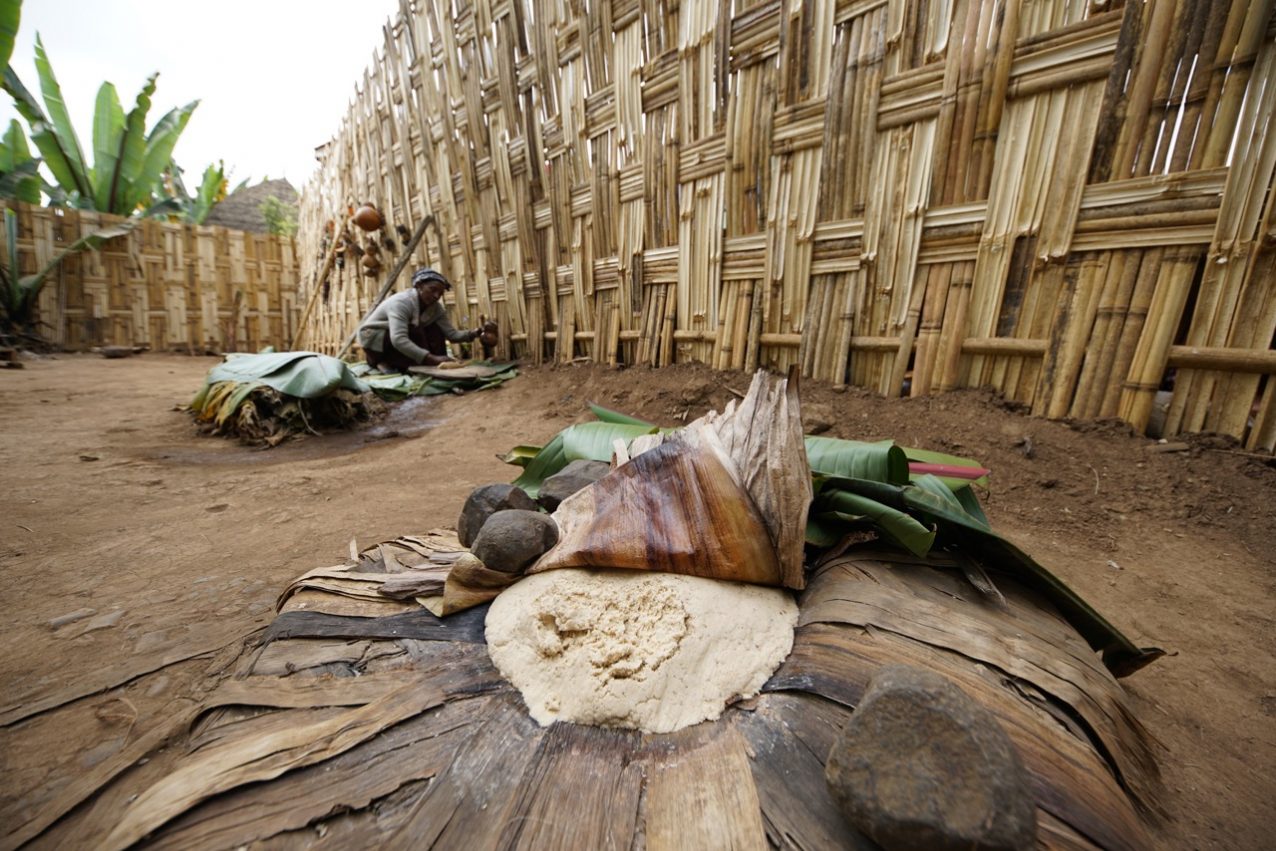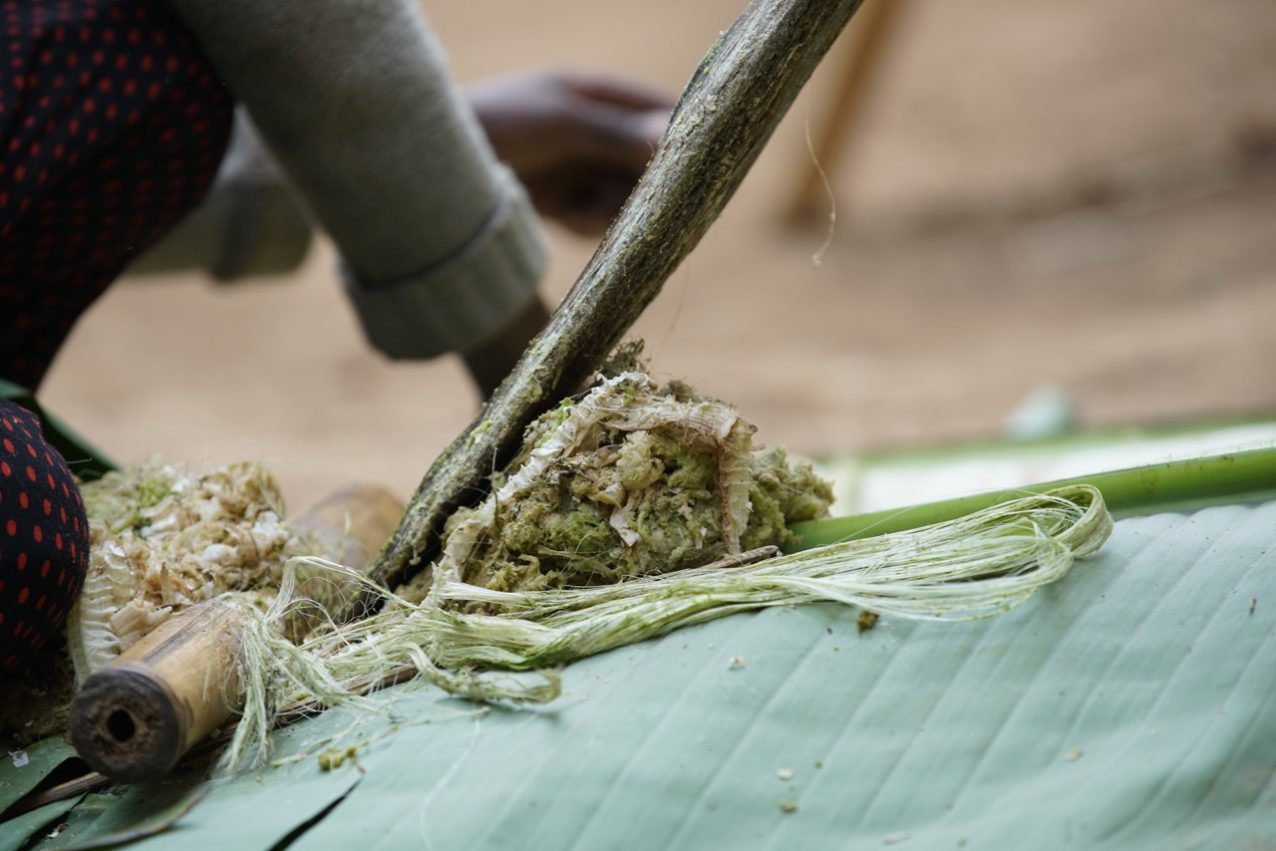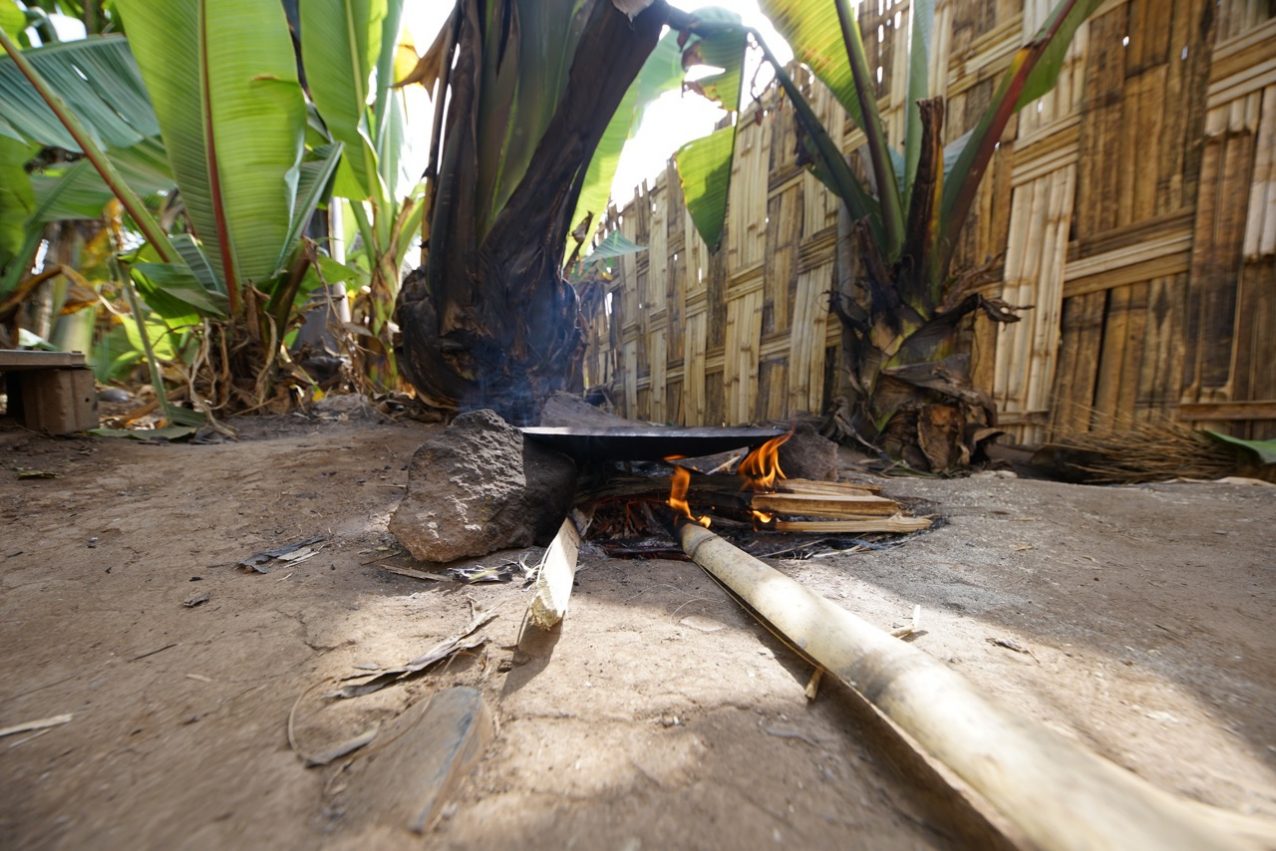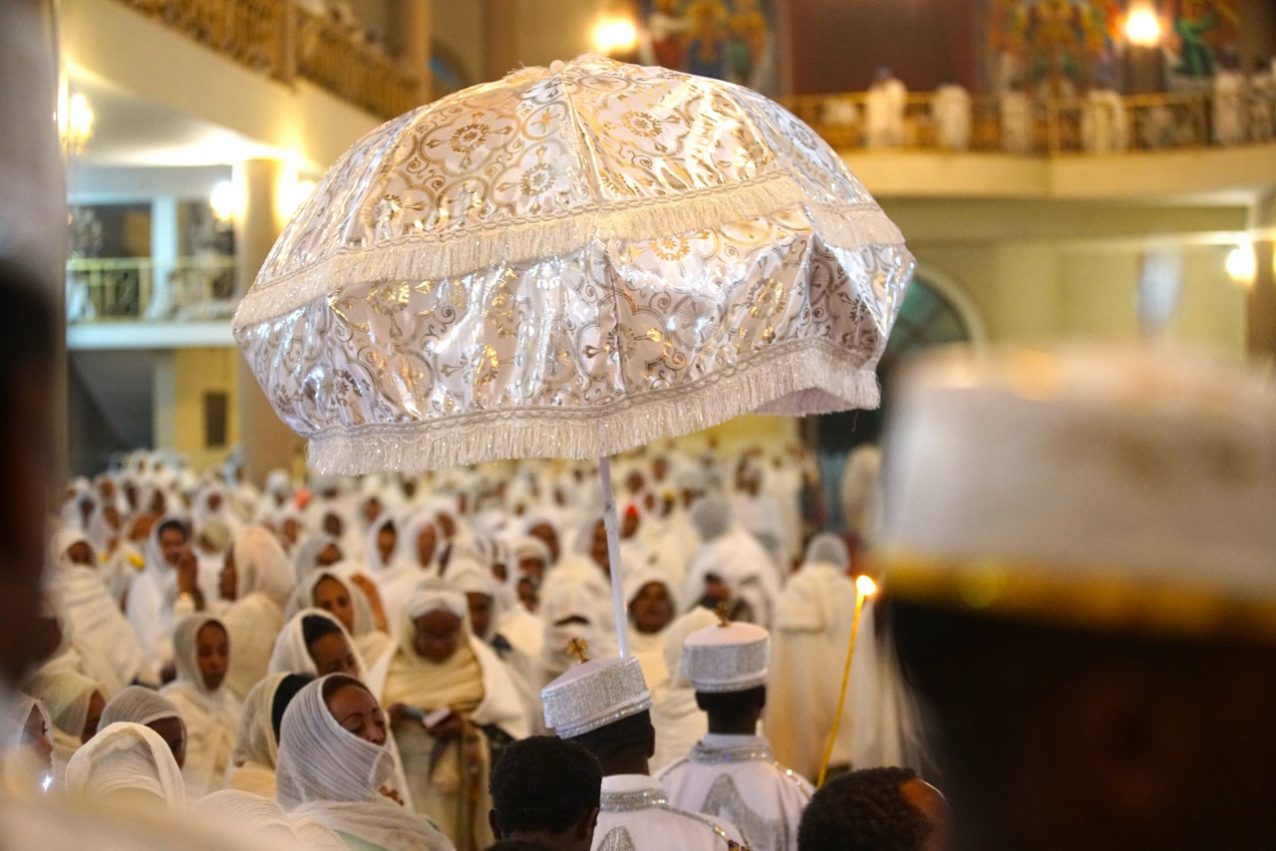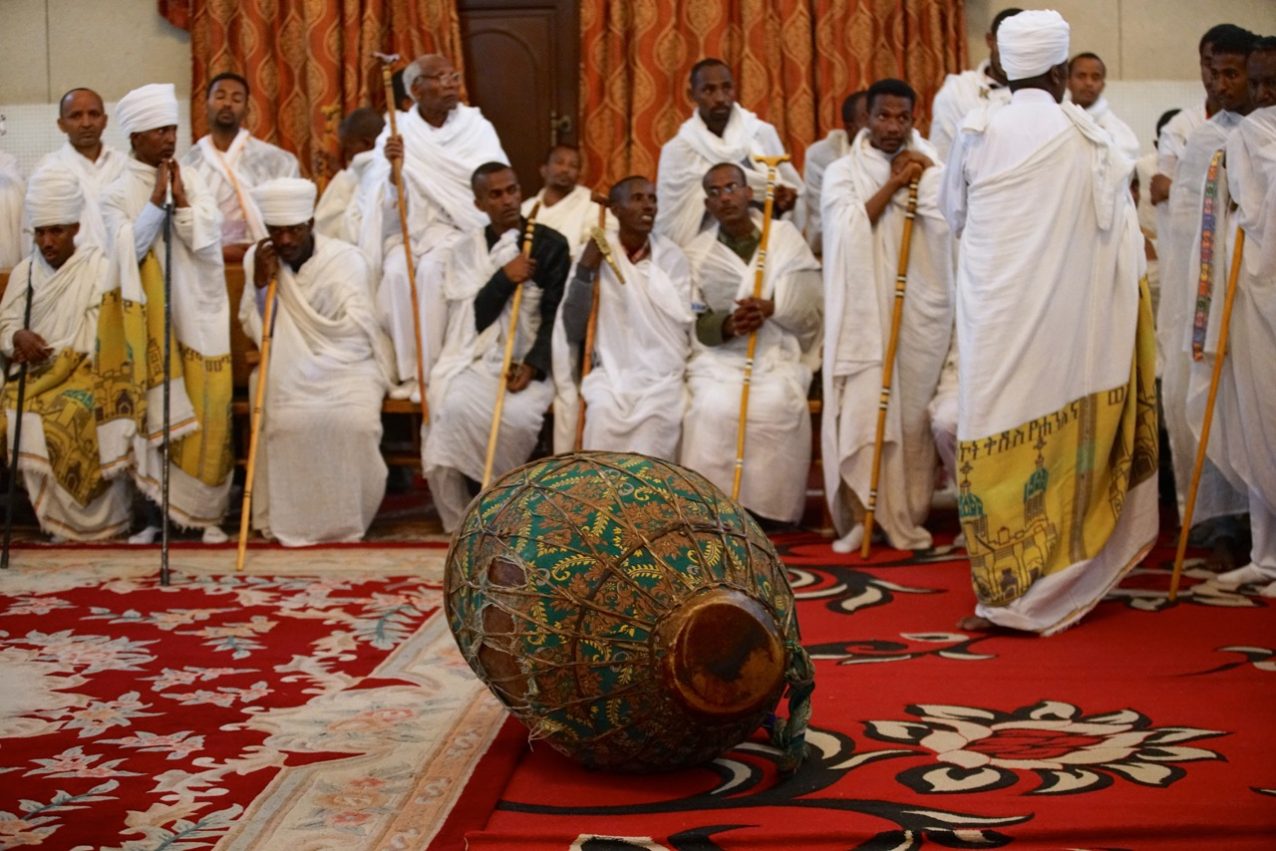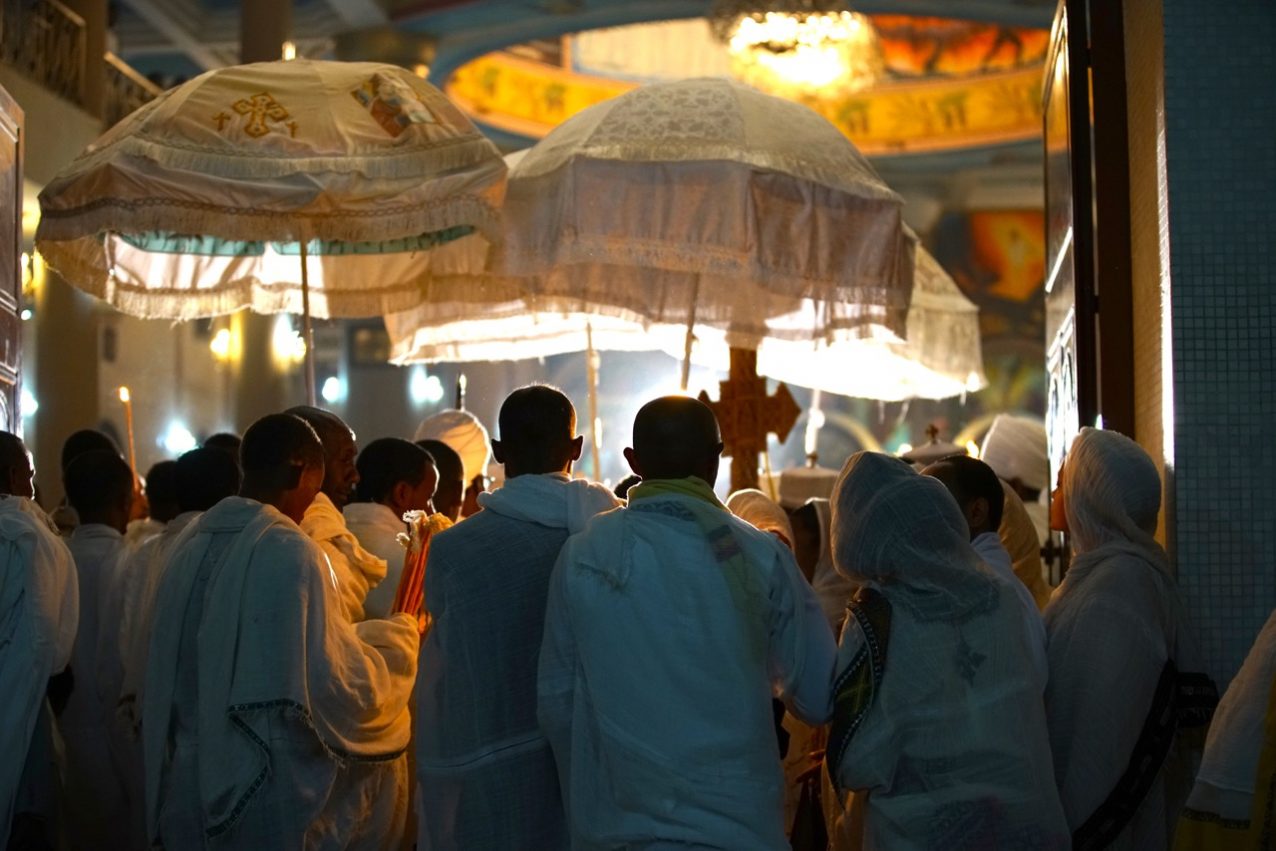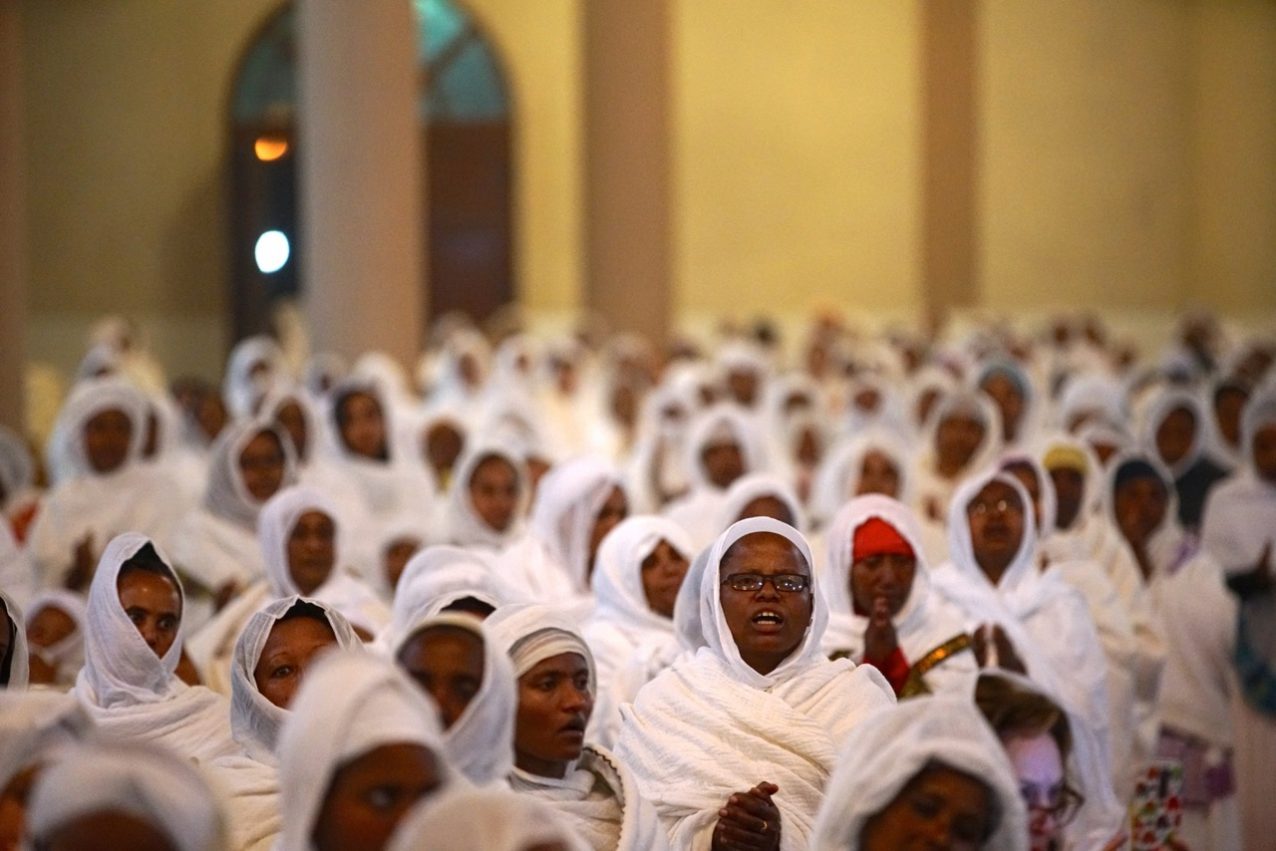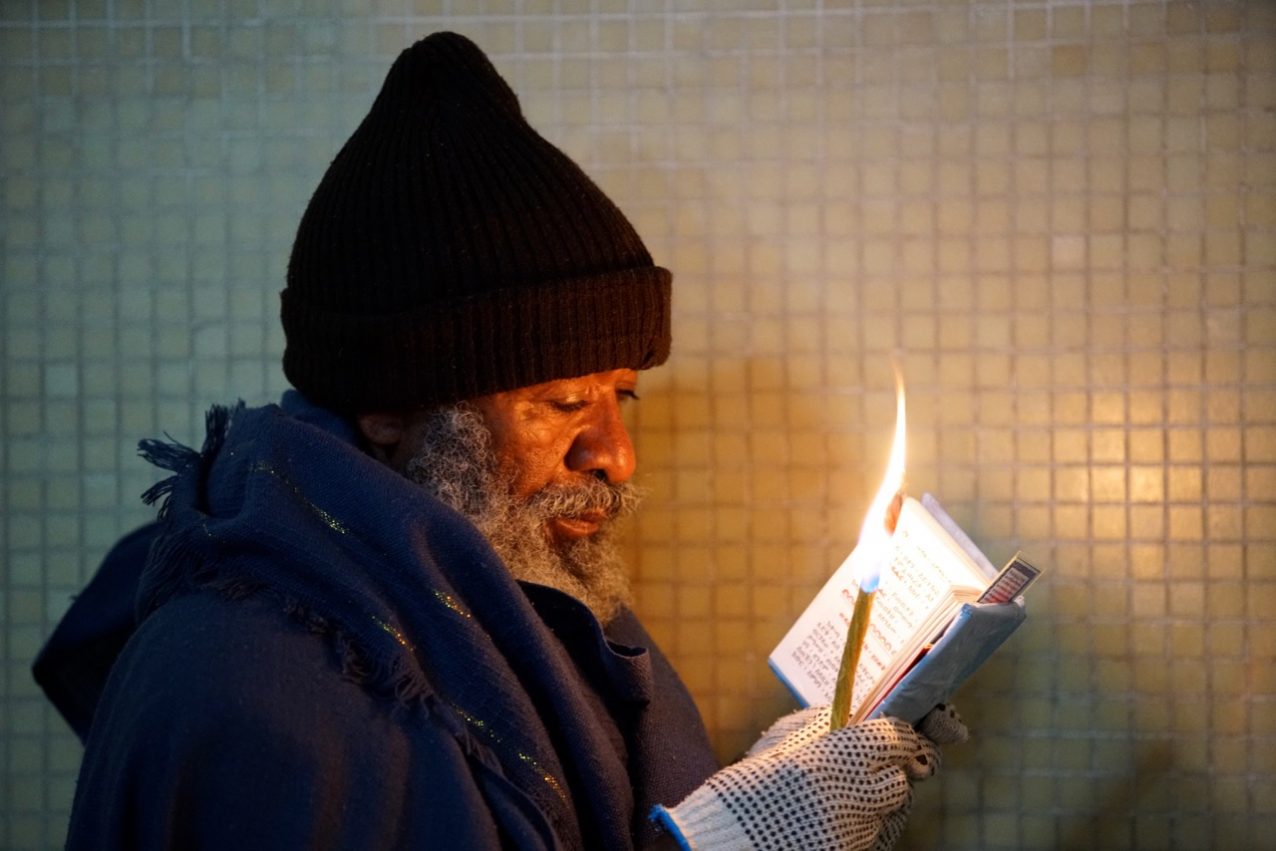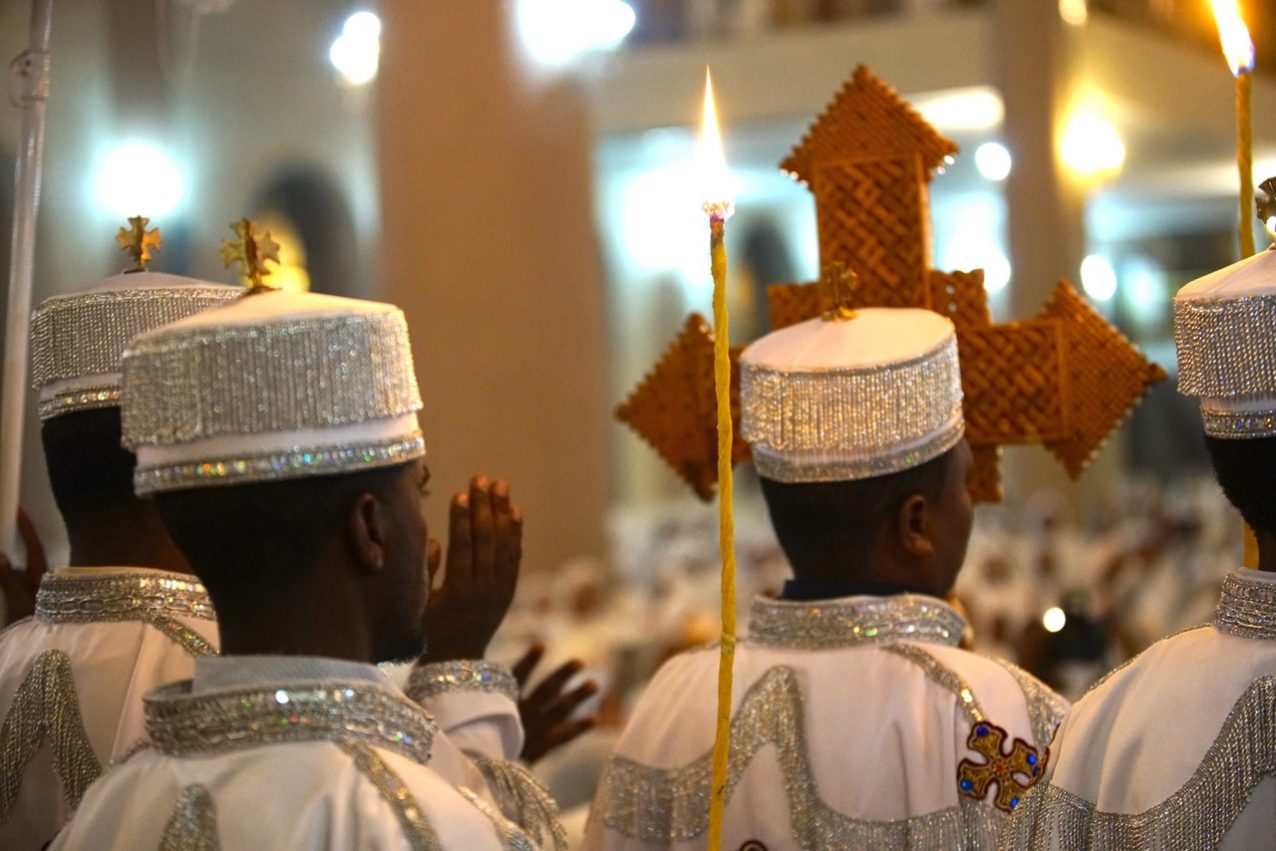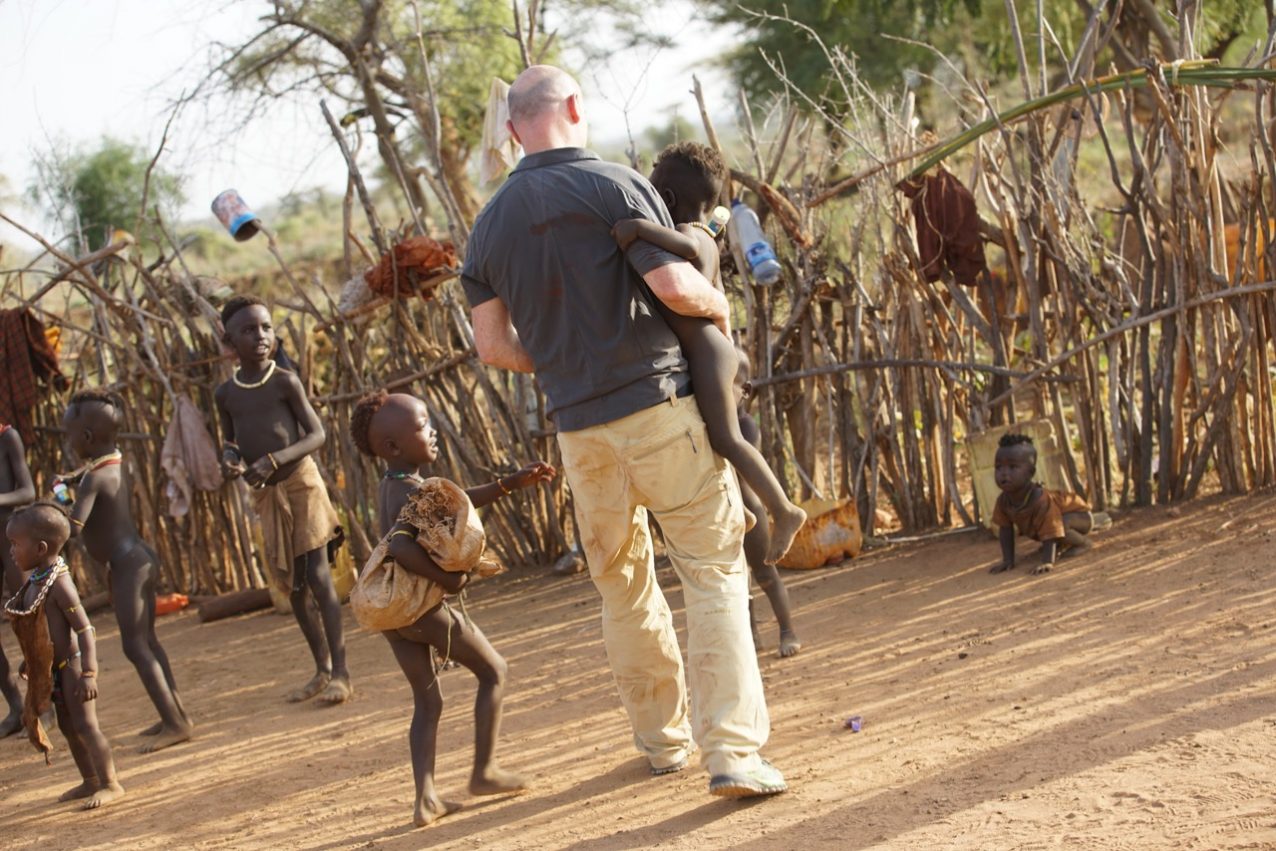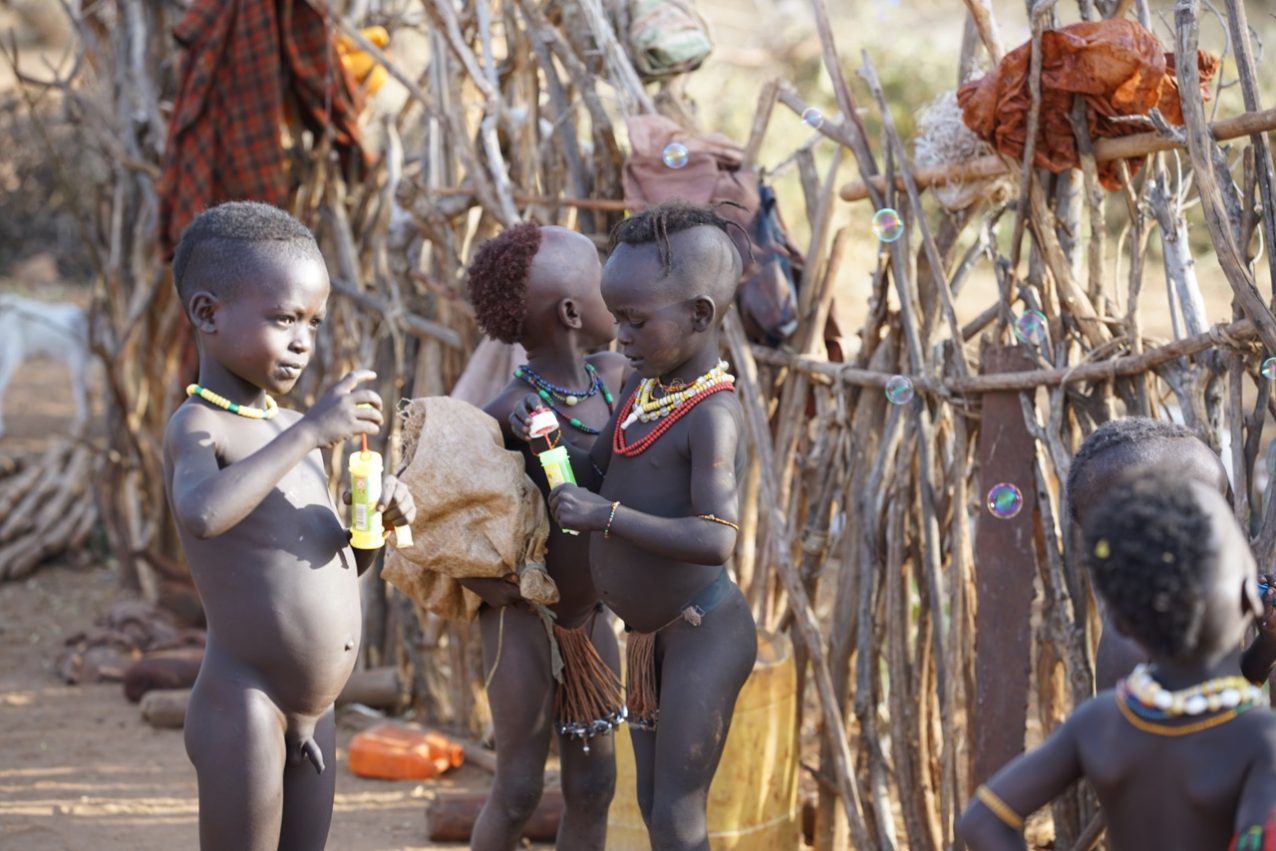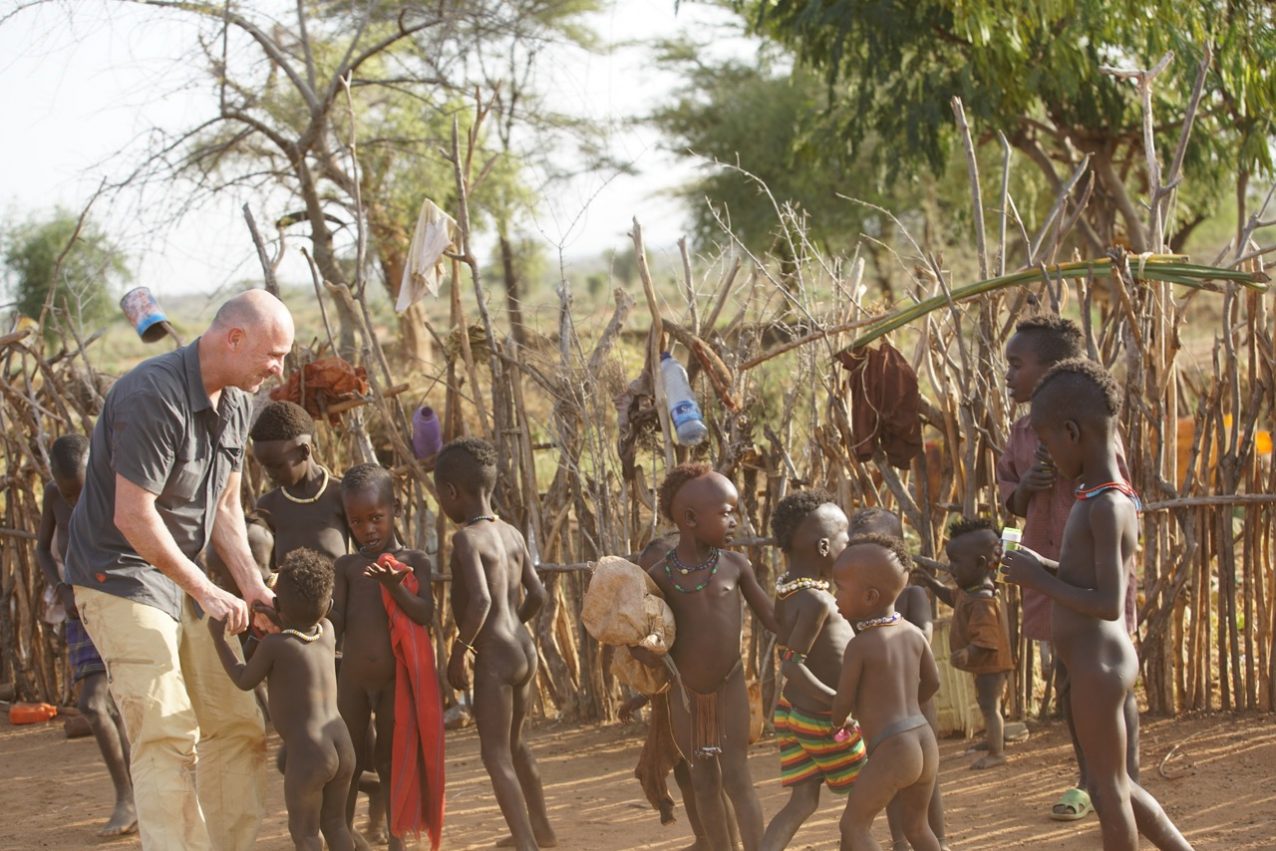As mentioned after publishing the first blog post about Ethiopia I’ like to invite you to continue this fantastic journey by visiting the Karo and Hamer villages with me. The following picture shows you the driving route of the first two weeks in Ethiopia, wich was about approximately 2200 km.
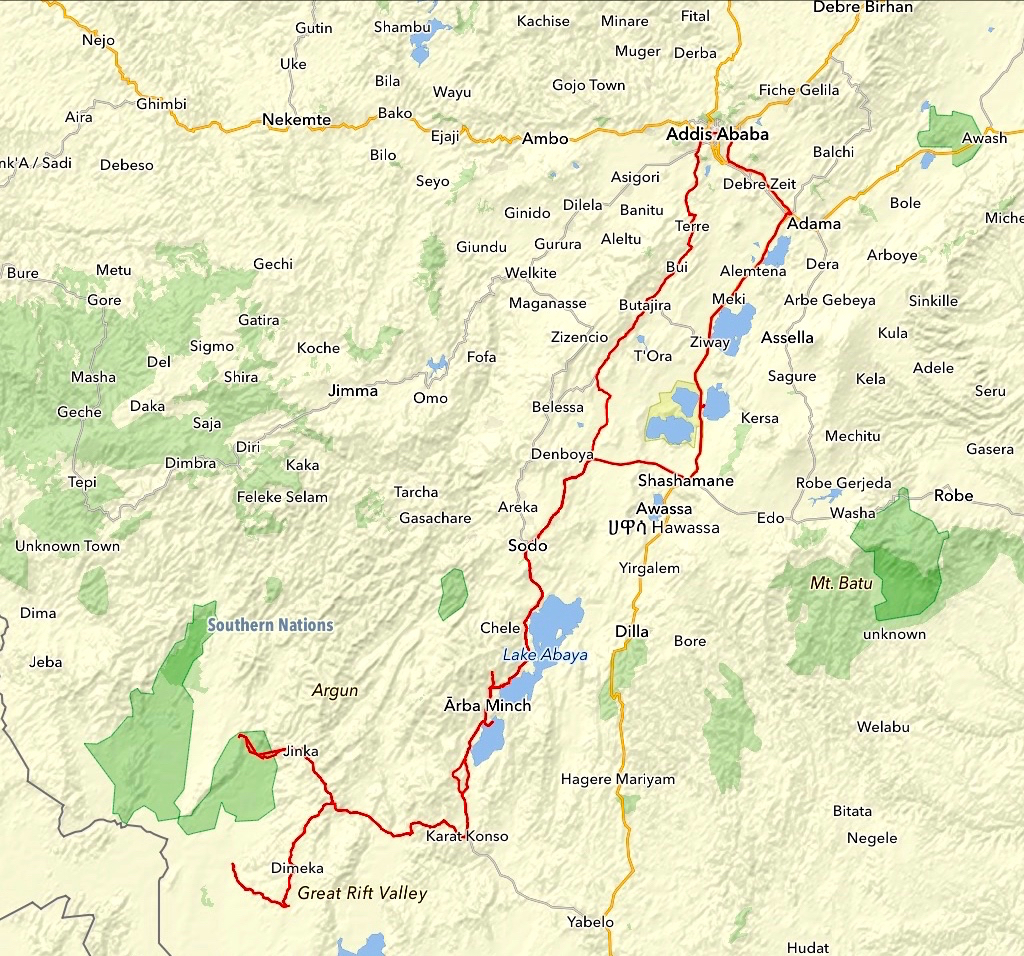
This morning I began with a memorable excursion to the Karo Tribe, who are very famous for their body painting. The Karo people use clays and locally available vegetable pigments to trace fantastic patterns on each other’s faces, chests, arms, and legs. Karo men, as with neighboring tribes, are also famous for their unique hairstyle. Visiting those villages is always an emotional rollercoaster, leaving me with lots of questions, most likely misunderstandings and a huge gap between excitement and disappointment.
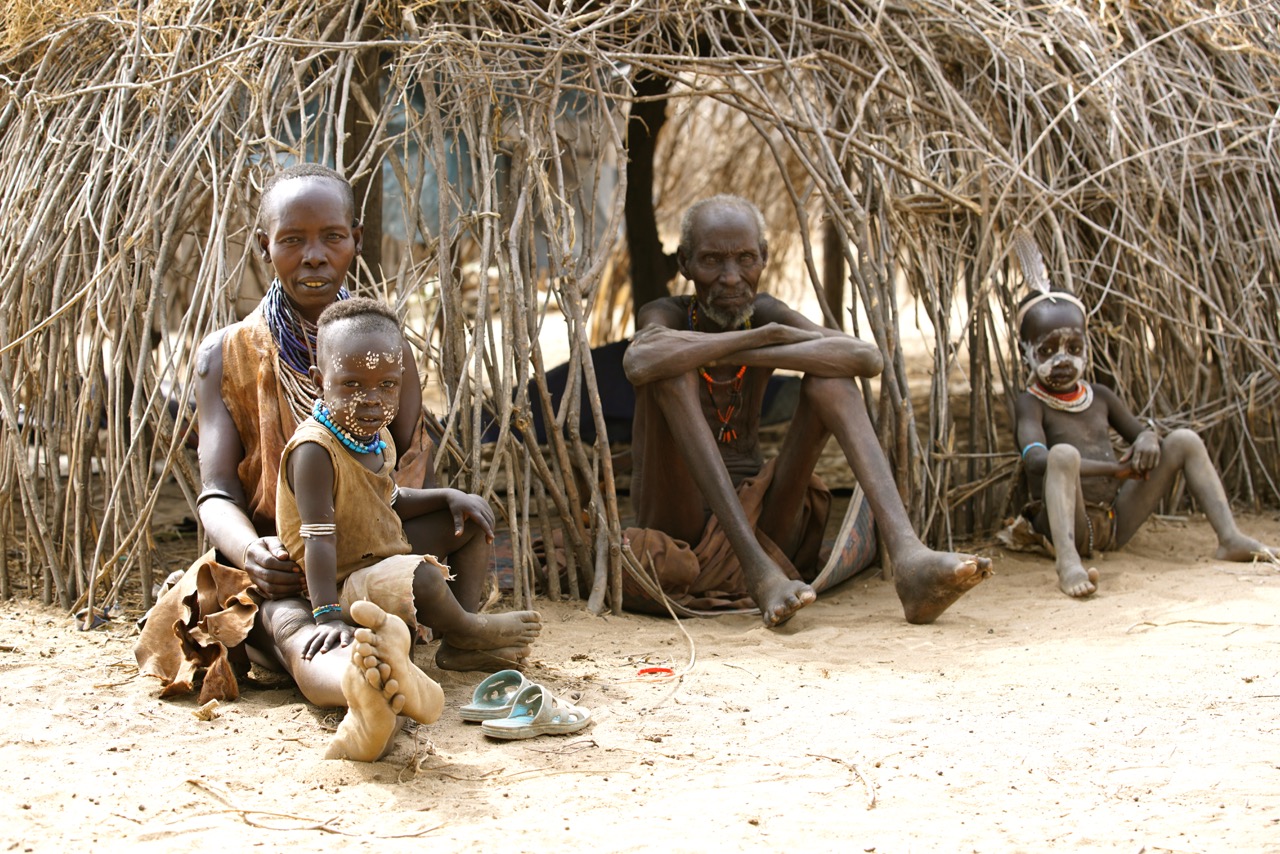
The Karo are undeniably artistic by nature. Among other things, they are known for their alluring and intricate body and face painting. They decorate their bodies with locally found white chalk, yellow mineral rock, iron ore, and charcoal. This is an elaborate process with designs ranging from simple and fine dots to rough but remarkable lines traced with palms or fingers. Animal motifs such as the spotted plumage of the guinea fowl are some of the striking body painting designs they do. Both men and women practice this symbolic and ornamental expression in a bid to appear more attractive to the opposite sex. It’s also done on special occasions.
By driving along the dusty roads towards the village curious faces seem to appeared out of nowhere and so I stopped several times trying to make contact. The little gifts a brought helped a lot to break the shyness!
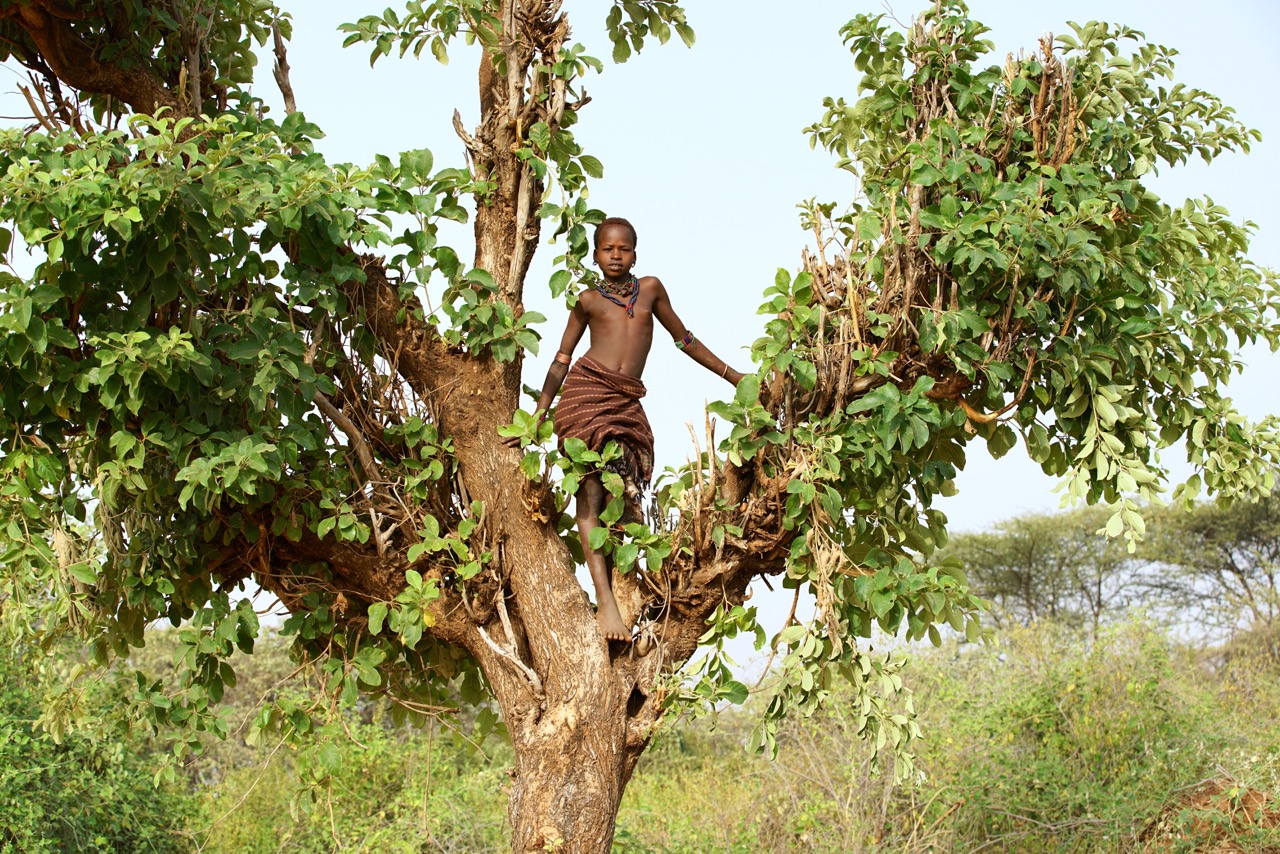
The Karo, or Kara, are a Nilotic ethnic group in Ethiopia, famous for their body painting. They are also one of the smallest tribes in the region with an estimated population between 1.000 and 3.000 and they are closely related to the Kwegu tribe which live also along the east banks of the Omo River in southern Ethiopia.
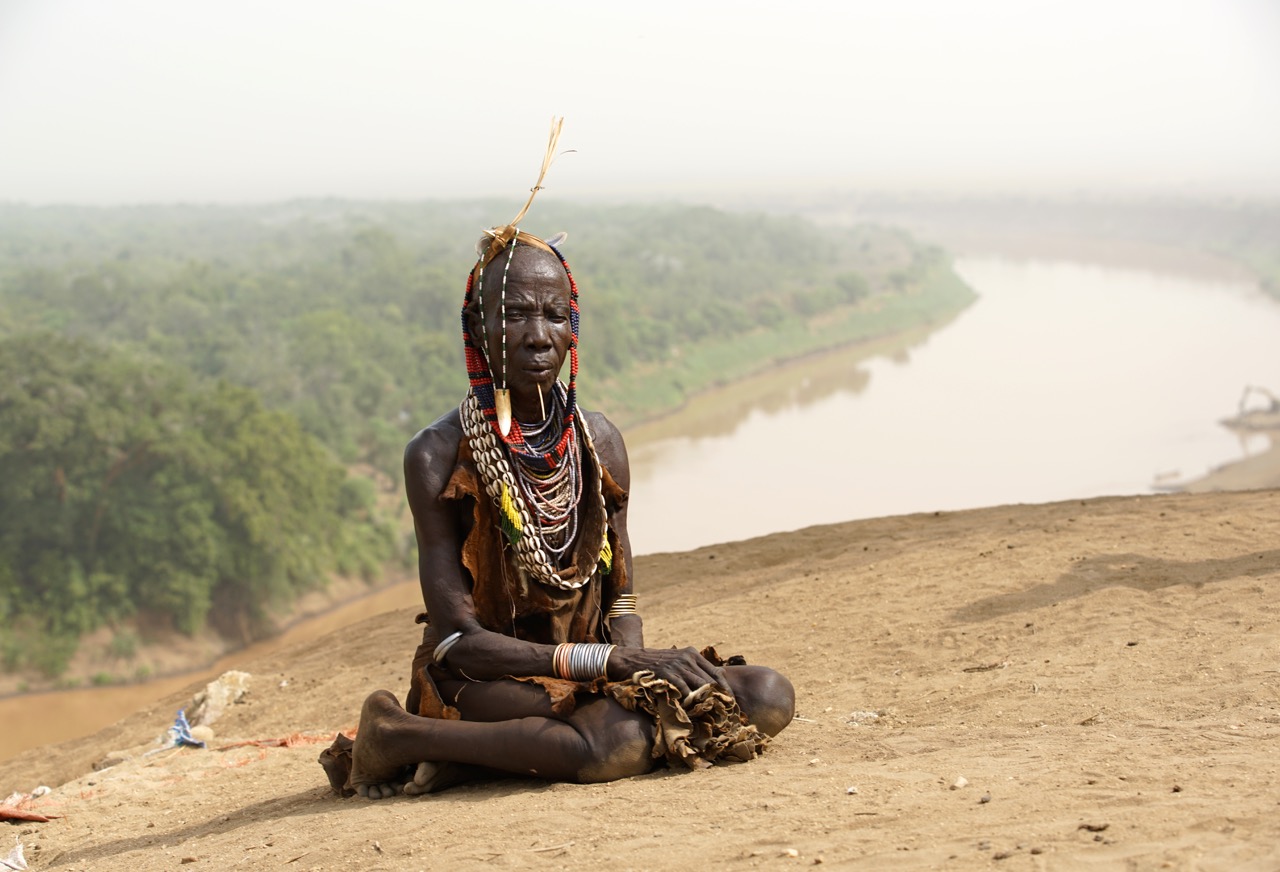
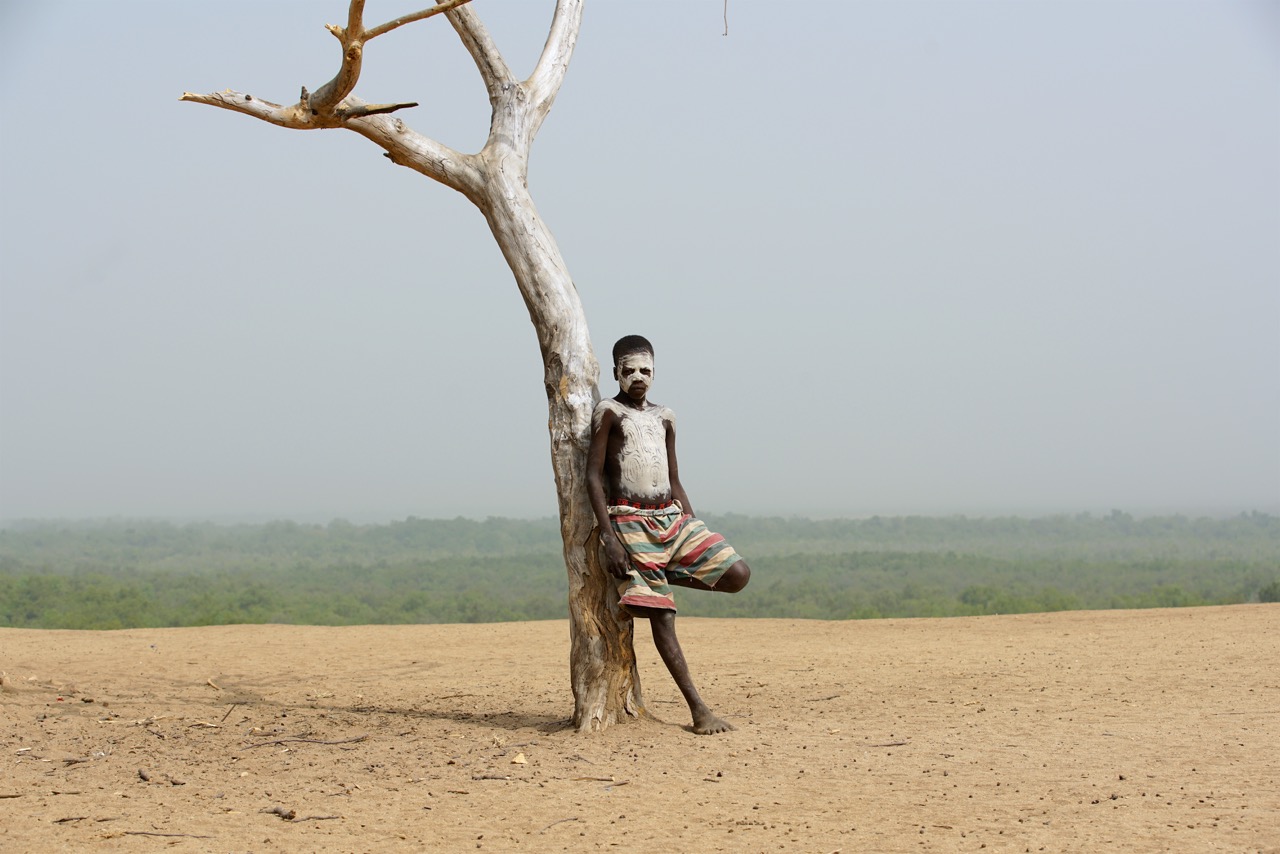
Beauty is an important aspect of the Karo’s cultural tradition and for the women, it is literally ingrained deep in their bodies. Women inflict lacerations and cuts on their chests, stomachs, or backs to produce intricate patterns of scars. Again, all this is done for beauty reasons, as a woman with these types of scars on her torso is considered mature and attractive. The scars are cut with a knife or razor and ash is rubbed in to produce a permanent welt.
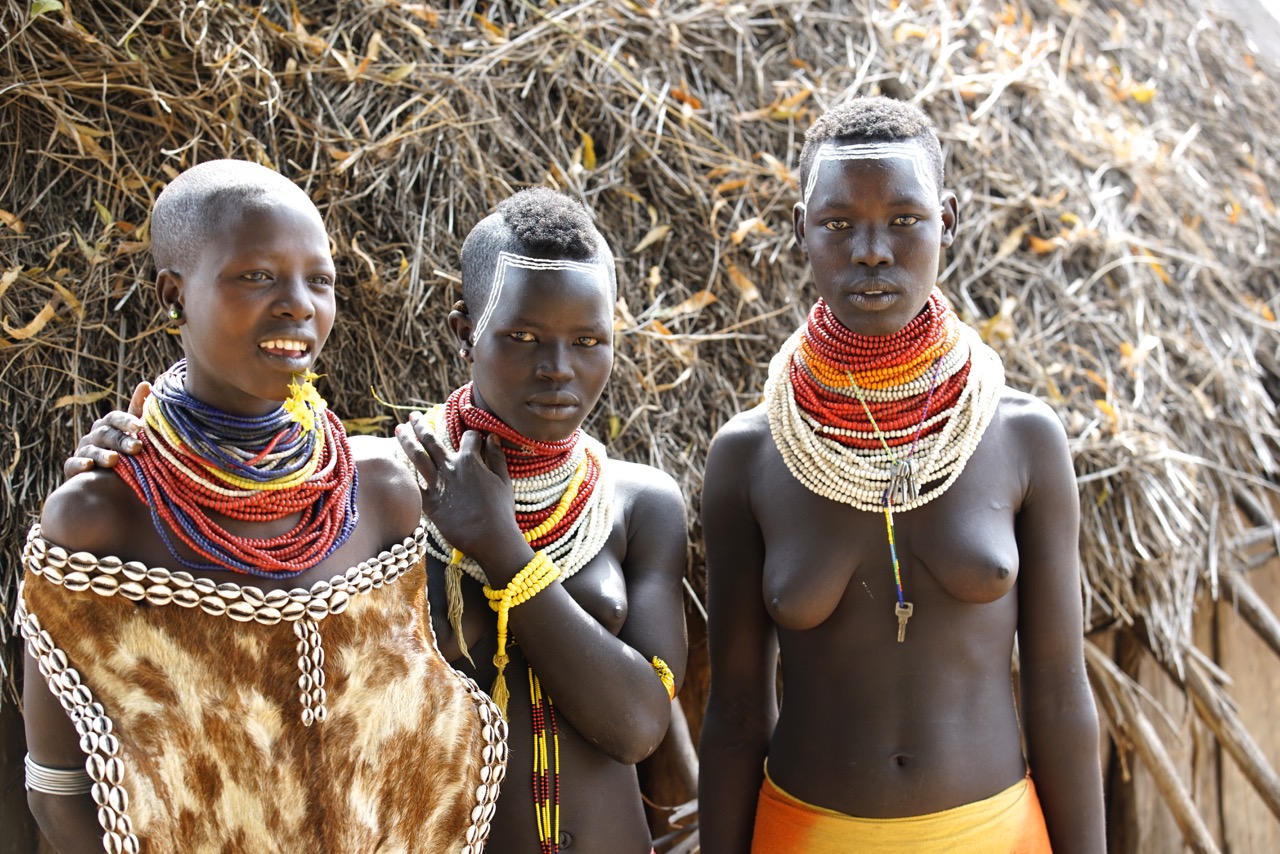
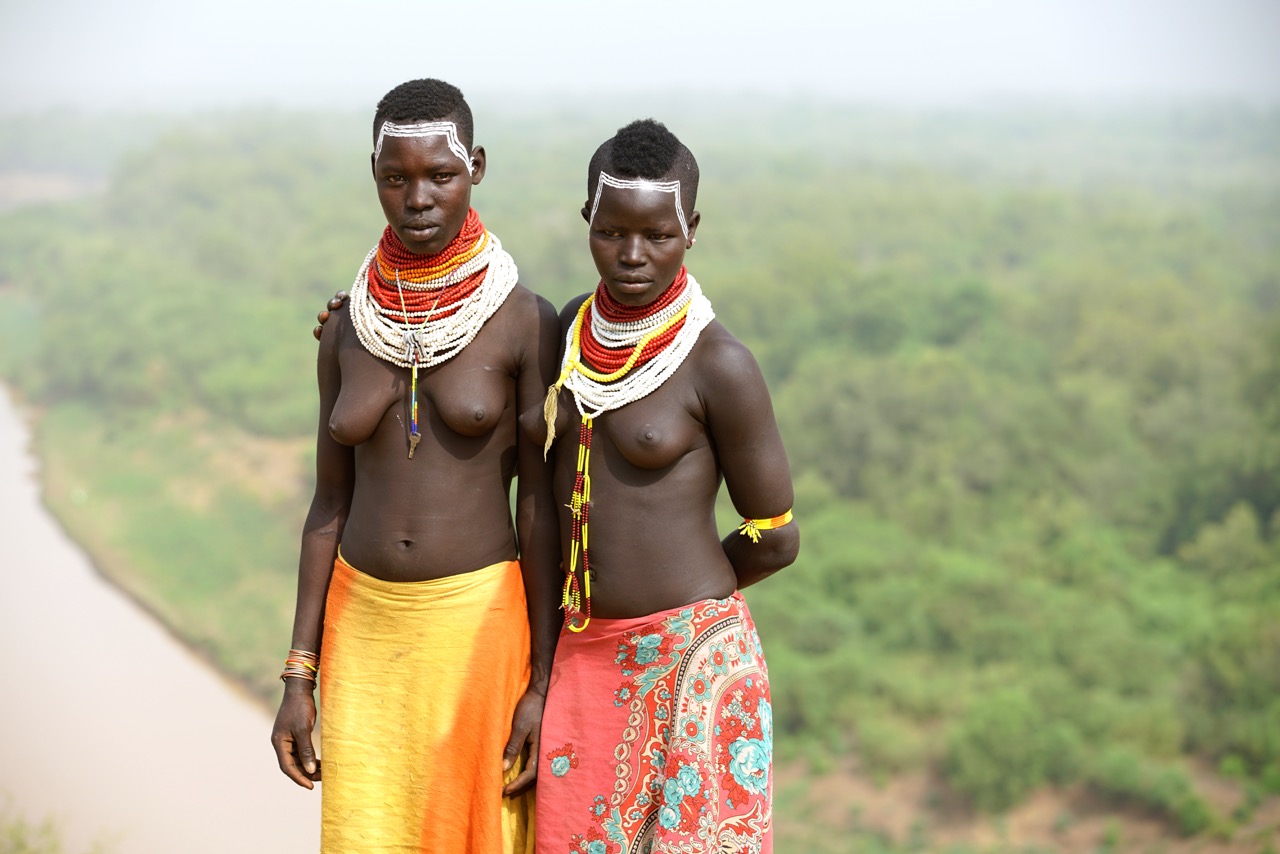
Karo women usually don only a loincloth made from hide, and drape colorful beads around their necks. They lather their hair with ochre mixed with animal fat.
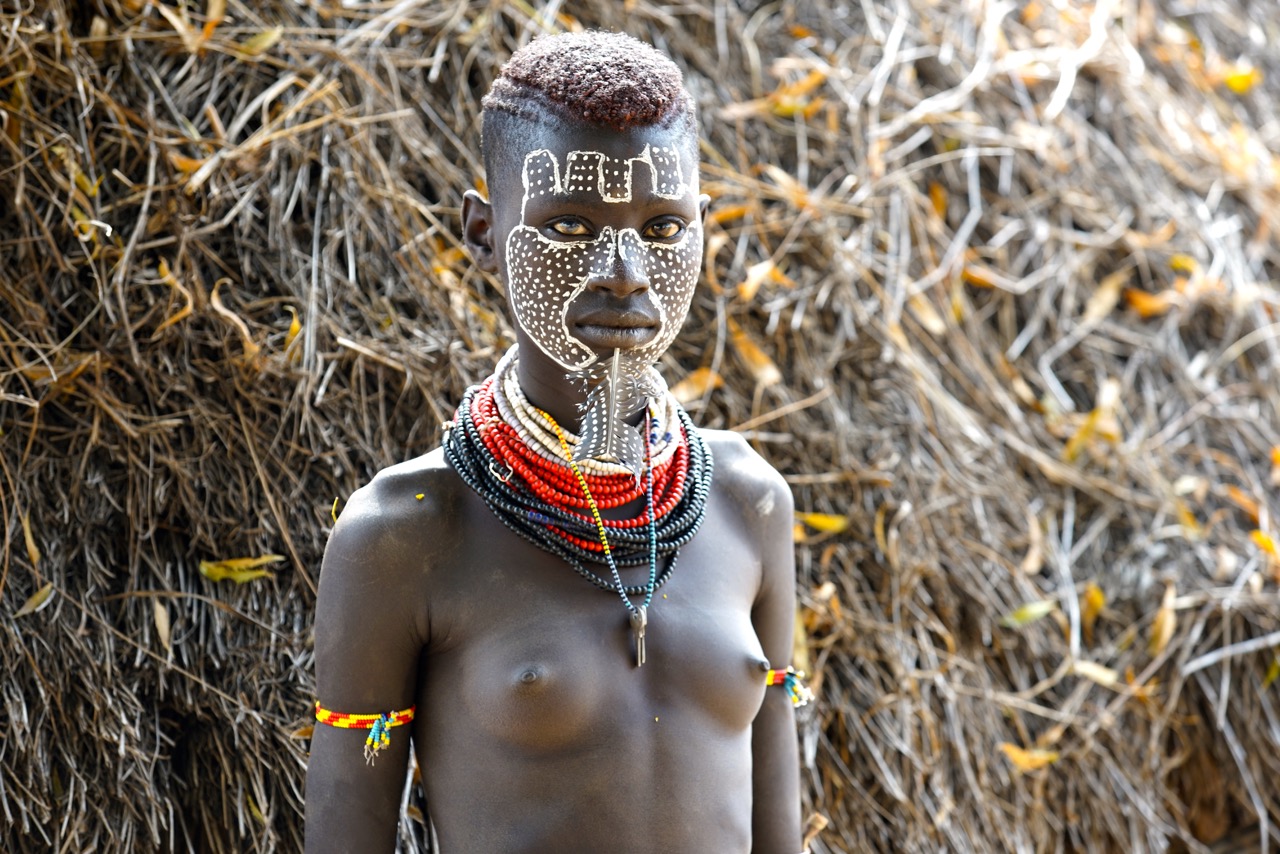
Visiting such unique places and getting confronted with surprises and challenges was mostly tiring so after leaving a tribe I often just slept beside the car (or in the car if I wanted to avoid asty insects). Next morning, after being aroused of deep sleep by kids knocking at the car windows, I moved on to visit a Hamer village. The Hamer tribe (also called Hammer or Hamar) is one of the largest groups in the Valley. The Hamer cultivates millet, vegetables, tobacco, and cotton as well as raising cattle and goats and they are also known for the beautiful pottery they produce as well as their exceptional hairstyling. Following are pictures of the Hamer tribe.
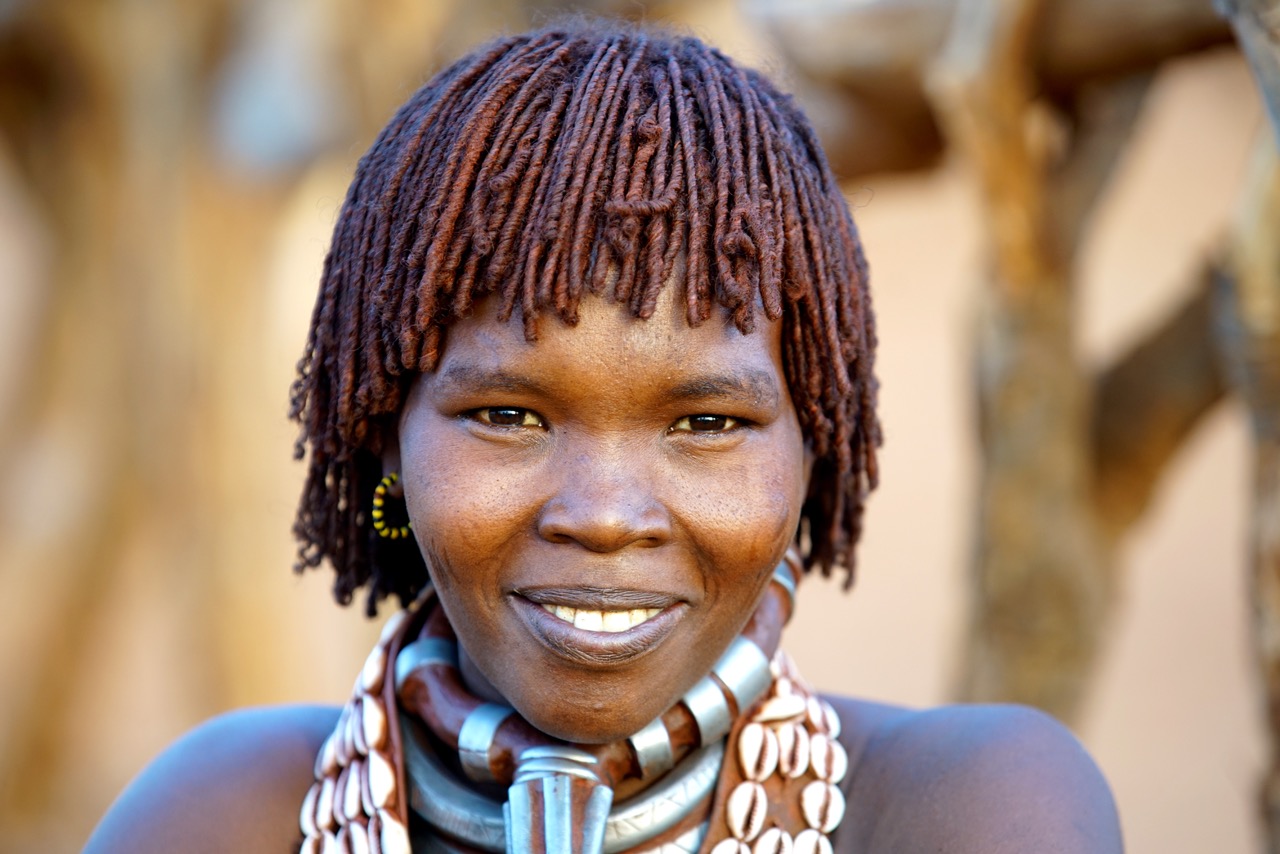
The Lower Omo Valley in southern Ethiopia is home to over a dozen different tribes, who have lived there for centuries. Forming part of the estimated 200 000 indigenous peoples inhabiting the area are the Karo, who have a population of about 1000 to 2000, making them the smallest ethnic tribe in Ethiopia, probably in the continent as a whole. The Karo dwell along the banks of the Omo River, here are some pictures of the land the leave on.
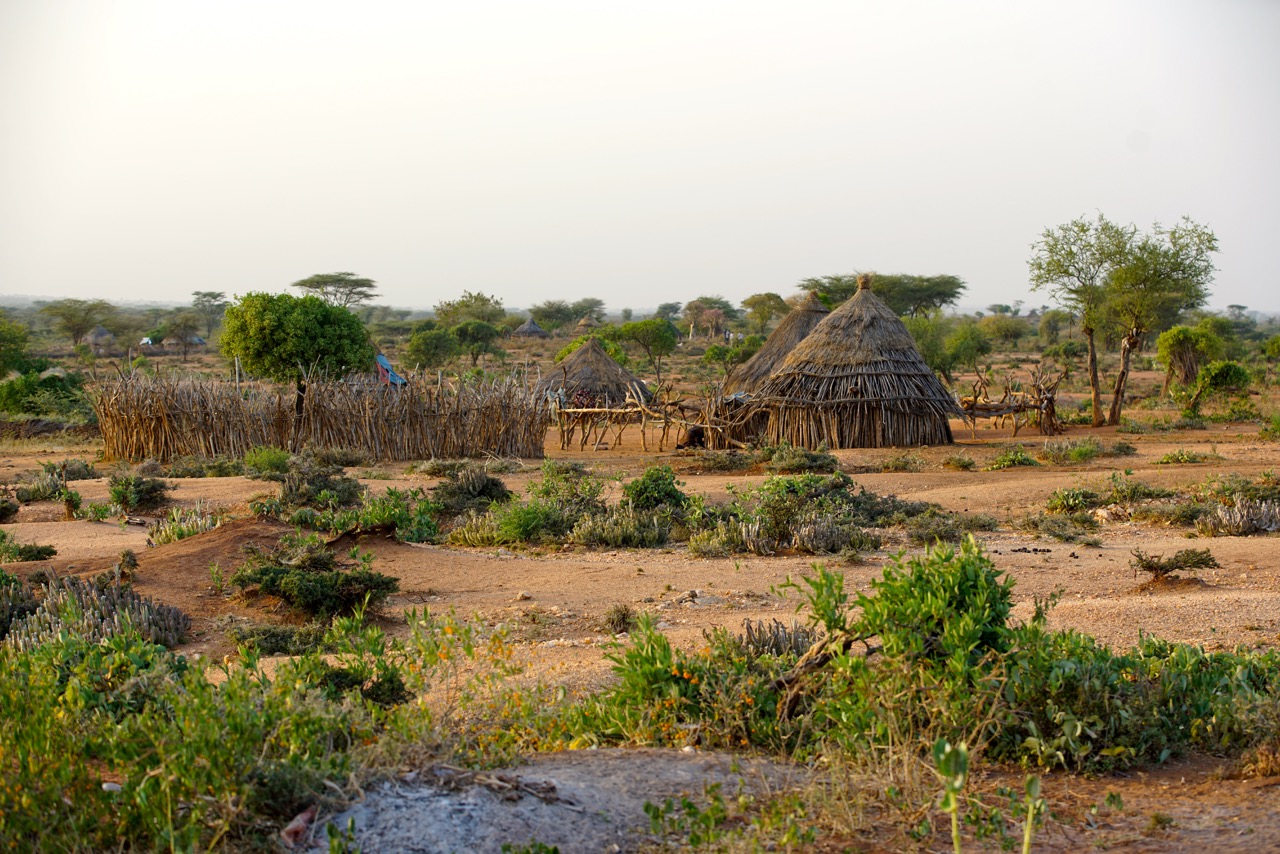
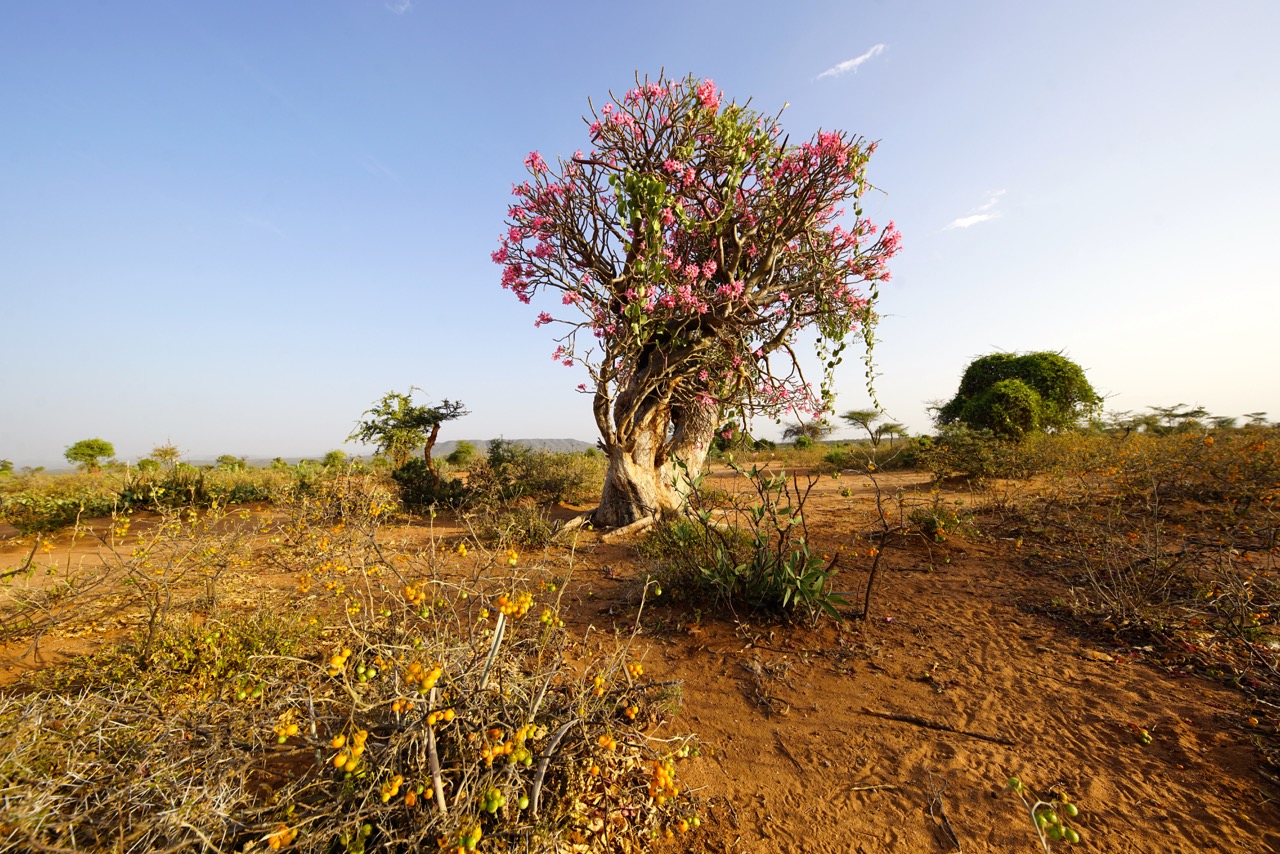
Marriage: The Hamar-Banna men do not marry until in their mid-thirties, for girls it is about 17. The parents of the sons have control over a lot of the things they do, including giving the men permission to marry. Hamar-Banna men can marry as many women as the like, as long as the women are from the same tribe. The man must also be able to pay the “bridewealth” which may consist of cattle, goats and other goods such as guns to the woman’s family; he can also get help from his close relatives in paying for his bride. A “bridewealth” is like a bank loan, but usually cannot be paid back in the man’s lifetime because it is such a large sum, about 30 goats and 20 head of cattle.
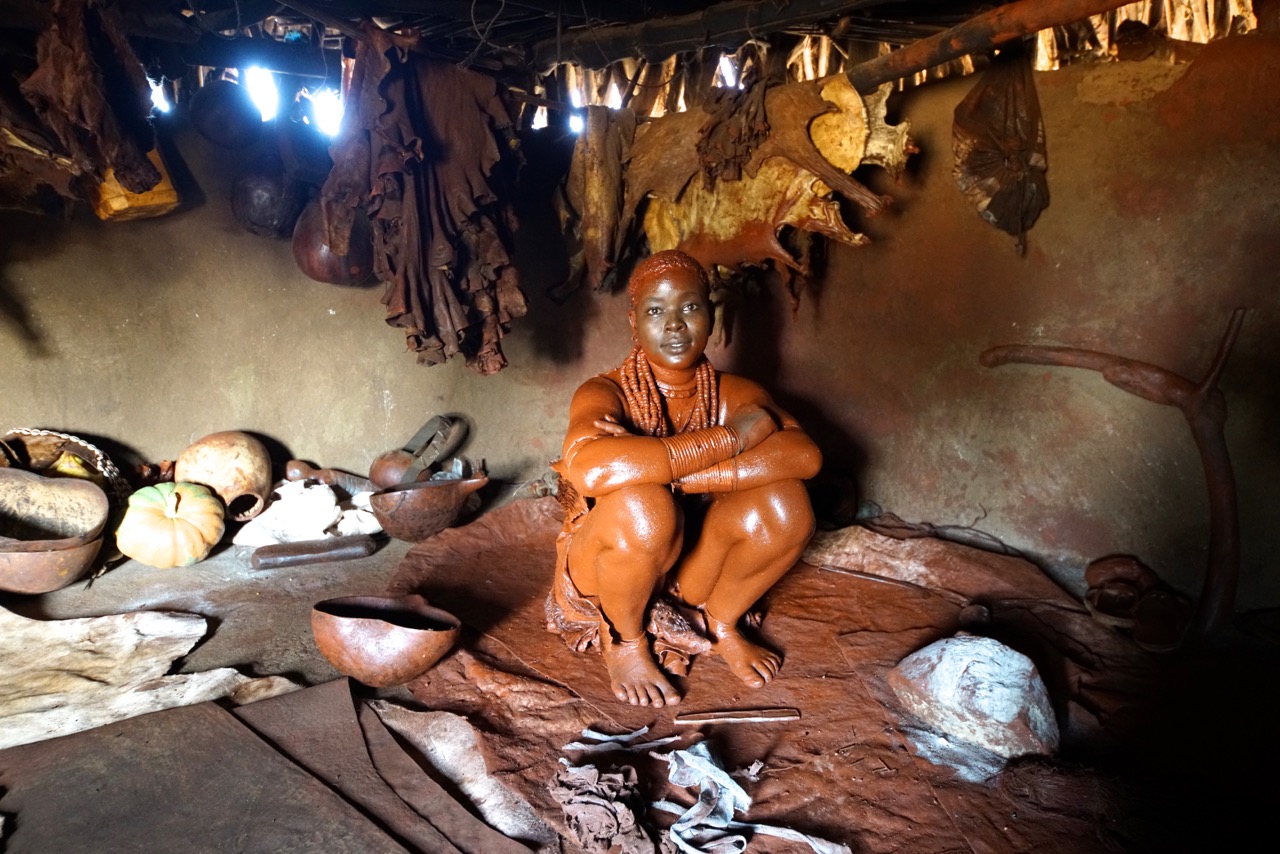
This woman will get married soon but before that, she stays for several weeks by herself in the house shown in the picture. Relatives of the family are bringing her food and she lubricates her body with animal fat and vegetable dye to make her skin even more soft and beautiful for her future husband.
Last but not least it was always the encounters with the kids which were cheerful, very moving and made all exhausting topics vanish like the never appeared. And like most places of the world the kids were unbiased, playful and totaly open for encounters.
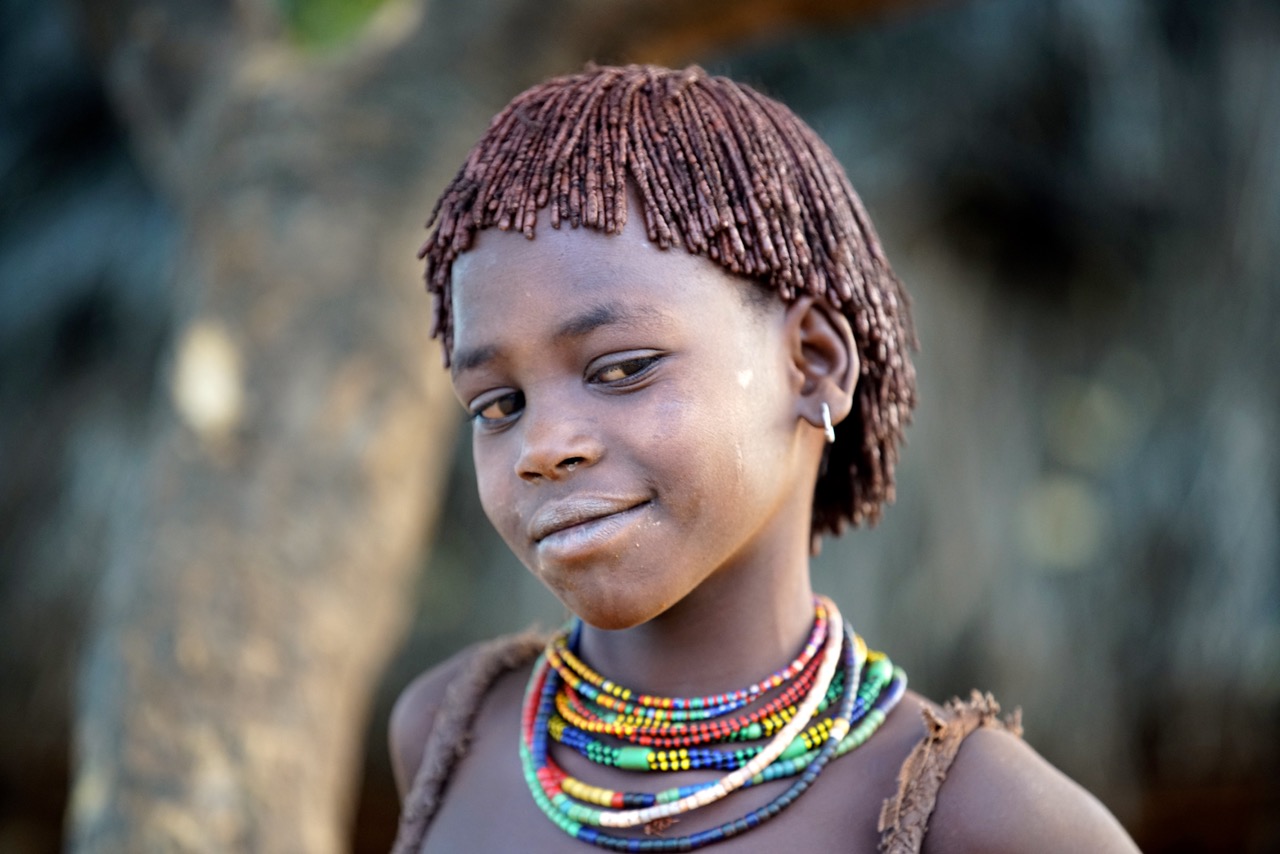
Return to Arbaminch, via Konso tribal village – As you have seen now through this brief glimpse of impressions, Ethiopia has a vast diversity of ethnic groups, and today I will witness a different behavior of another of these. I traveled north to Arbaminch (approx 270km), en route visiting a Konso tribal village – a World Heritage listed site of cultural significance. Invariably built on hilltops as protection from the lowland tribes, traditional Konso villages are surrounded by high stonewalls and encompass separate compounds, with external terraced agricultural fields. You will be fascinated by the unique architectural aspects, mostly unchanged cultural heritage and social cohesion of the village, and how it has adapted to its harsh environment. Another highlight is the famous ‘wagas’ – a funerary tradition where magnificent carved wooden sculptures were created in honor of Konso warrior heroes who have killed an enemy or animal and often grouped to represent the man, his wives, and his adversaries.
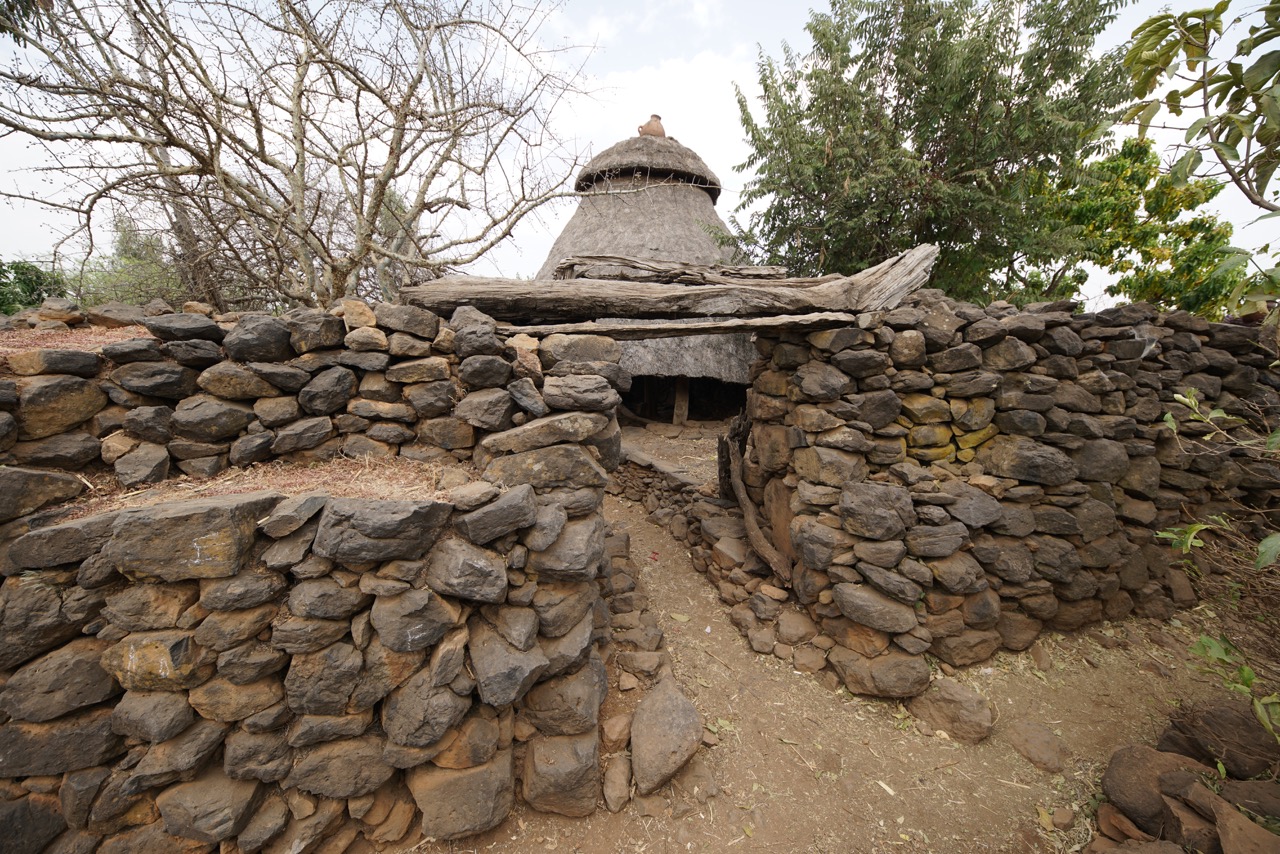
Dorze village, to Lake Langano – After a long and fascinating day, I drove to Dorze village. One of the smaller ethnic groups, the Dorze are known for their textile weaving and beehive-shaped huts. In the afternoon I continued to the shores of Lake Langano, a freshwater lake popular with locals and tourists alike for its wildlife. But first I had to try Enset or ,false banana’ bread! Enset is a plant native to Ethiopia (some other African countries as well as Asia) that is often referred as the false banana because, not surprisingly, of its resemblance to the banana plant. It is grown in the less arid highlands of the southwestern region of Ethiopia.
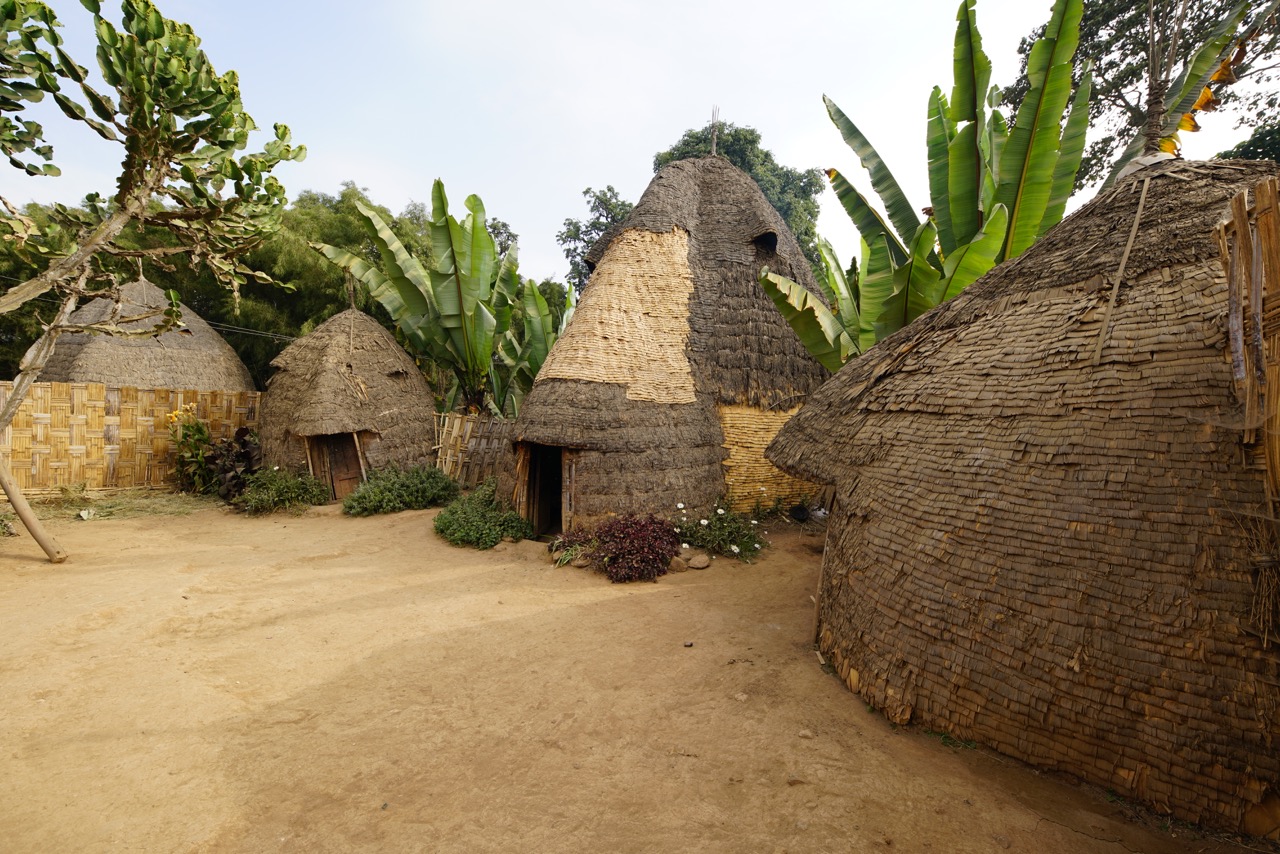
Return to Addis Ababa – This morning I relaxed at the lake before driving back to Addis Ababa (approx 210km) for the Ethiopian Christmas Eve celebration, passing more Rift Valley Lakes on the way. Christmas in Ethiopia, like most other Christian holidays, is celebrated in its own unique way. Falling on January 7th, the holiday of Genna or Ethiopian Christmas (also known as Lidet, or “birthday”), does not hold as prominent a place on the Ethiopian calendar as it does in other parts of the world. Easter (Fasika) reigns as the preeminent Christian holiday, but Genna nonetheless remains a major religious and cultural event throughout the country.
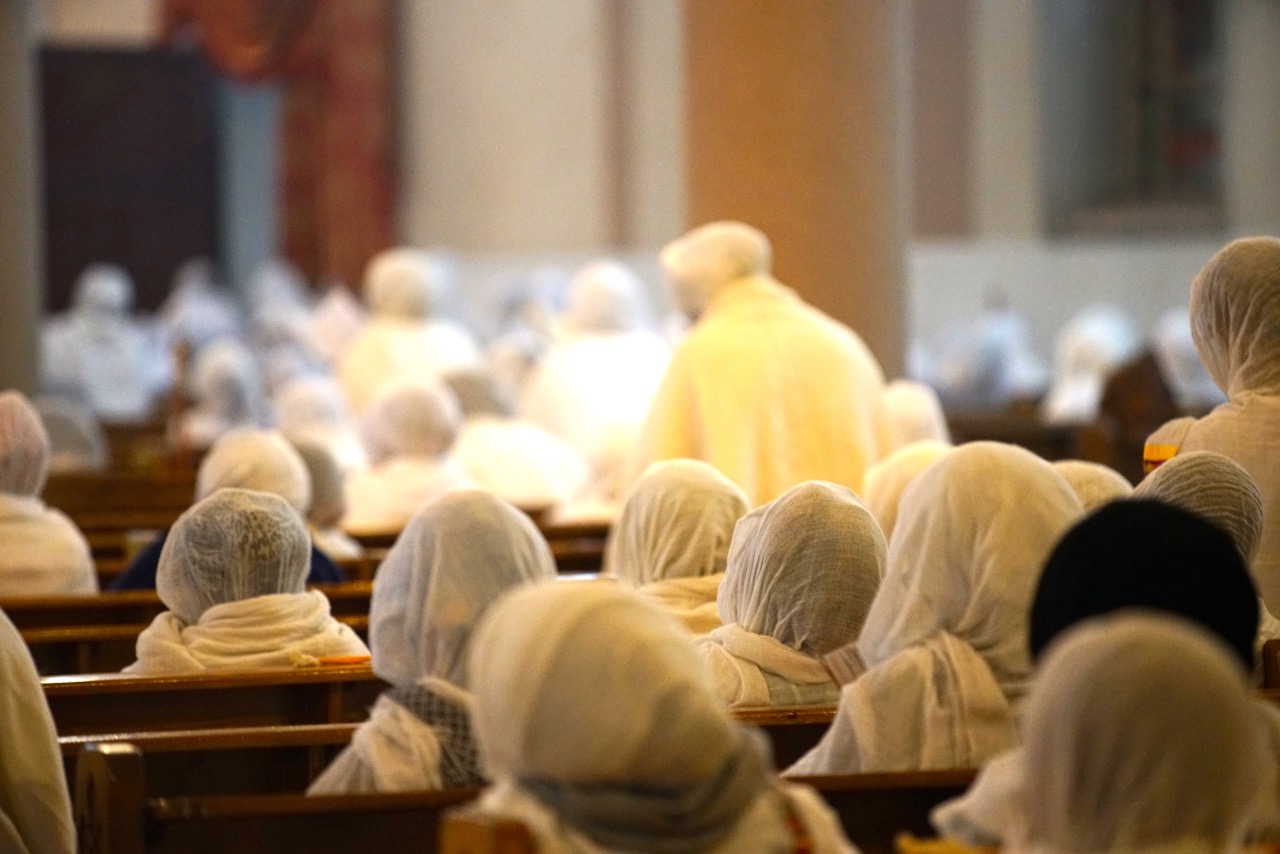
Country information: Ethiopia, the ‘Horn of Africa,’ is situated north of the Equator in north‑eastern Africa. Long known as Abyssinia, it stands between the cultures of the Mediterranean and the tribal people of Africa and boasts the origins of humankind. Ethiopia is one of the largest countries in Africa in both area and population, with an area of 1,235,000 square kilometers it is around twice the size of Kenya or France. The population is approximately 82 million – with the densest population in the fertile central highlands. Much of Ethiopia is still wild and fosters a naivety and freeness of spirit. It has been able to keep its sharp, independent character and not be marred by the ways of the colonists, still retaining ancient cultures untainted by western influences. It is this uniqueness that gives Ethiopia such a magnetic appeal. Its people have incredible resilience and show real pride in their culture and civilization which is apparent in their many colorful celebrations. Nearly 90% of all Ethiopians are engaged in farming and cattle‑raising and live in the countryside. The peripheral inhabitants of Ethiopia lead a nomadic and pastoral way of life, whereas the central highlands support farming communities. The Christian highland peoples have followed a biblical, moral and civil code of behavior for over 16 centuries. To experience Ethiopia’s rural culture and traditions as well as the diversity of this remote land with its incredible people is a memorable adventures experience.
Suggestion: If you travel to Ethiopia to visit some of the ethnic groups with the intention to take photographs, keep in mind that you have to pay for the pictures taken. Maybe you consider swooping photographs for groceries as I did, even it did not work out everywhere, but on many occasions it did! Bringing gifts for the kids is of course very compelling, and so I brought 50 small containers with soap bubbles and many coloring pencils. I need to point out the fact, to prevent disappointment, that in many places the coloring pencils caused a big question mark since most of the kids have never seen paper!
Roland Hummer, Ethiopia January 2018
